
Admin
-
Posts
7,469 -
Joined
-
Last visited
Content Type
Profiles
Forums
Events
Store
Gallery
Community Map
Posts posted by Admin
-
-
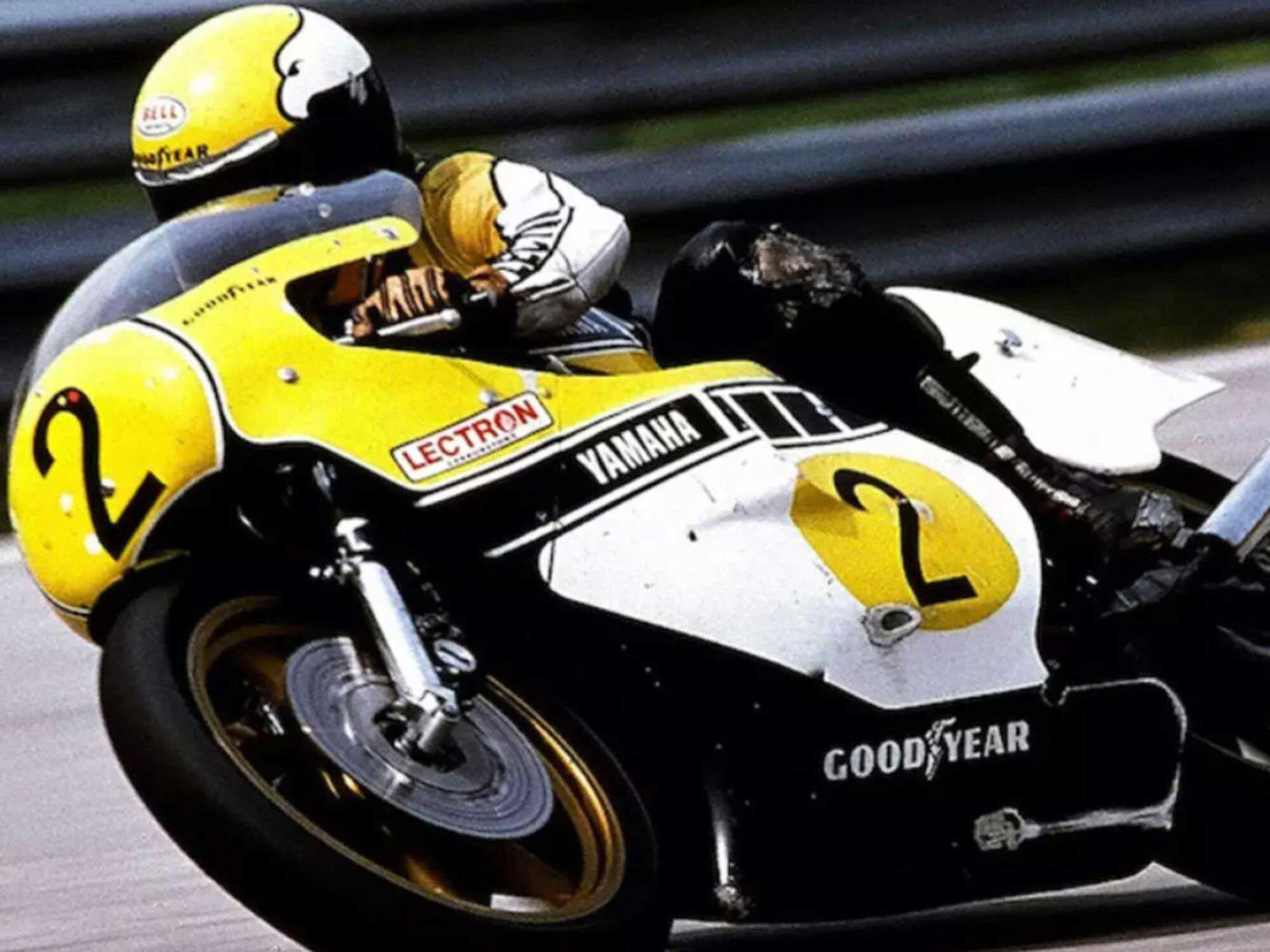
Determination is key to motorcycling happiness and success, just ask Kenny Roberts Sr. (Cycle World Archives/)“A major part of what makes a champion is determination; it’s more important than natural talent because there is so much that you can learn and work on.”
This eighth Lesson Beyond the Classroom begins with a quote from Kenny Roberts Sr.’s Techniques of Motor Cycle Road Racing book, published in 1988. The three-time 500GP world champion refers to “determination” throughout the book, and it’s a word that many new riders may not have heard in relation to motorcycle riding.
“There are plenty of [riders] who obviously have a lot of natural ability but never make it, so determination has to be the biggest thing.” —KRSR
Kenny’s focus on determination and desire is familiar to Champ School graduates because we include it in our curriculum. Riding motorcycles well could be one of the most challenging endeavors civilians undertake, and the inclusion of Kenny’s quotes is meant to encourage the thoughts that got students to our door: “I’d like to ride a motorcycle. I think I’ll pay for a school with my precious money and time.” That is desire and determination, so now the pressure is on the instructors to make that desire come true.
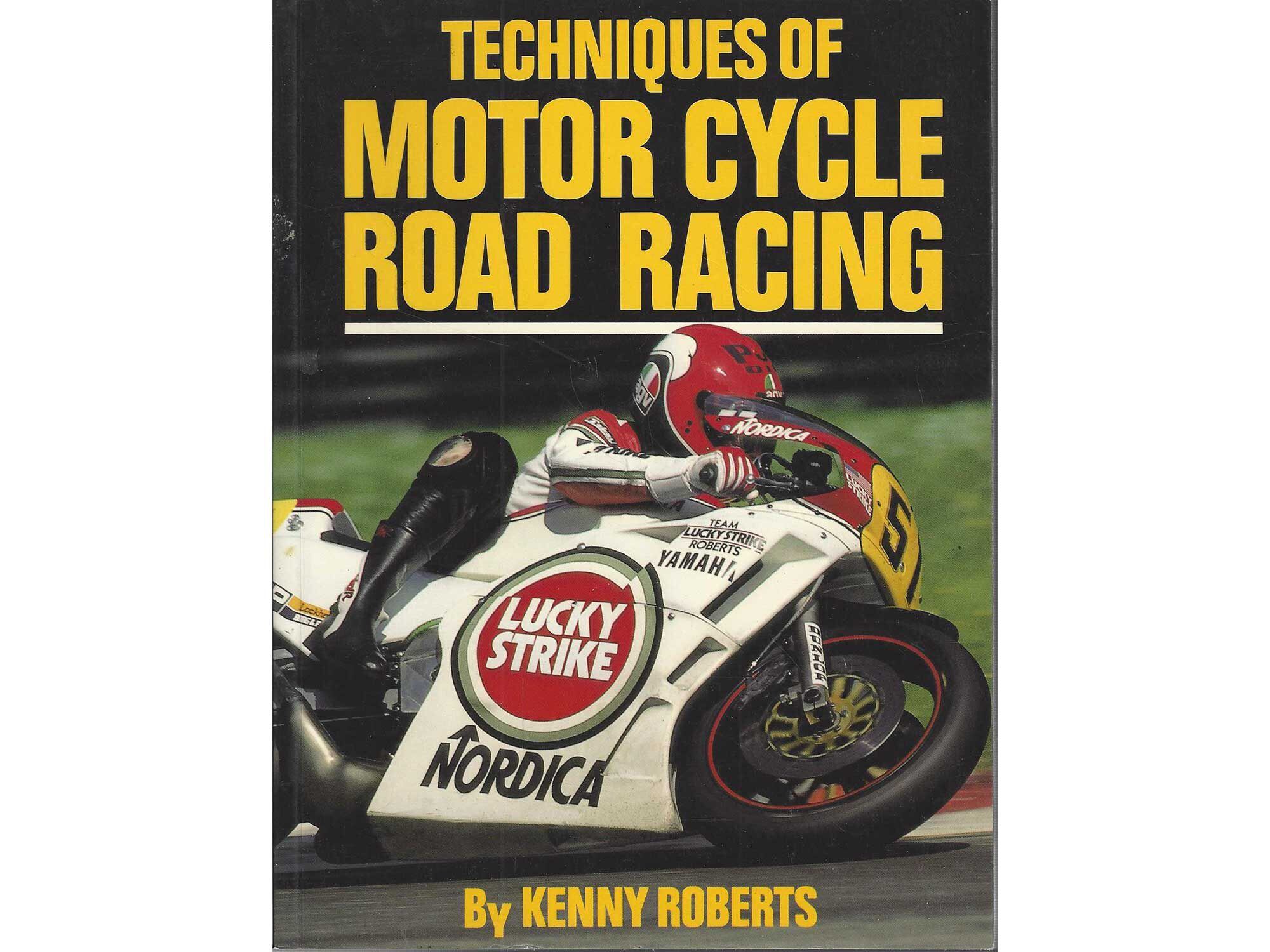
The beginning of every Yamaha Champions Riding School begins with a quote from this book. (Amazon/)As you can imagine, we have had an incredible variety of students through our door. We have never advised a student that they shouldn’t ride, though we hear that happens in our industry. Our decision to work flat out with every student who shows the desire to come to our school is based on what Kenny Roberts believes in: Determination to excel is the most important ingredient. Because of this determination, amazing things happen at the school because we never give up on someone who has it.
Determine to Do This
These articles are aimed at new riders or riders who have lost the love of riding through crashes or simply not having fun. This last rider is represented in your local classified ads when you see a low-mileage bike for sale with all the riding gear and extra oil filters. That rider is done. At one point they had determination to ride, but now the bike and gear are for sale. If you have someone like that in your life, let them know about Kenny’s outlook; send them this article.
RELATED: Motorcycle Lessons Beyond the Classroom
RELATED: Motorcycle Lessons Beyond the Classroom, Part 2
RELATED: Motorcycle Lessons Beyond the Classroom, Part 3
As we have discussed over these years of articles, the motorcycle is designed to work best (safest at the speeds you choose) with certain approaches and exacting inputs. When those approaches and inputs are significantly different from the approaches and inputs of the expert-level designers of the bikes, the bikes do not work as designed. That’s scary. The bike won’t turn into the corner. It won’t stay on line. It provides no feel. Traction is sketchy. Speed control is a crapshoot. The faster we ride, the worse it gets. Bike for sale.
Kenny recognized this and wrote, “Riders might get to a certain point because they have some natural talent, but every year they have to look objectively at their skills, where they can make them better and what they have to do to go faster.”
One of the most talented motorcycle riders in history shows us the way by example. He didn’t think, “Well, I’m getting beat so I’m just not good enough.” He asked, “Why am I getting beat and what can I do to get better?” That is his message to all riders who have a smoldering passion for two wheels but are struggling with safety and enjoyment.
RELATED: Motorcycle Lessons Beyond the Classroom, Part 4
RELATED: Motorcycle Lessons Beyond the Classroom, Part 5
What is hurting your enjoyment? Follow Kenny’s lead and determine to find the answers. Something you’re doing on the bike is getting in the way of the riding joy you seek. Kenny has worked with more great riders than almost anyone in the world and prizes the determination to succeed over everything else. His opinion is based on watching riders succeed or fail.
Passion Meets Process
Loving to ride or even just wanting to ride is not the determination Kenny writes about. He is referring to the determination to improve your riding. If you think he’s referring to roadracers only, know that mistakes made on the track are often significantly less dramatic than mistakes made on the road.
Kenny’s approach with his roadracing proteges aimed them at repeatedly fast lap times and that took in everything from fitness to diet, bike setup, and line choice. The racers who succeed on the track must find the answers to a myriad of problems, and successful street riding has its own wide variety of challenges.
Look at the places you struggle: where your bike is not in the right place, where your eyes are late, your focus low, the times you coast “out of the controls,” the times you are surprised or lose traction, or are abrupt, or the bike runs wide. Determine the answers to these problems and stay determined to make the fixes.
There isn’t a world championship waiting at the end of a street riding season, but to quote my friend and YCRS instructor David Bober, “What is your podium? Running inch-perfect lines on the way to breakfast? Showing up at your first trackday and getting bumped to Intermediate right away? Finally mastering that new, fast bike? Riding an unknown road with smoothness and joy?”
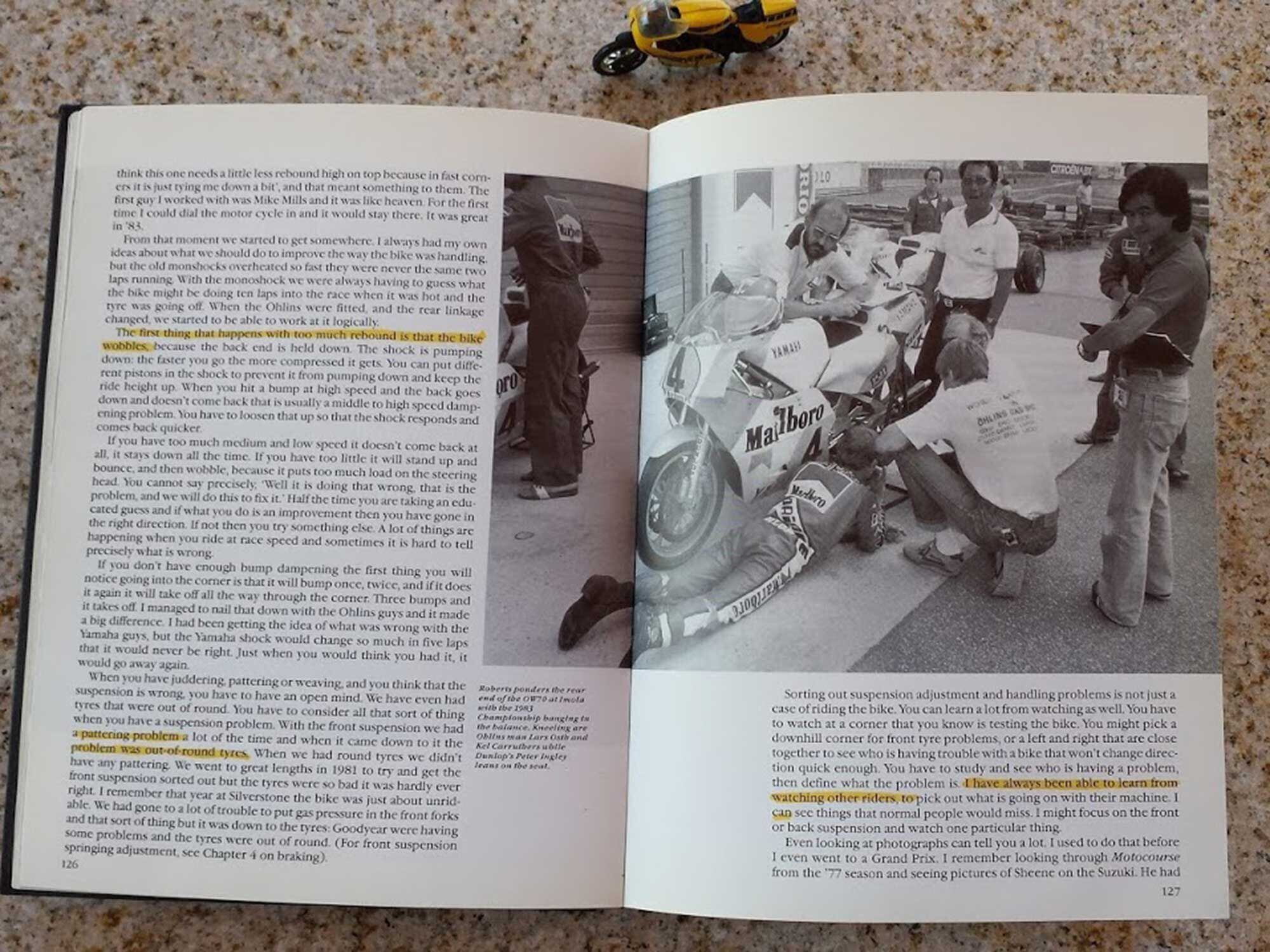
Determine to study and you will find success. (Nick Ienatsch/)Whatever your podium is, Kenny Roberts and I believe you can reach it—not because of the skills you were born with, but because of the skills you are determined to build and hone. We don’t care what your riding past contains; we care that you are determined to be a great rider through best-practices processes that can be learned.
RELATED: Motorcycle Lessons Beyond the Classroom, Part 6
RELATED: Motorcycle Lessons Beyond the Classroom, Part 7
Let’s close with this with an insight from author Peter Clifford’s forward to Kenny’s book:
“It is quite obvious from listening to Roberts that the technical ability to ride fast round corners is only half the story. You have to be impressed with the guy’s determination, the irrepressible drive to be the best and always give 100 percent. I know that Kenny Roberts feels that giving everything is a prerequisite of success. If you are prepared to do that, then there are few limits to what you might achieve.”
More next Tuesday!
-
 1
1
-
-
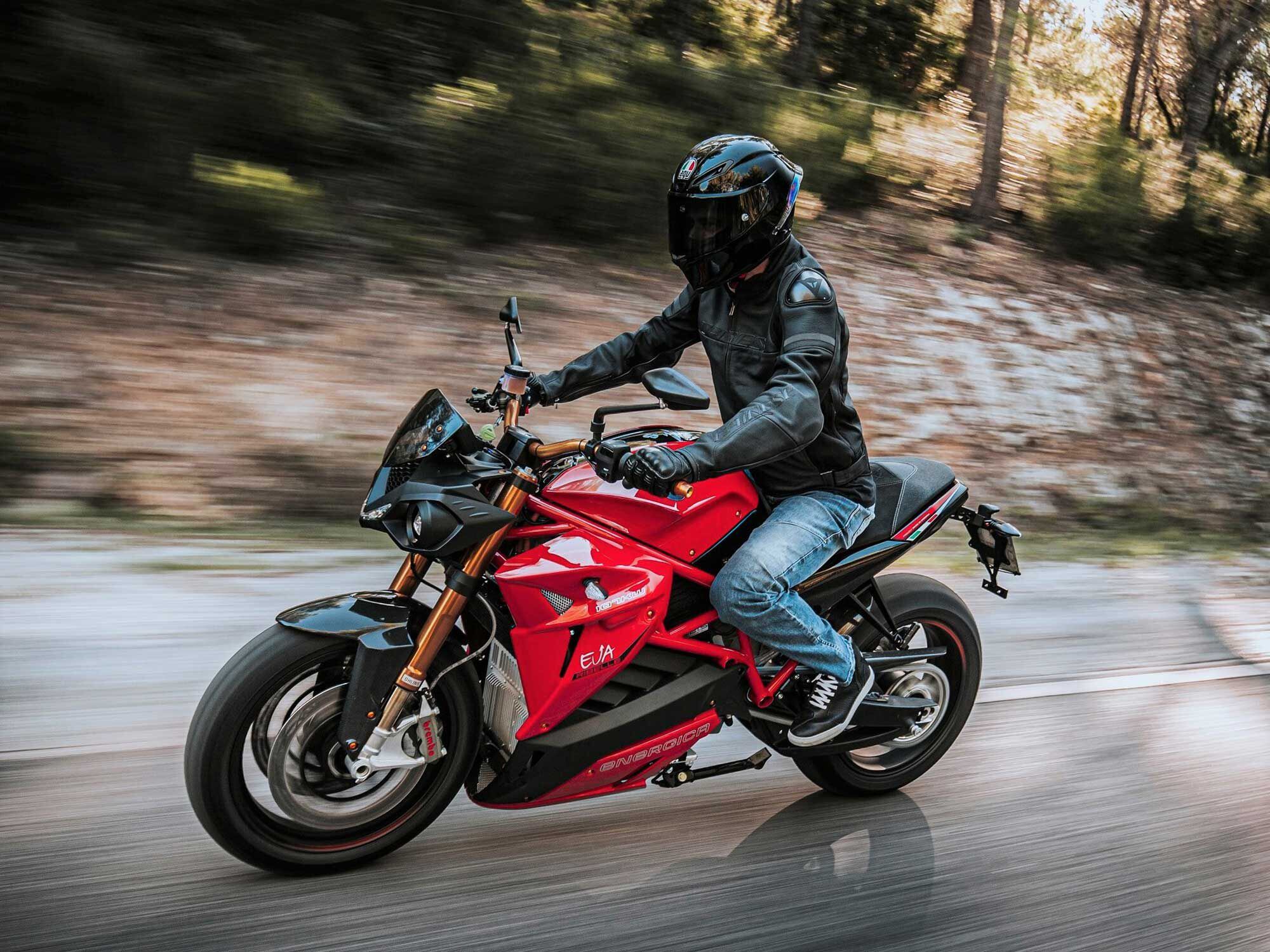
Range anxiety may still be a thing, but there’s progress on that front in the latest electric moto models. (Zero Motorcycles/) While electric motorcycles are increasingly becoming more acceptable alternatives in the commuter motorcycle market, let’s face it, range anxiety still does exist to a great degree. That’s probably why many current or forthcoming emotos are being marketed under the “urban lifestyle” banner, a segment that looks to target commuters, students, and those looking to slim down their carbon footprint, but that don’t easily slot into the general streetbike market. But change, as they say, is a-comin’, and as proof, we’ve sussed out a couple of front-runners in the range wars, all of which claim mileages of at least 100 miles combined along with faster charging times than in the past. While it’s not a comprehensive list, these models (listed in order of claimed max range) might serve as beacons of hope for a less-stressful two-wheeled electric future.
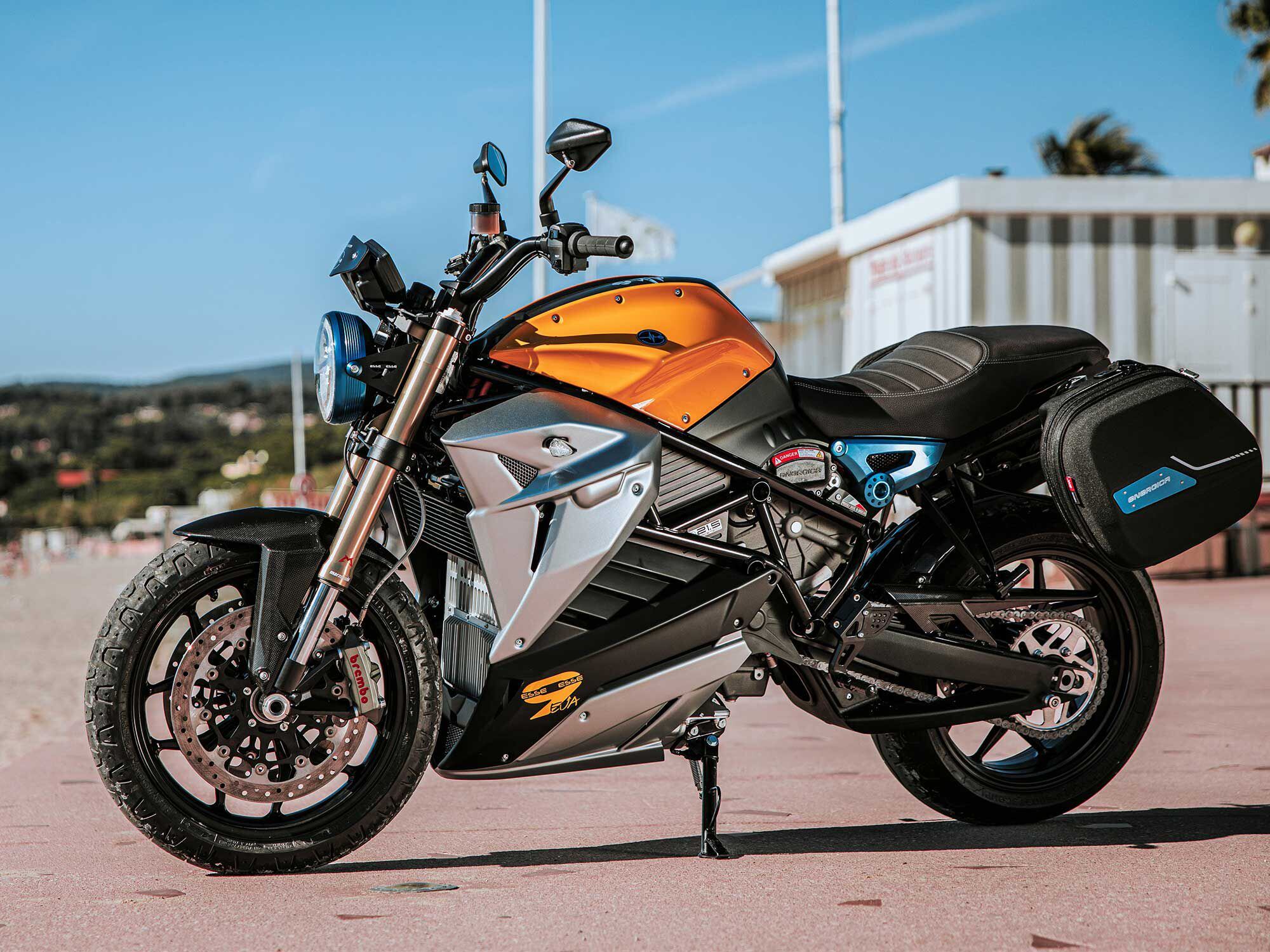
Energica’s bikes offer some of the best range in the business, with up to a claimed 250 miles per charge. Shown is the EsseEsse 9+ with optional side cases. (Energica/) 2021 Energica EVA EsseEsse9+
Top Speed: 125 mph
Power: 109 hp, 148 lb.-ft. torque
Range: 250 miles, city; 112 miles, highway; 143 miles, combined (city/highway)
Charge Time: 80% SoC charge in 40 min. (DC Fast Charge Mode 4)
MSRP: $21,350
Although Energica offers several iterations of the EVA model, we chose the EsseEsse9+ for its real-world approachability. Sure, the sleek Ego tops out at 150 mph and the RS versions can pull 0-60 in 2.6 secs, but because the SS9+ brings a neo-retro styling the ergos are more relaxed, with an upright riding position that won’t break your back on a commute. You can still rip it up to 125 mph if you must get your ya-yas out, but it can also be fitted with a pair of Energica’s optional sport-touring panniers and tank bag to take better advantage of the 143-mile range. The EsseEsse9+ configuration gets you a PMAC motor capable of 109 hp and 148 pound-feet of torque, along with a 21.5kWh battery pack, fast-charge capability, switchable ABS, and four riding modes. As with the other Energicas, the Eva’s battery, inverter, charger, and ABS are managed by a Vehicle Control Unit (VCU), with a 4.3-inch color display giving you all the numbers, including built-in GPS. Standard on all Energicas is a 24kW DC CCS Combo Fast Charger/AC Charger, that in Mode 4 will supposedly get to an 80 percent state of charge in just 40 minutes.
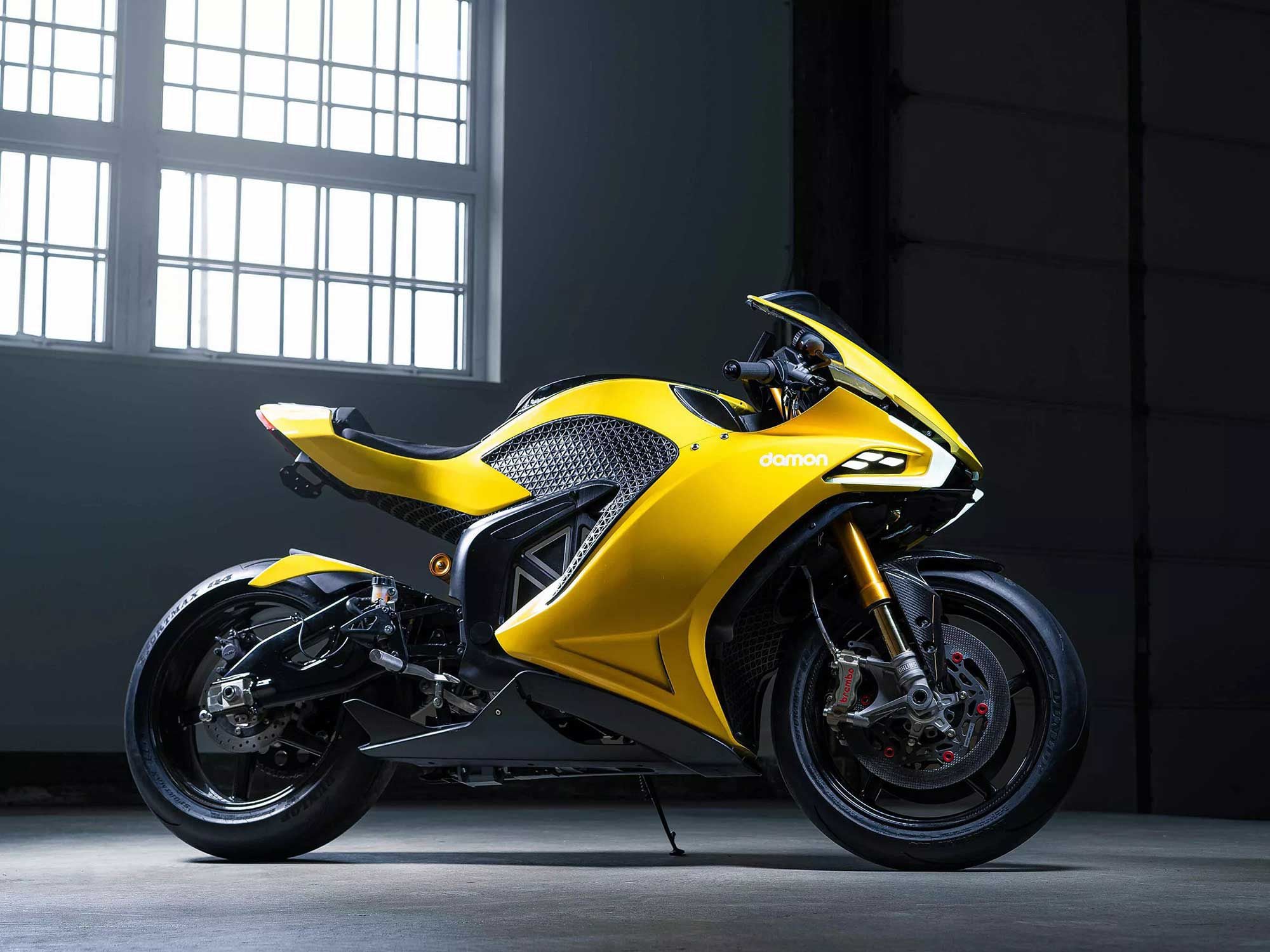
Damon’s new HyperSport model is still in production but we’re looking forward to testing some of those impressive range claims in 2021. Shown is an earlier prototype version. (Damon/) 2021 Damon HyperSport Premier
Top Speed: 200 mph
Power: 200 hp
Range: 200 miles, highway
Charge Time: 45 min. (Level 3 DC Fast Charge)
MSRP: $39,995
Also near the top of the list is Damon’s latest offering. The company makes some pretty wild claims for its new HyperSport model, released at the CES Show earlier this year, where it won Best in Innovation. The Damon HyperSport Premier (as well as the HS standard version) claims to offer a whopping 200 hp, a top speed of 200 mph, and 200 miles of range—on the highway. In the city, that mileage should go up substantially, which gives the soon-to-be-released HyperSport some of the best figures in the electric motorcycle segment right now, and in line with Energica’s claims (which likewise sports 20kWh-plus battery packs for some of its models).
But it’s not just the range that makes the HyperSport a premium offering; there’s also an onboard advanced warning sensor-driven system (dubbed Co-Pilot) as well as on-the-fly ergonomic adjustability. The bike has three charging options: Level 1 (overnight), 2.5 hours for a 90 percent SoC at Level 2, and 45 minutes to 80 percent with DC Fast Charging. The company also recently scooped up the intellectual property rights of Mission Motors, so no doubt some of that tech will be making it onto the bike when it comes out next year. The company is direct to consumer, and you can check out its offerings here:
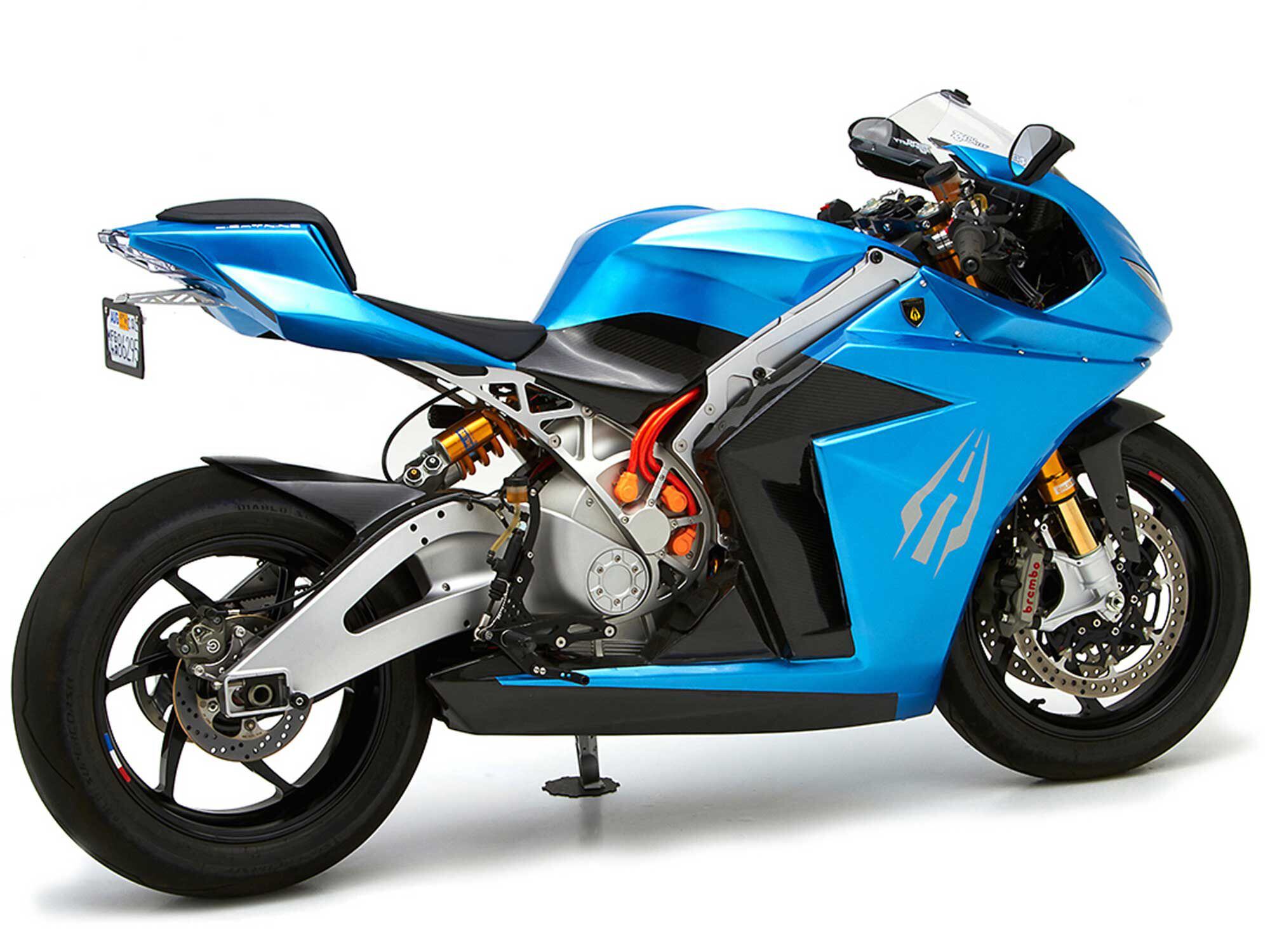
The Lightning Strike has a tasty spec sheet with impressive power and range numbers as well. (Lightning Motorcycles/) 2021 Lightning Strike Carbon Edition
Top Speed: 150 mph
Power: 120 hp @ 15,000 rpm
Range: 200 miles, city; 100 miles, highway (@ 70 mph); 152 miles combined Charge Time: 35 min. (Level 3)
MSRP: $19,998
It made big news with the announcement of the über-affordable electric Strike sportbike early last year, but Lightning Motorcycles nearly disappeared into the shadows afterward. Apparently the company (which has been around since 2009) is still finalizing some tooling for the Strike Standard Edition as well as navigating supplier delays, so for now, the Strike Carbon Edition is the only Strike model shipping, and because it’s the better-spec’d version—with a bigger 20kWh battery as well as an upgraded 6kW charger for Level 1, 2, and 3 charging options—it makes the list. Cleverly, Lightning offers different battery sizes across its line, but the 20kWh unit on the Carbon offers the best (claimed) results, delivering up to 150 miles of combined range. The beefy battery pack is coupled to a 150V (300V) liquid-cooled AC induction motor said to be good for a head-snapping 120 hp and a top speed of 150 mph. According to CEO Richard Hatfield, the Carbons are currently being delivered to customers as promised, albeit a little later than first promised.

You can opt for the higher-spec and better-looking SR/S or SR/F, but the less expensive SR has the best range in the Zero portfolio. (Zero/) 2021 Zero SR
Top Speed: 102 mph
Power: 70 hp @ 3,500 rpm
Range: 179 miles, city; 90 miles, highway (@ 70 mph); 120 miles, combined
Charge time: 95% SoC charge in 120 min. w/ Charge Tank option (Level 2)
MSRP: $17,990 (w/ optional Charge Tank)
There’s no shortage of electric options from Zero, which offers a whopping nine models in its lineup for 2021, but the street-biased SR is the one that claims the longest range of the bunch. It claims to extract 120 miles of mixed riding from the ZF14.4 power pack (an upgrade it received this year), and the SR’s Z-Force 75-7R permanent magnet motor is also no slouch in the performance department either, producing up to a claimed 116 pound-feet of torque, with 70 hp on tap. For 2020, the SR got a price drop, the bigger 14.4kWh power pack, and a host of other series-wide improvements to the Cypher operating system. Add the ZF14.4 Power Tank option, and you can boost range even more, up to 223 miles in the city, which is more than respectable for an electric. But you’ll need the 6kW Charge Tank (a $2,500 option) for faster charging, and although Zero’s higher-spec SR/F and SR/S models have more horsepower (100.2 as tested), higher city ranges, and dizzier top speeds, the SR’s combined miles claim is the winner here.
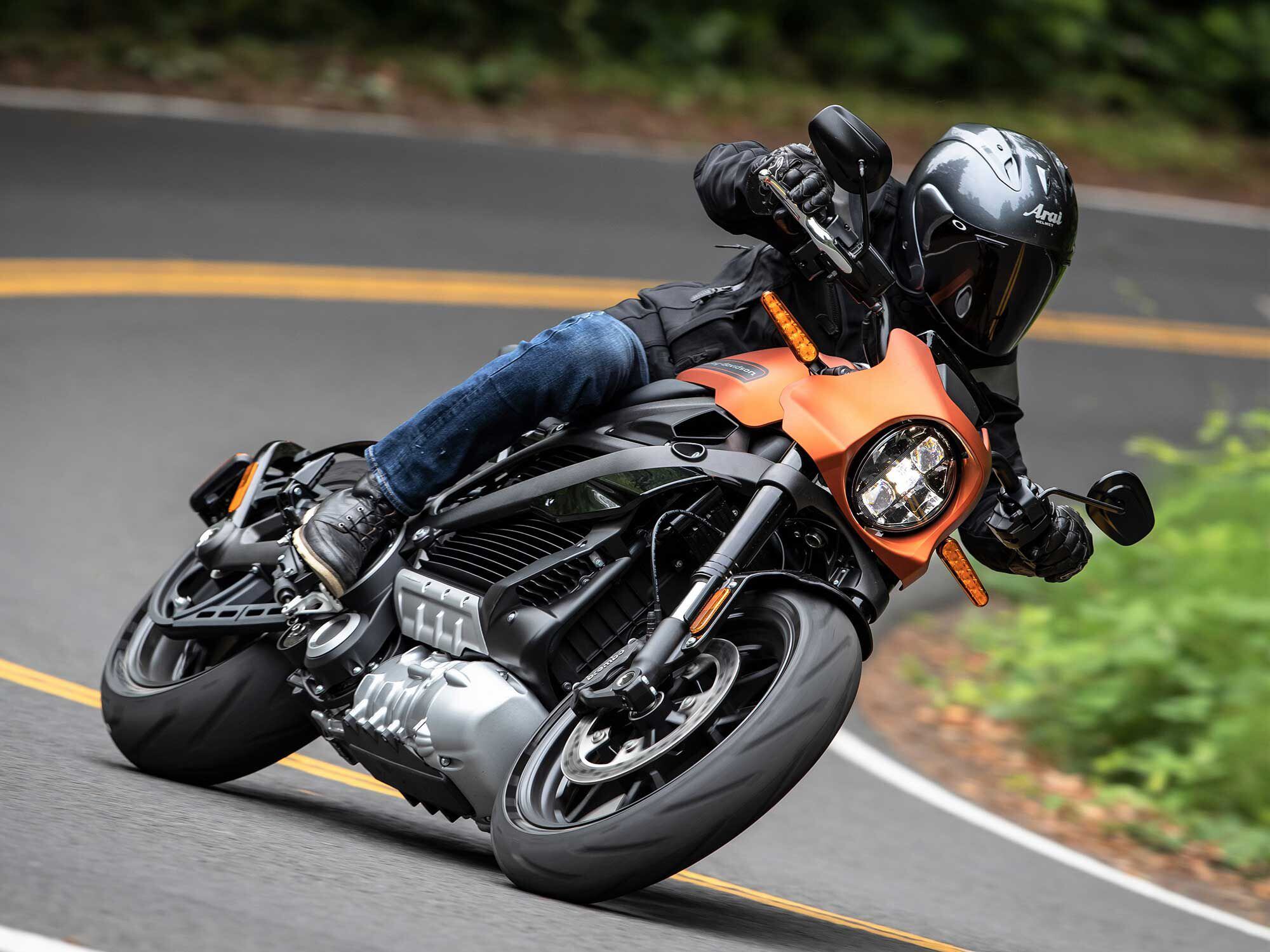
It’s not the cheapest electric here, but you’re paying for a well-regarded halo product with good range and a huge dealer network. (Harley-Davidson/) 2020 Harley-Davidson LiveWire
Top Speed: 110 mph
Power: 105 hp Range: 146 miles, city; 95 miles, combined Charge Time: 80% SoC in 40 min. (Level 3 DC Fast Charge)
MSRP: $29,799
The first electric motorcycle from a mainstream manufacturer had an awful lot to live up to when it was released last year, but the LiveWire mostly hit its targets, even if you take the price and charging options into account. The liquid-cooled permanent-magnet Revelation motor makes it seriously quick, with the LiveWire going 0-60 mph in just 3.12 seconds in our testing, while the high-voltage 15.5kWh lithium-ion battery supposedly delivers 146 miles of distance in town or 95 miles in stop-and-go combination riding (close enough to our cut-off), enough to placate any anxiety on most commutes. The onboard charger works at any public Level 3 DC Fast Charge station and gets you to 80 percent in 40 minutes or back on the road with a full charge in an hour (if you can find that station). In our in-depth road test of the LiveWire, we wrung out 92.8 hp on the dyno with a max reading of 74.2 pound-feet of torque, so the numbers H-D claims are pretty much in line with our testing results.
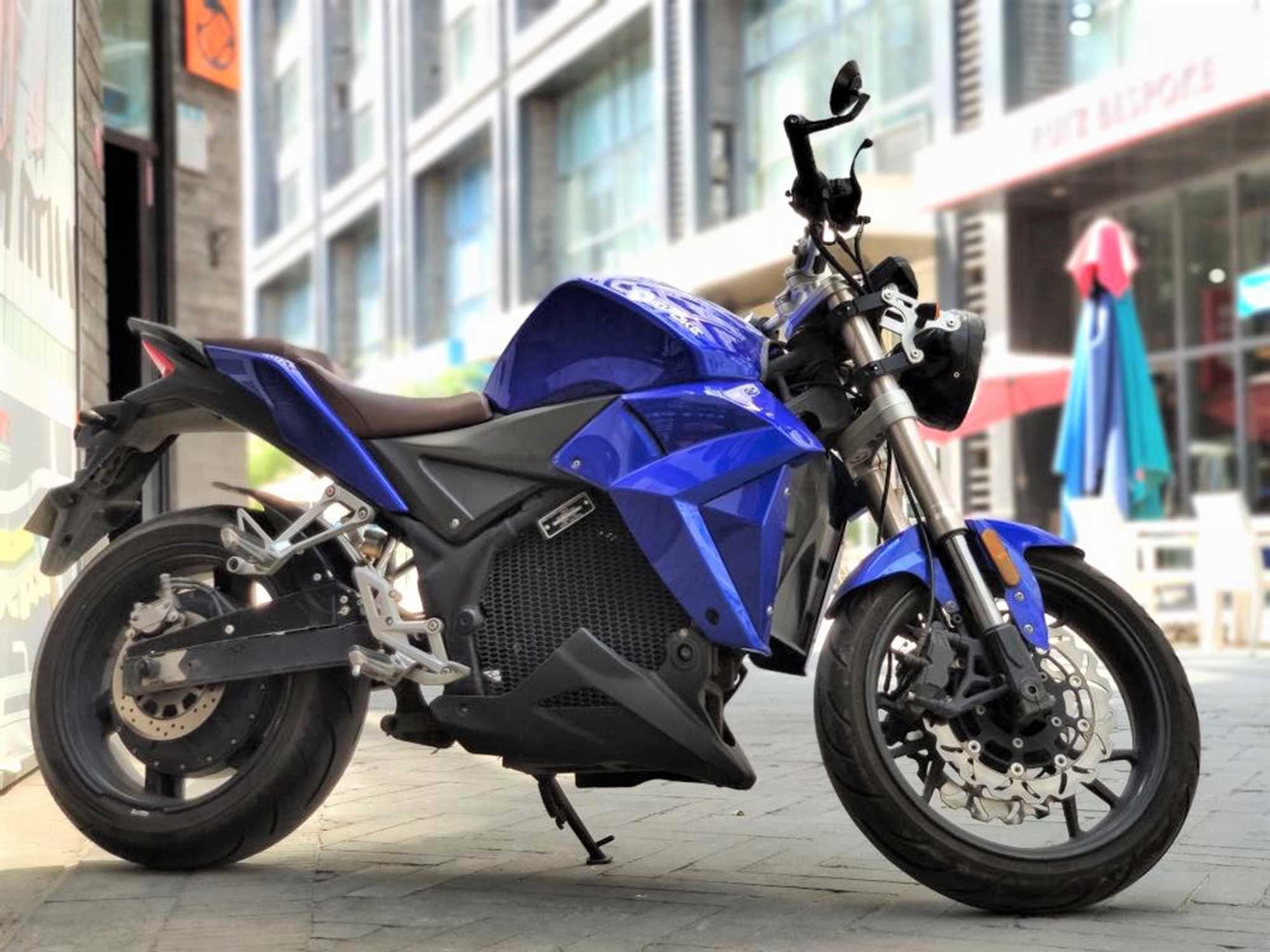
If you’re on a budget, the more affordable Evoke Urban Classic should fit the bill for low-speed commutes. (Evoke/) 2020 Evoke Urban Classic
Top Speed: 81 mph
Power: 25 hp, 86 lb.-ft. torque
Range: 124 miles, combined
Charge Time: 80% SoC in 60 min. (w/ optional fast charger)
MSRP: $8,499
Offering a few models with fair-to-middling spec sheets, Beijing-based Evoke Motorcycles uses a few tech tricks coupled with basic components and styling to keep its prices low. Its Urban Classic claims “to be a throwback to yesteryears…” but it’s essentially a UJM-styled two-wheeler with the added benefit of an upgraded power controller and dual chargers for 2020. It uses a 19kW hub motor that gets the bike up to an adequate top speed of 81 mph along with a claimed 86 pound-feet of torque, but it also sports three ride modes, a reverse gear, and a storage mode that lets you stash the bike without having to worry about the battery. Range claims look impressive, but a deeper dive reveals those are only achieved at average speeds of 22 mph. Ouch. But a charger upgrade option compatible with Level 2 charging stations will get the 8.4kWh battery up to a full charge in 60 minutes, plus it’s the least expensive model here, by far. According to its last Facebook post, however, the company is experiencing serious pandemic-related delays affecting both production and development, so best to be patient.
-
-

Clockwise from top left: Custom Works Zon’s Departed, Roland Sands’ Dragster, Blechmann’s R 18, and Revival Cycles’ Birdcage: four radically different customs used to herald the arrival of the 2021 BMW R 18. (BMW Motrrad/)Ahead of the R 18′s release, BMW looked to two custom shops to provide the public’s first view of the engine. As Custom Works Zon’s Departed and Revival Cycles’ Birdcage stirred our imaginations, these master makers also provided feedback, allowing for a more easily customized motorcycle. By showing unique models of the R 18 prior to the final product, BMW let the consumer envision what the bike could be before the company defined it.
The 2021 R 18 debuted with a unique consideration of home customization. An easily removed subframe and entirely steel bodywork lay the base for serious modification, while universal fitments on things like foot controls and handlebars allow for quick minor changes. Robot-painted pinstripes and an exposed nickel-plated drive shaft evoke the 1936 R5, simultaneously representing tradition and modern manufacturing in a wholly new machine.
With the production model unveiled, two more builders were commissioned to work with the new Bavarian cruiser. Roland Sands Design and Austrian builder Blechmann were each supplied with a complete motorcycle and given a brief to highlight BMW’s design language while demonstrating the platform’s aesthetic potential through their own visions.
BMW has designed customization into the R 18, and the tools of these four builders demonstrated that beautifully as the company prepared and launched this new motorcycle. Other production motorcycles have grown into custom icons. BMW is using these builders to create one.
CW Zon

CW Zon (Tadashi Kohno/)Yuichi Yoshizawa had few restrictions when working with the R 18, the first motorcycle built around BMW’s all-new engine. But he also had only the engine, gearbox, and final drive to build upon. So Yoshizawa started his work as he would any other custom-framed project: by fabricating a jig. However, because this new engine was substantially larger than any powerplant he had built around before, special considerations had to be made.
A first jig was built to determine the position of the engine as it would sit relative to the ground, and then a second jig was made to position the frame around the engine. This allowed Yoshizawa to work freely in designing the frame to his aesthetic and structural standards while ensuring the drivetrain would still work as originally intended and the exposed shaft drive would be maintained. This custom jig was Yoshizawa’s most important tool in making the first frame that the public would see around BMW’s R 18.
Revival Cycles

Revival Cycles (Revival Cycles/)The build from Texas-based Revival Cycles highlights the R 18′s engine in a deceptively functional way. The titanium spiderweb of the frame is technical and staggering, but noticed only after peering through it to view the mammoth 1,800cc boxer engine in the center. The 138 structural members of the hyper-minimal Birdcage were cut, coped, and welded in with Revival’s Lincoln 375 TIG welder. Board-track-style handlebars mount to a minimal carbon fiber and titanium Telelever front suspension for a juxtaposition of new and old, more appropriate on an R 18 than we suspected at the time of this bike’s unveiling.
Blechmann

Blechmann (BMW Motarrad Austria/)Bernhard Naumann of Blechmann works with methods all his own. Rather than sketch out a finished product, Naumann works on a motorcycle with only his most valuable tools: his hands. Starting with cardboard models, he builds a figure to discern proportions before finally going to sheet metal. With more than 450 hours into his build, it is a labor-intensive and time-consuming process, but the final result proves to be worth it.
Using a mixture of materials, including cast iron and hand-shaped sheet metal, Naumann constructs entirely new bodywork that flows perfectly with the engine and frame. Classic BMW paint adorns pieces only Blechmann could make. His bike is an incredible example of what can be done with custom bodywork on an unmodified chassis.
“You can’t be closer to the design process than on the object directly,” Naumann says.
Roland Sands Design

Roland Sands Design (Jeff Allen/)At Roland Sands Design, a custom motorcycle is often just the beginning of a larger project. In making the R 18 Dragster, the goal was to not only make a striking machine, but also for that machine to serve as a platform for a soon-to-be-released line of hard parts. By modeling products in the computer-aided design environment SolidWorks and printing them with the company’s rapid prototyping device, the team was able to produce custom-machined components on an almost unthinkably short timeline.
The result is a custom motorcycle completed in a matter of weeks, with finished, machined pieces of the highest quality, instantly streamlined for production. Sands is not only helping to shape what he believes the aftermarket will want, he is also making and selling it.
-
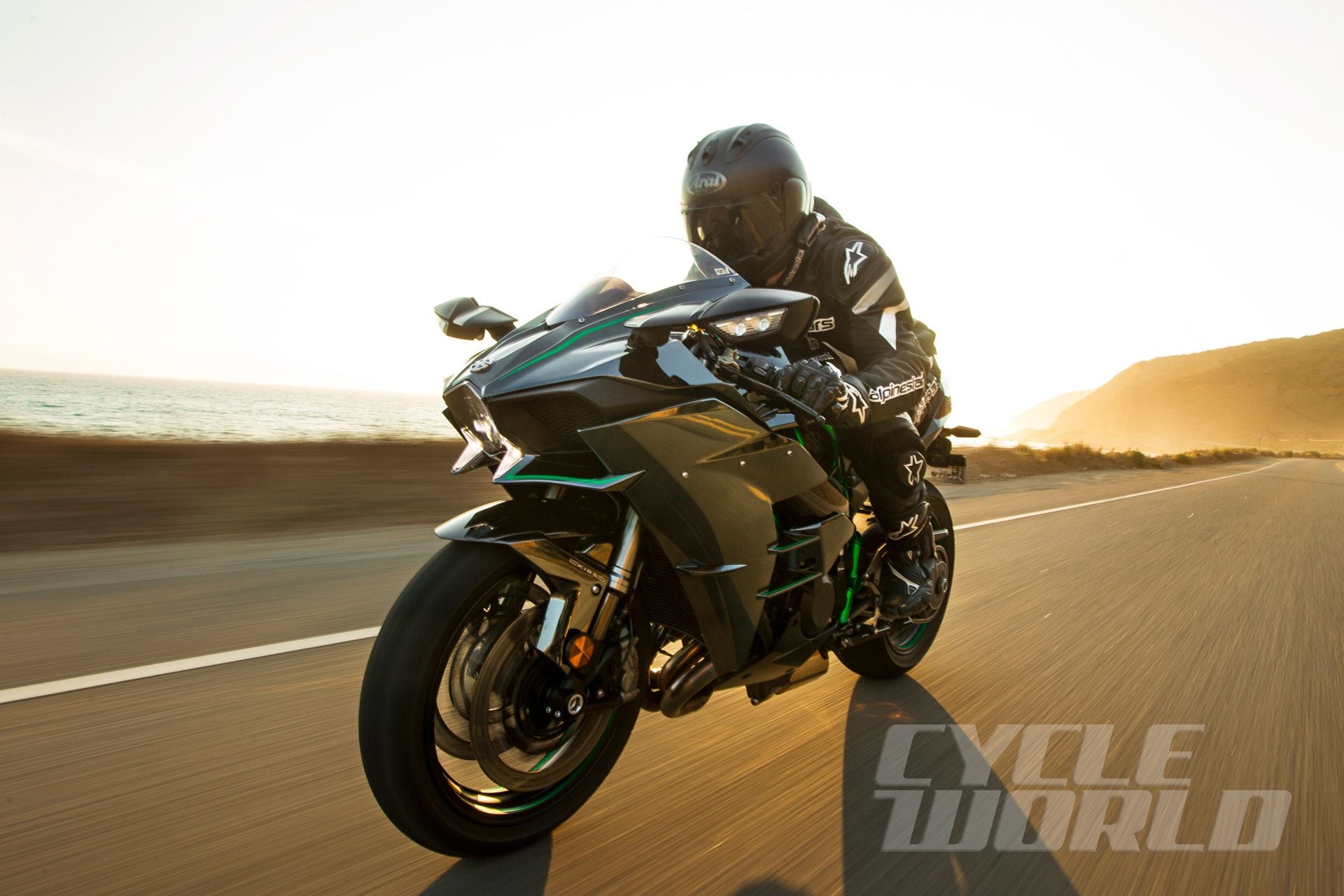
What are the most powerful motorcycles? Cycle World’s in-house dyno has the answers. (Jeff Allen/)We have a thing for numbers. Whenever possible, we use our scales or our tape measures. Specs are commonly lobbed over the editors’ cubicle walls, as are measurements for leathers, sizes for boots, and tire widths for upcoming shootouts. Of course, one of the key numbers that we look at is horsepower. Having our Dynojet 250i rear-wheel dyno humming and revving in the garage sets Cycle World apart from other motorcycle media outlets; we determine real horsepower numbers for our dyno videos and reviews. Multitudes of motorcycles have come and gone through the Cycle World dyno, many producing horsepower figures in the triple digits. Here are the most powerful production motorcycles that we have run on our dyno, ranked up to the greatest, all of which produce 150 ponies or more.
2014 Yamaha YZF-R1
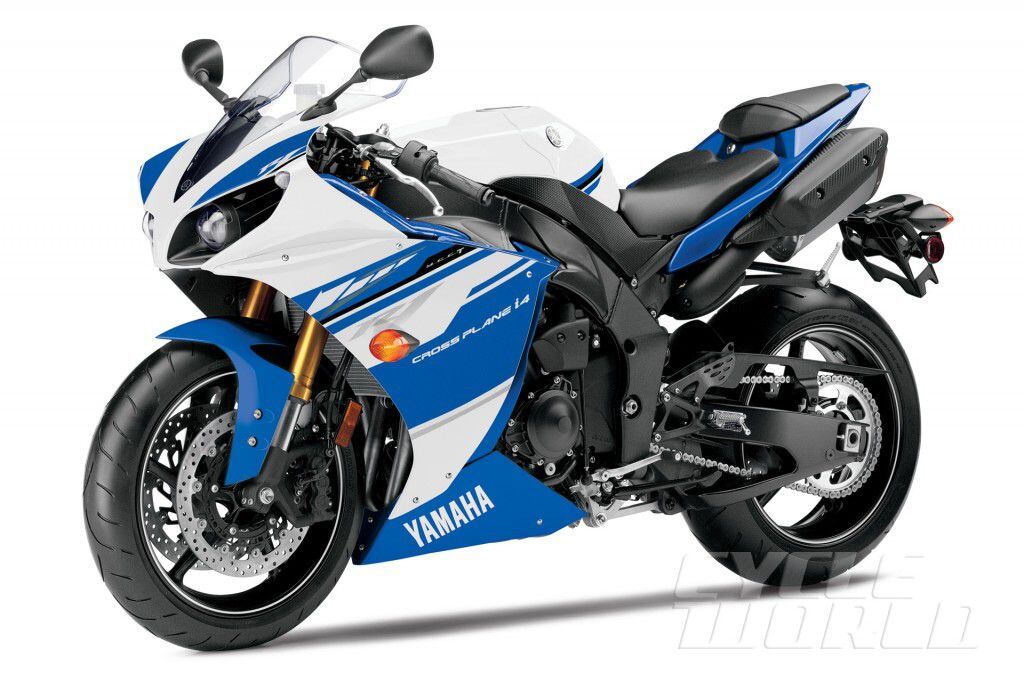
2014 Yamaha YZF-R1 (Yamaha/)The 2014 Yamaha YZF-R1 spun its rear wheel on the dyno to produce an impressive 150.2 hp at 11,800 rpm and 74.5 pound-feet at 10,200 rpm.
2019 KTM 1290 Super Duke GT
KTM’s 2019 1290 Super Duke GT offers an exhilarating riding experience with 150.8 hp at 10,100 rpm and 91.5 pound-feet at 7,200 rpm.
2016 BMW S 1000 XR
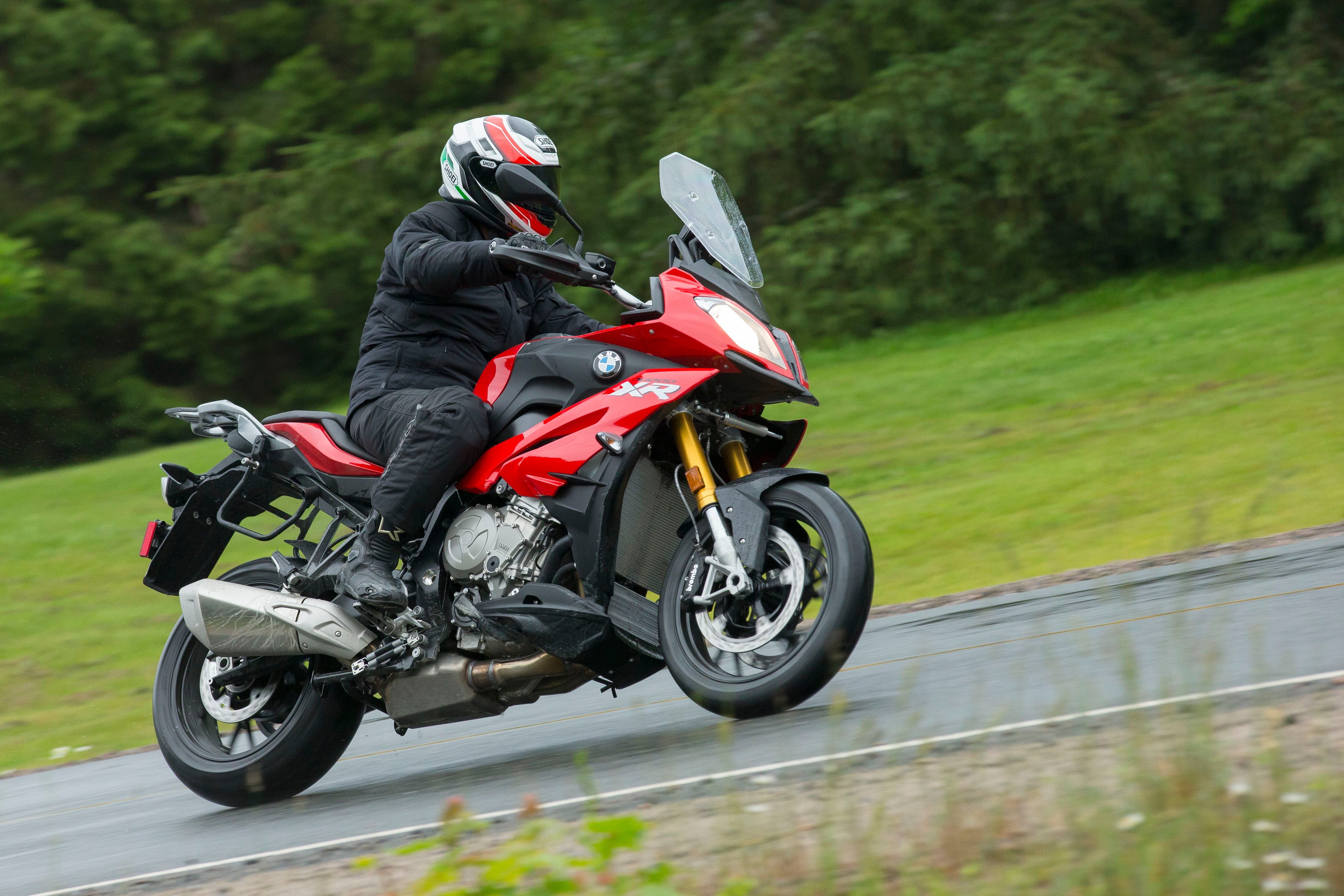
2016 BMW S 1000 XR (Kevin Wing/)Upright ergos, wind protection, and raw power. Back in 2016, the BMW S 1000 XR entered the “adventure sports” segment and delivered 151.24 hp at 10,800 rpm and 79.34 pound-feet at 9,100 rpm.
2014 Honda CBR1000RR SP
The limited-production 2014 Honda CBR10000RR SP’s hand-balanced engine delivered 151.8 hp at 10,500 rpm and 78.2 pound-feet at 9,800 rpm to the rear wheel.
2017 BMW S 1000 R
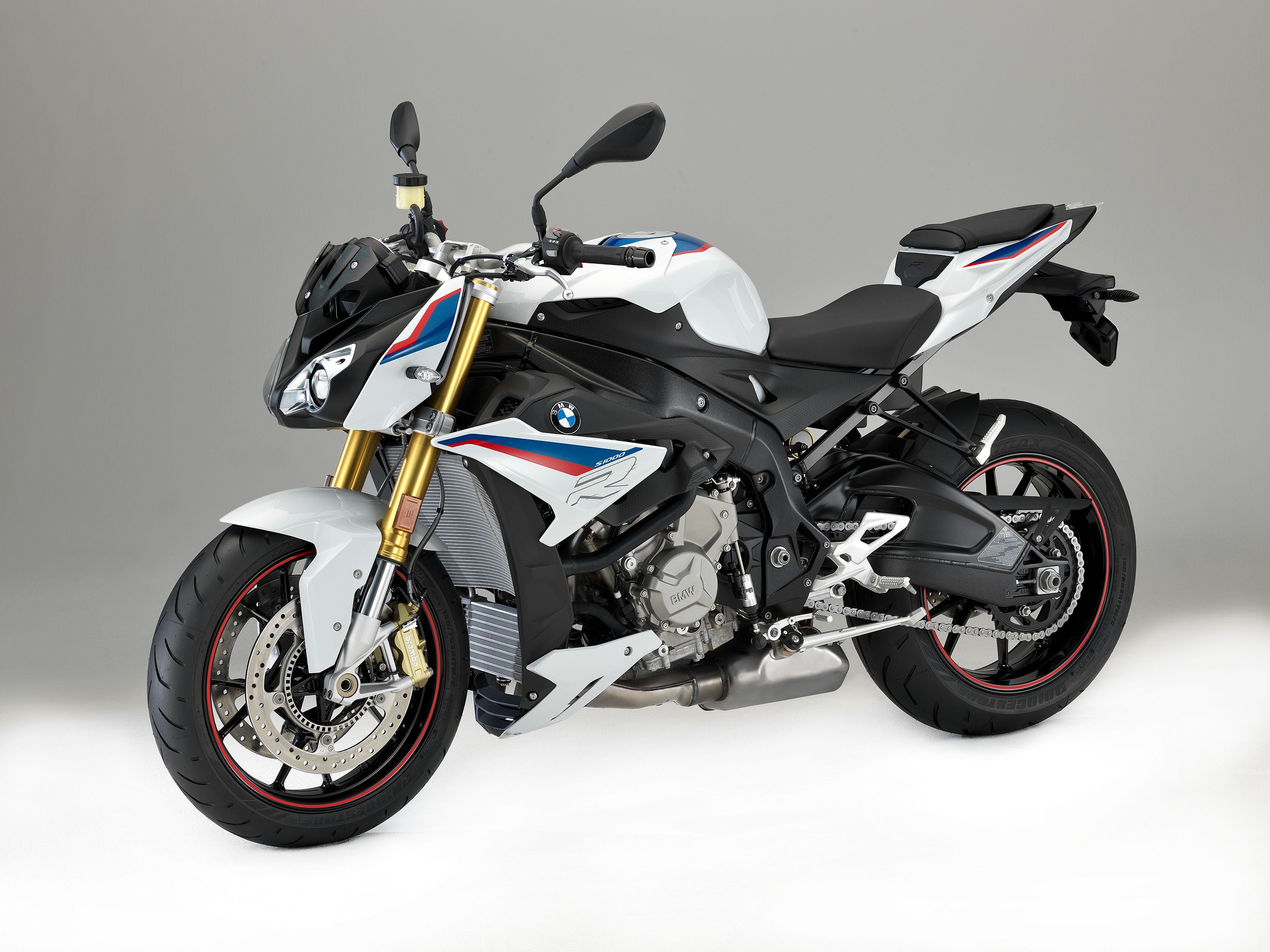
2017 BMW S 1000 R (BMW Motorrad/)In 2017, the BMW S 1000 R was upgraded for more power, among other updates. This year’s model cranked 152.3 hp at 11,000 rpm, 78.2 pound-feet at 9,400 rpm on our dyno.
2017 Aprilia Tuono V4 1100 RR
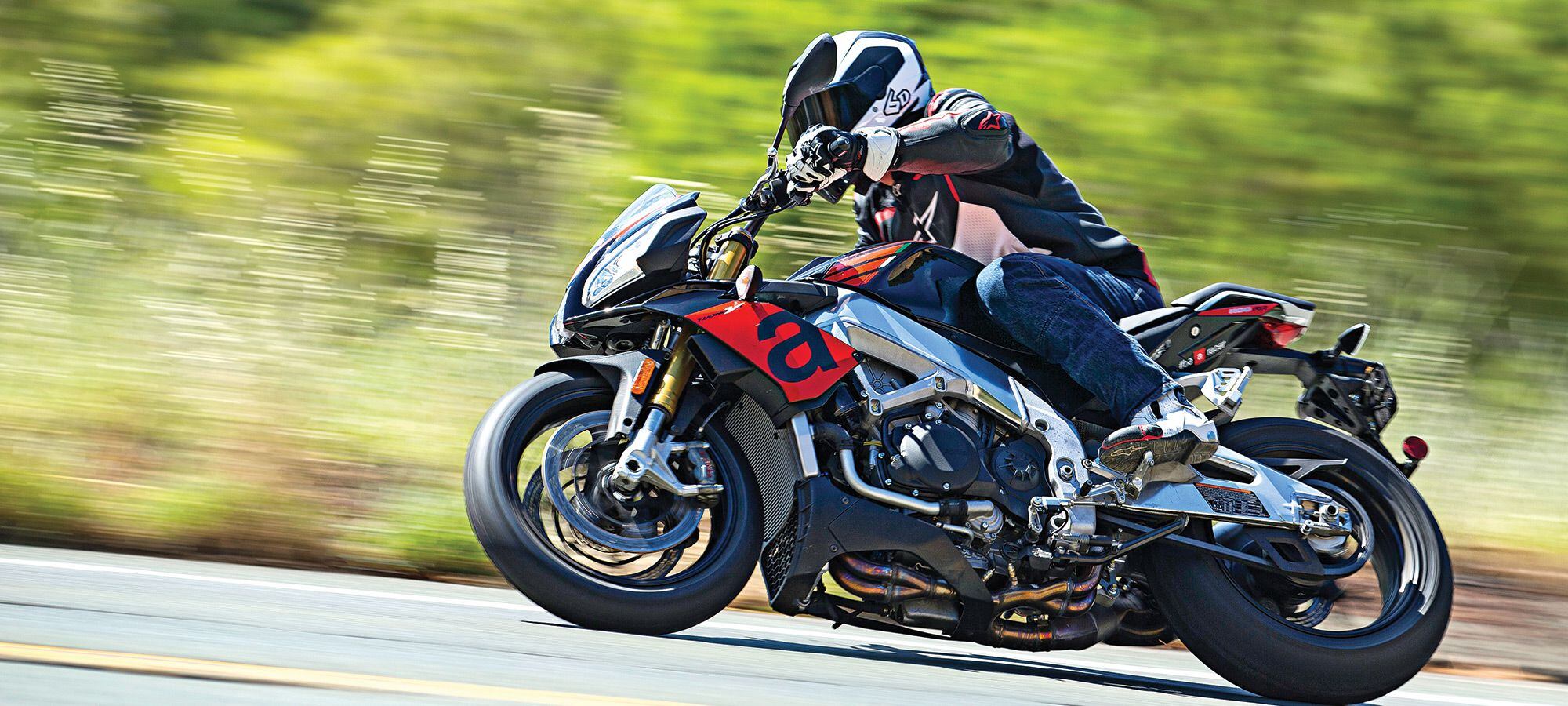
2017 Aprilia Tuono V4 1100 RR (Jeff Allen/)Aprilias are widely regarded for their track-worthiness. In 2017, the Tuono V4 1100RR won Best Standard in Cycle World’s Ten Best, with the dyno pulling rear-wheel numbers of 153.2 hp at 11,900 rpm and 78.1 pound-feet at 9,600 rpm.
2016 Aprilia Tuono V4 1100 Factory
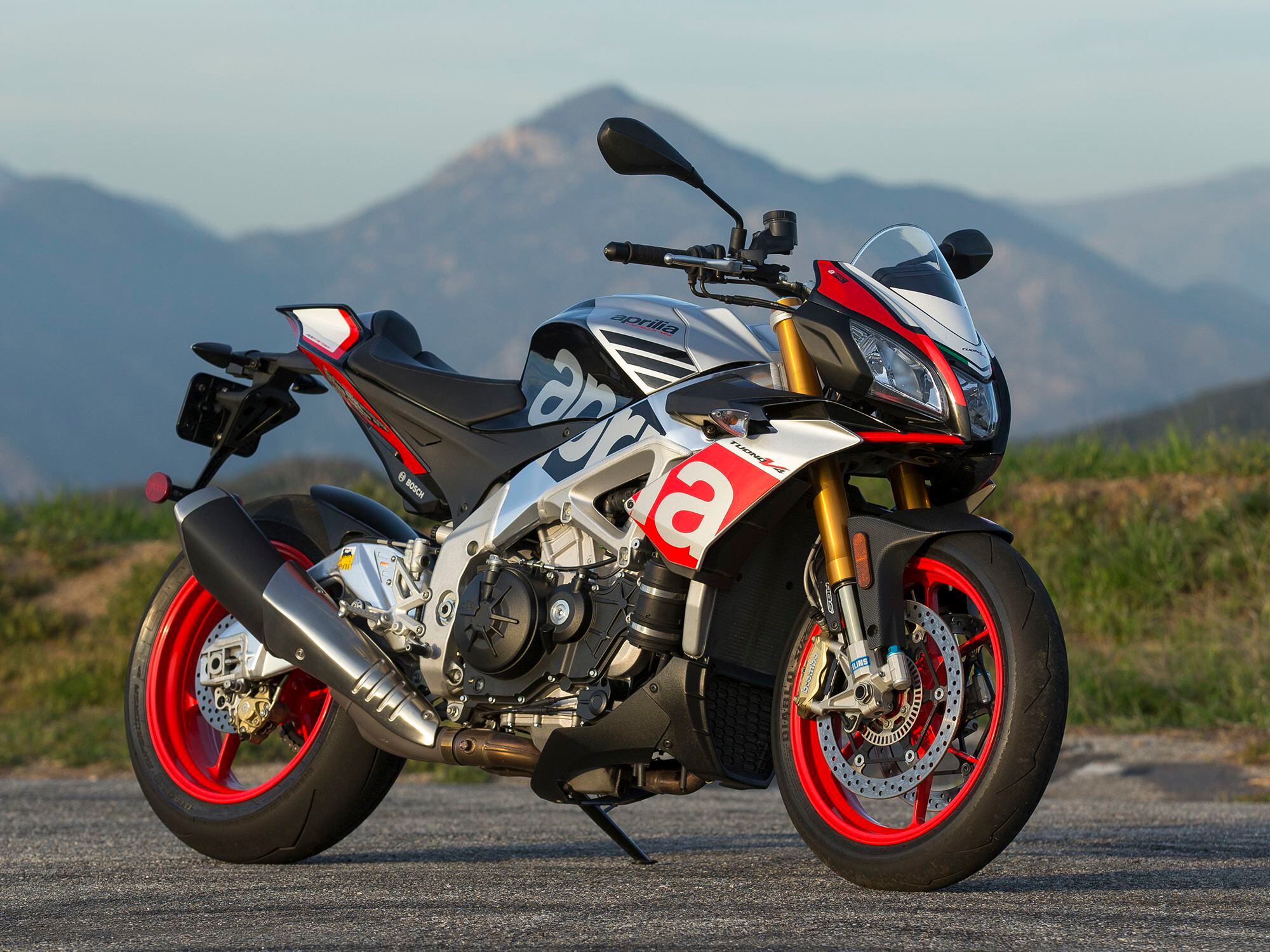
2016 Aprilia Tuono V4 1100 Factory (Kevin Wing/)Just a year earlier, the Factory version of the Tuono V4 1100 took a stab at the dyno and produced 153.3 hp at 11,300 rpm and 79.8 pound-feet at 9,200 rpm.
2014 EBR 1190 SX
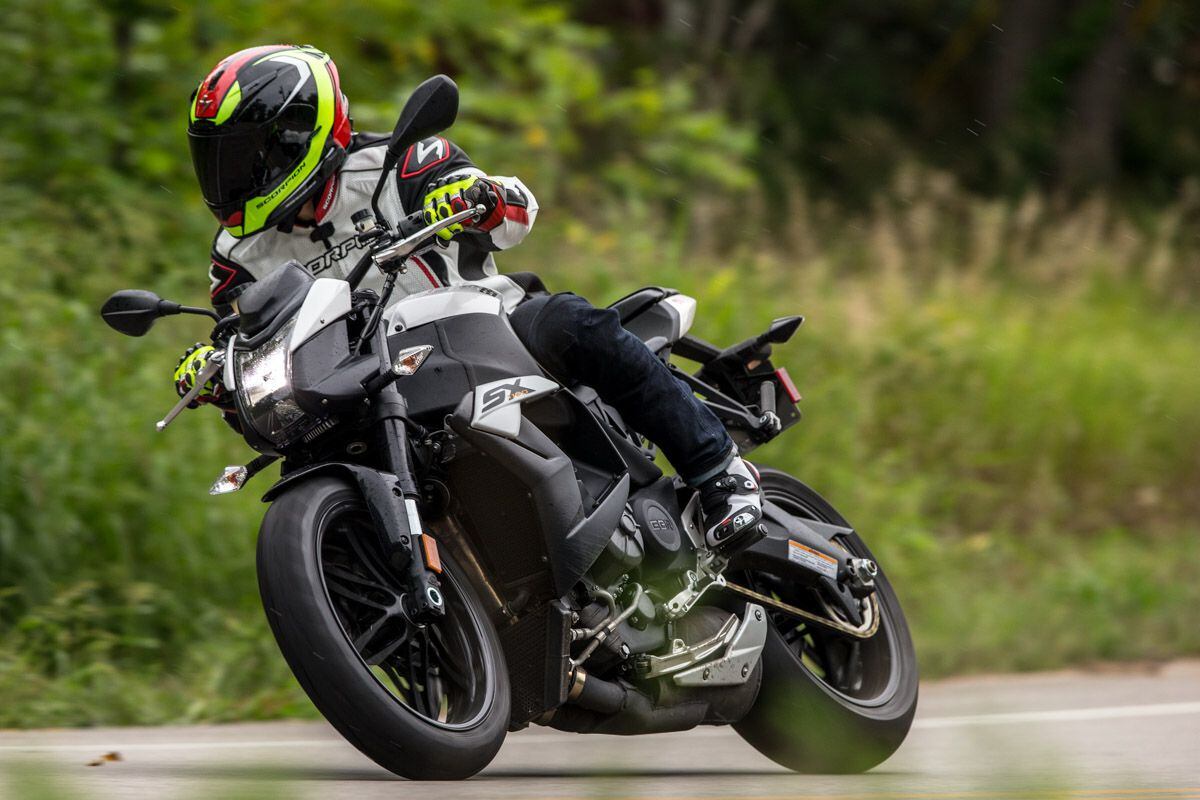
2014 EBR 1190 SXStrip the fairings off of the EBR’s World Superbike-ready 1190 RX and replace the clip-ons with an upright handlebar and you have the sporty, naked 2014 EBR 1190 SX. On our dyno it produced 153.8 hp at 10,500 rpm and 84.6 pound-feet at 8,000 rpm.
2018 KTM 1290 Super Duke R
The 1290 Super Duke R and its V-twin recorded its power figures on the dynamometer with a fourth-gear pull, getting to 154.66 hp at 9,960 rpm and 92.55 pound-feet at 7,390 rpm.
2014 EBR 1190RX
In a comparison battle of road-legal track weapons, the 2014 EBR 1190RX went head to head with the Ducati 1199 Panigale. We recorded the EBR’s numbers: 161.2 hp at 10,530 rpm and 87.1 pound-feet at 8,100 rpm. The 2014 1199 Panigale produced 167.1 hp at 10,900 rpm and 85.0 pound-feet at 8,490 rpm, which was eclipsed by the 2015 model, as shown below.
2015 Yamaha YZF-R1M
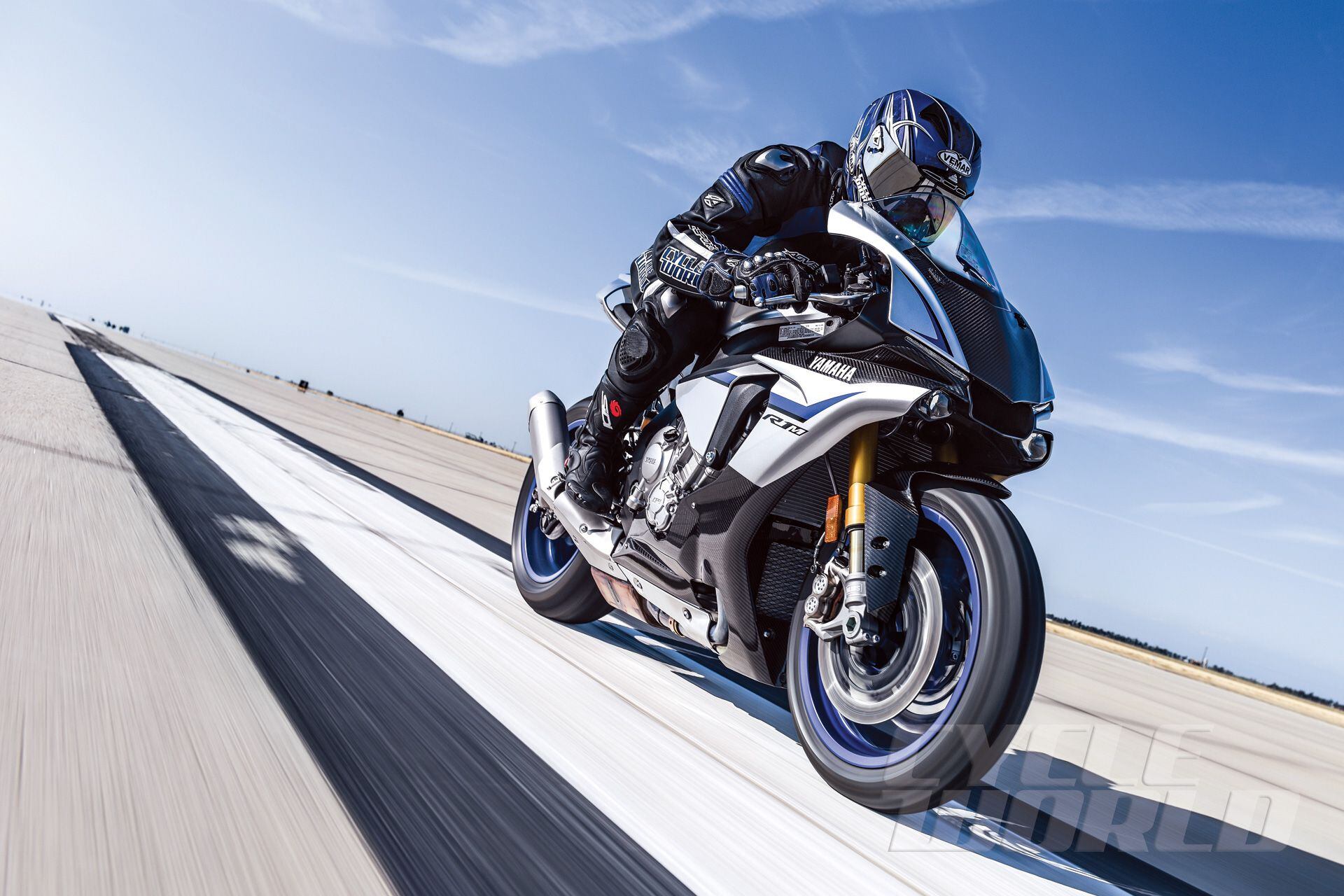
2015 Yamaha YZF-R1M (Barry Hathaway/)A MotoGP bike for the people, the Yamaha YZF-R1M won the hearts of the editors for its “stellar power, amazing electronics and unflappable chassis.” On the dyno, that stellar power turned out to be 164.4 hp at 12,200 rpm and 73.6 pound-feet at 8,600 rpm.
2018 Kawasaki H2 SX SE
Naturally sport-tourers love speed. Add a supercharger and there’s quite a dose of power available. The 2018 Kawasaki H2 SX SE delivered 166.1 hp at 10,200 rpm, 89.1 pound-feet at 8,500 rpm to be more specific.
2016 Kawasaki ZX-10R
Another racing-derived model from Team Green. While the 2017 model recorded powerful numbers (164.6 hp at 11,700 rpm, 75.2 pound-feet at 11,000 rpm), the potent 2016 Kawasaki ZX-10R beat it by a smidge: 166.98 hp at 11,700 rpm and 75.96 pound-feet at 11,200 rpm.
2008 Suzuki Hayabusa
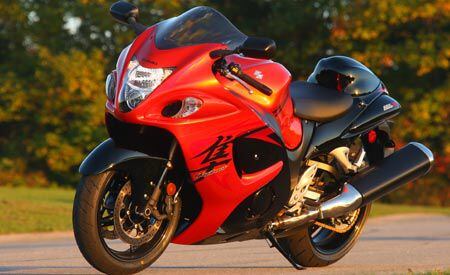
2008 Suzuki Hayabusa (Cycle World Archives/)The Suzuki Hayabusa is a master of speed. Recording the numbers for a 2008 test, this ‘Busa grunted 173.4 hp and 104 pound-feet of torque (S-DMS, mode A). It also clocked a 0-60 time of 2.58 seconds and an impressive measured top speed of 186 mph.
2015 Ducati 1199 Panigale
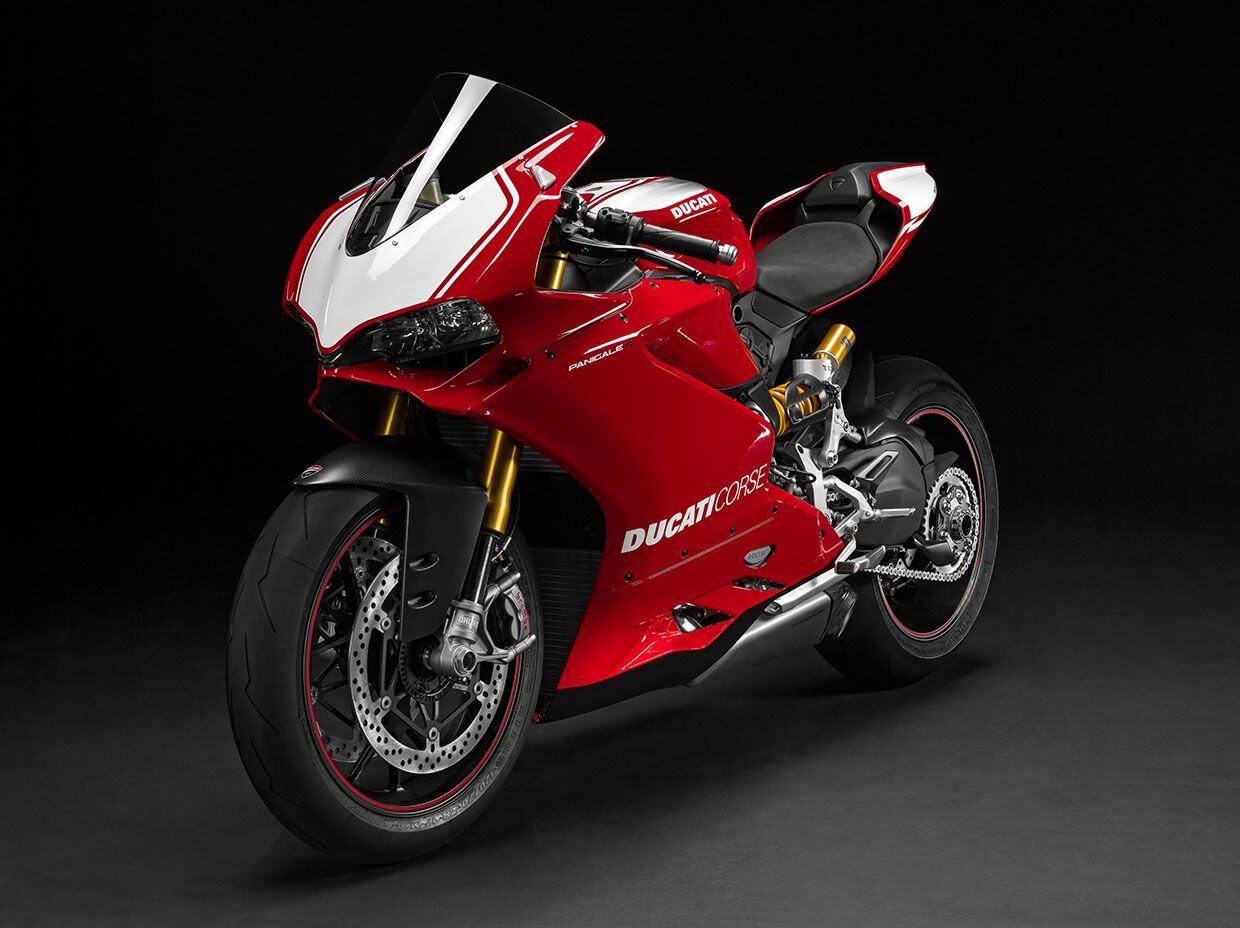
2015 Ducati 1199 Panigale (Motorcyclist Archives/)Remember 2015, when Ducati announced the uptick in displacement from the 1199 Panigale to the 2015 Ducati 1299 Panigale? In its original 1,198cc displacement form, it remained as a race-only version with the Panigale R. This model recorded 174.9 hp at 10,400 rpm and 94.2 pound-feet at 8,500 rpm on our dyno.
2017 Aprilia RSV4 RR
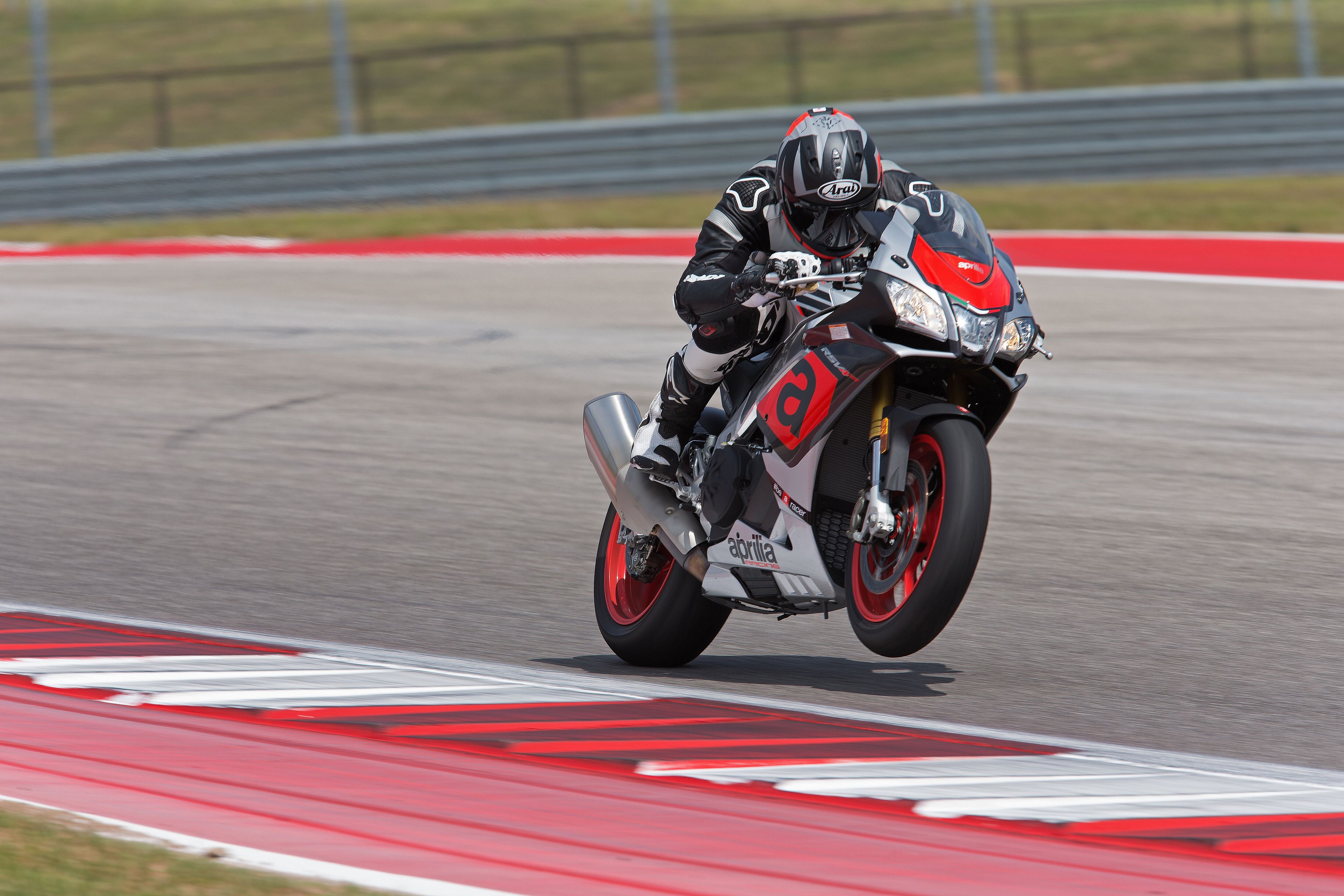
2017 Aprilia RSV4 RR (Michael Brock Brockimaging/)A standout chassis, updates to the Aprilia Performance Ride Control suite, and that superb V-4 engine made the 2017 Aprilia RSV4 RR a standard-setting ride. This model tallied 175.2 hp at 13,300 rpm and 75.7 pound-feet at 11,000 rpm.
2016 Aprilia RSV4 RF
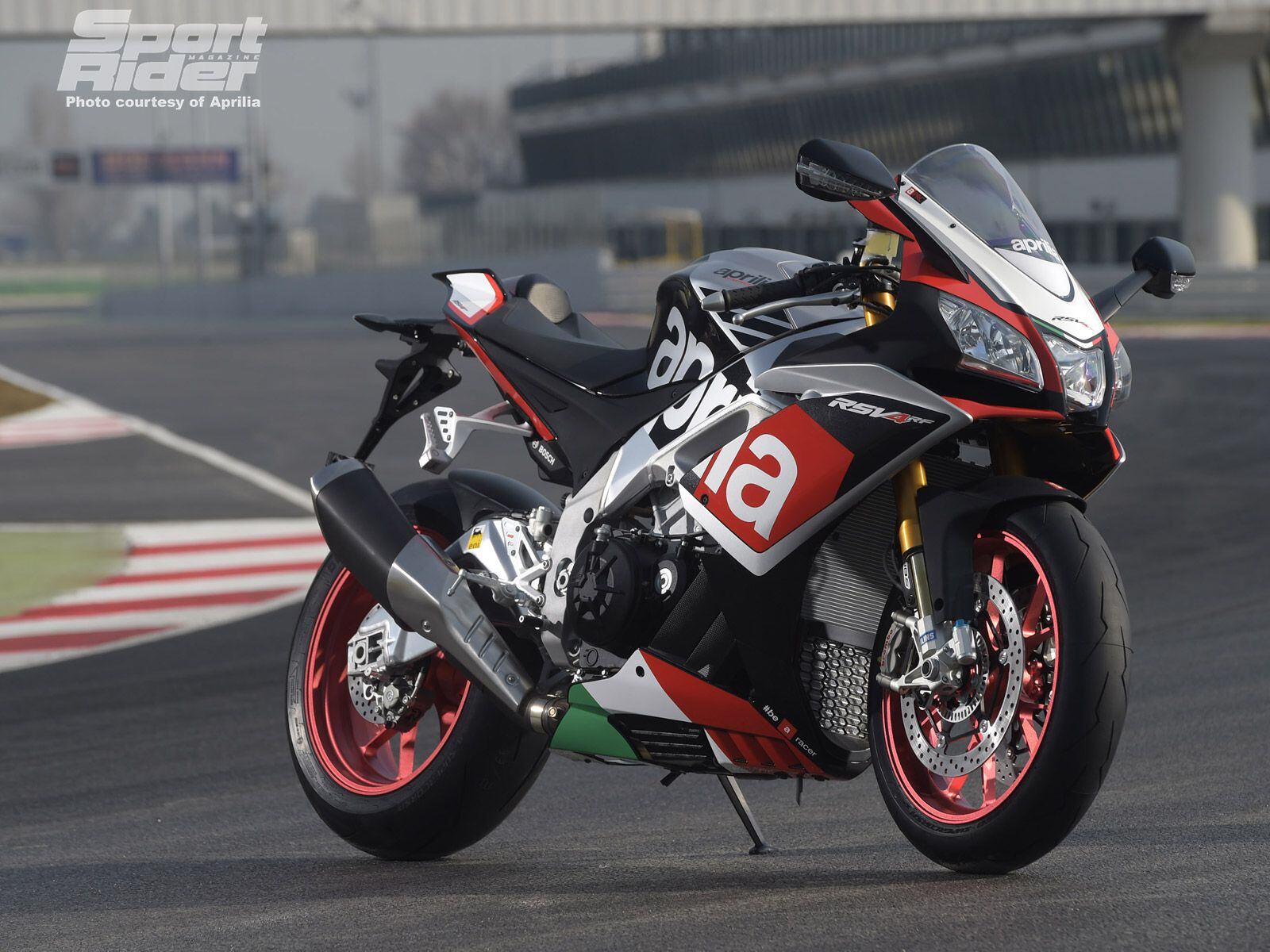
2016 Aprilia RSV4 RF (Aprilia/)The up-spec’d Aprilia RSV4 RF of 2016 hits just about as hard as the previously mentioned base model, with 175.2 hp at 13,500 rpm and 76.2 pound-feet at 10,300 rpm.
2015 Ducati 1299 Panigale S
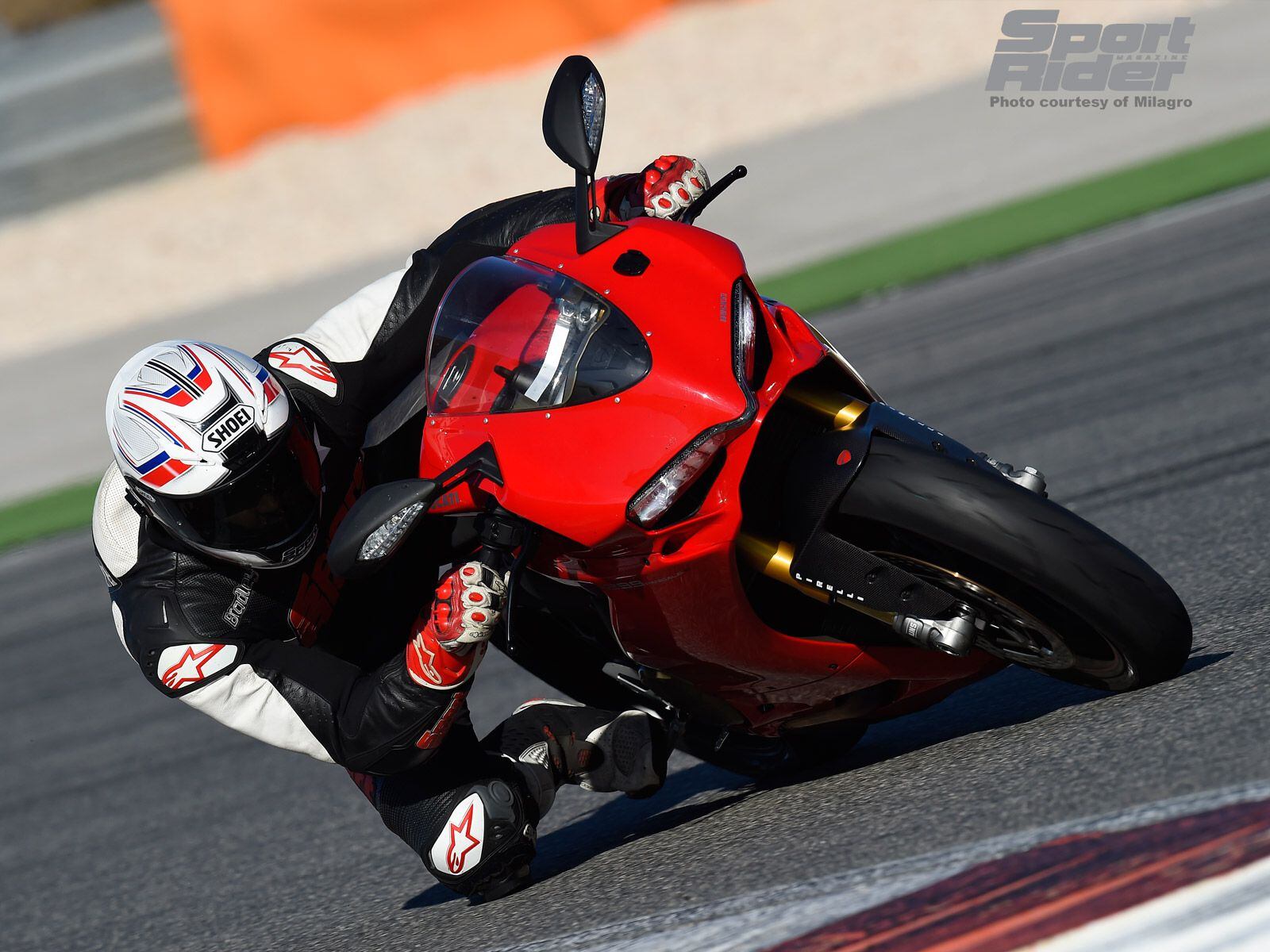
2015 Ducati 1299 Panigale S (Milagro/)More, more, more. Climbing up in displacement from the 1199 Panigale, the 2015 Ducati 1299 Panigale S gave the people more of what they wanted: 177.0 hp at 10,700 rpm and 92.9 pound-feet at 8,900 rpm.
2020 BMW S 1000 RR M Series
The 2020 BMW S 1000 RR M Series model takes the S 1000 RR package and makes it even sportier with HP4 Race-derived carbon fiber wheels, fully adjustable Race Pro riding modes, and a lightweight battery. This model recorded 182.7 hp at 13,600 rpm and 77.1 pound-feet at 11,000 rpm.
2016 Kawasaki ZX-14R
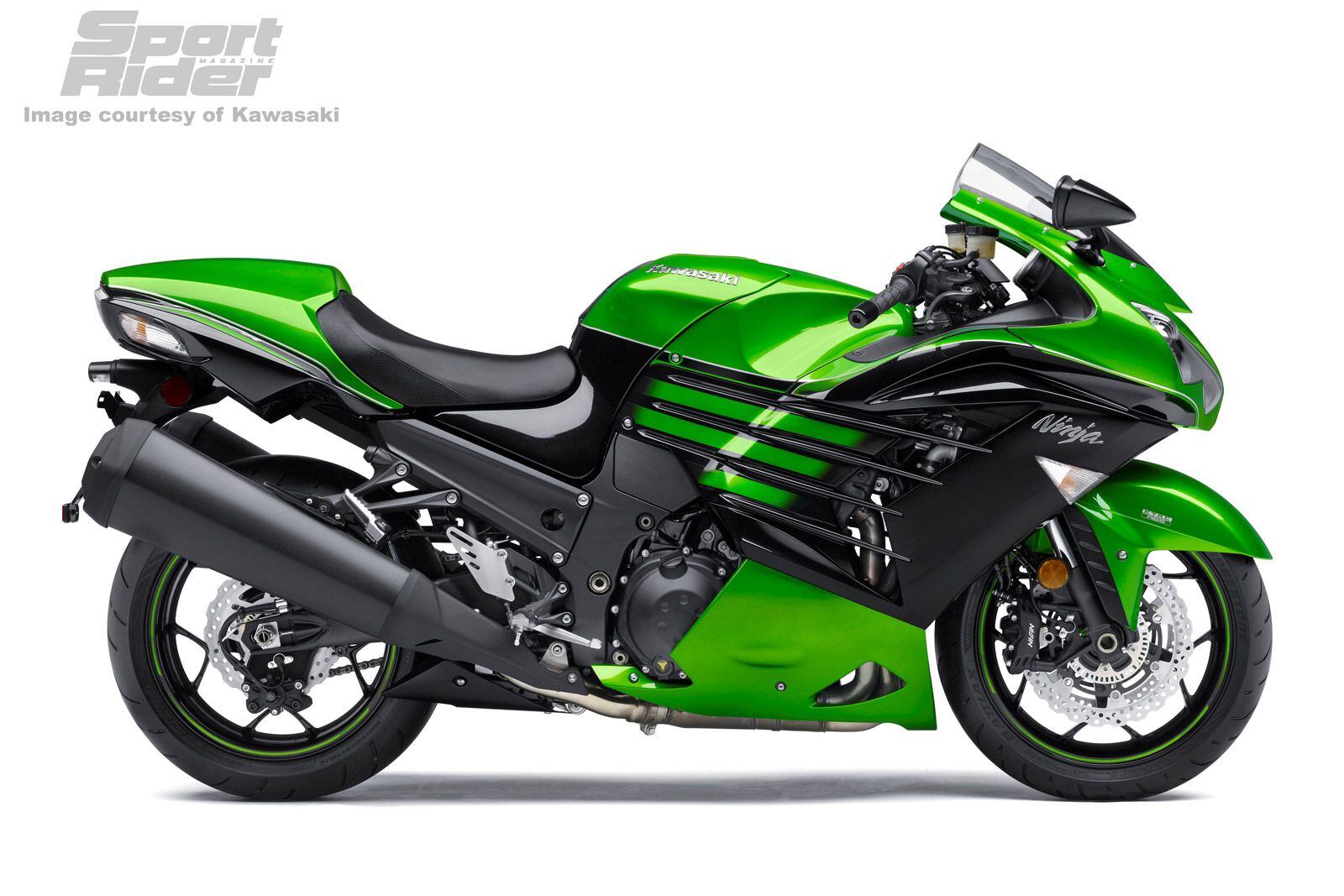
2016 Kawasaki ZX-14R (Kawasaki/)The 1,441cc DOHC inline-four in the 2016 Kawasaki ZX-14R delivered 183.2 hp at 10,100 rpm and 109.45 pound-feet at 7,500 rpm at the rear wheel, making it the second of this list to record both triple digit horsepower and torque figures.
2015 BMW S 1000 RR
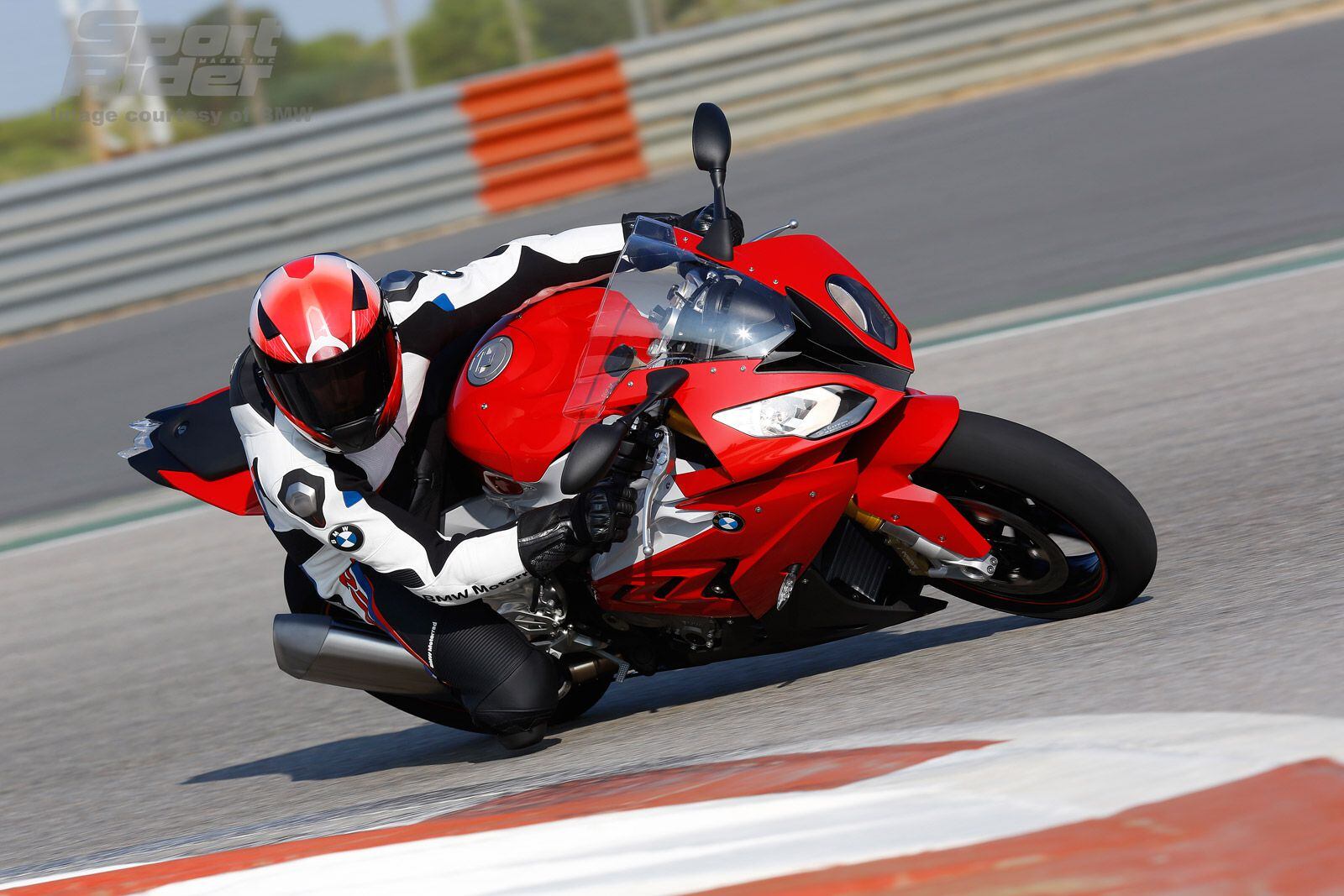
2015 BMW S 1000 RR (BMW Motorrad/)The 2015 BMW S 1000 RR saw a range of improvements to make it a more friendly package for street and trackday riders. One important change was an increase in power (the manufacturer claimed an increase from 193 to 199 ponies). On our in-house dyno, it recorded 184.6 hp at 13,300 rpm and 80.8 pound-feet at 9,500 rpm.
2019 Ducati Panigale V4 S
“The performance is potent,” we wrote in the dyno video article of the 2019 Ducati Panigale V4 S, which saw it reach 186.01 hp at 13,320 rpm and 79.6 pound-feet of torque at 11,310 rpm; potent indeed.
2015 Kawasaki Ninja H2
It’s nearly impossible to resist the sound of a supercharger’s roar. The 2015 Kawasaki Ninja H2′s supercharged powerplant gets this beast down the tarmac at an impressive measured top speed of 183 mph! With great speeds come great underlying power figures: 189.8 hp at 11,090 rpm and 91.2 pound-feet at 10,790 rpm.
2019 Aprilia RSV4 1100 Factory
The 2019 Aprilia RSV4 1100 Factory elevates itself above the base RSV4 by increasing the displacement from 999cc to 1,078cc and producing vital figures of 190.0 hp at 13,500 rpm and 82.1 pound-feet of torque at 9,800 rpm.
2019 Ducati Panigale V4 R
With serious track performance at the forefront of the Ducati Panigale V4 R’s design, the 2019 homologation special is the heaviest hitter on this list. The most powerful production motorcycle to run on Cycle World’s in-house dyno recorded a whopping 204.0 hp at 15,800 rpm and 76.7 pound-feet at 12,300.
-
-
Hello Dan Fulford,
Welcome to The Motorbike Forum. Please feel free to browse around and get to know the others. If you have any questions please don't hesitate to ask.
Why not tell us a bit about yourself too.
-
Hello JuanPedro,
Welcome to The Motorbike Forum. Please feel free to browse around and get to know the others. If you have any questions please don't hesitate to ask.
Why not tell us a bit about yourself too.
-
-
-
Hello MotorcycleTourer,
Welcome to The Motorbike Forum. Please feel free to browse around and get to know the others. If you have any questions please don't hesitate to ask.
Why not tell us a bit about yourself too.
-
Hello reeen,
Welcome to The Motorbike Forum. Please feel free to browse around and get to know the others. If you have any questions please don't hesitate to ask.
Why not tell us a bit about yourself too.
-
-
-
Hello Robbie-Box,
Welcome to The Motorbike Forum. Please feel free to browse around and get to know the others. If you have any questions please don't hesitate to ask.
Why not tell us a bit about yourself too.
-

The ’80s and ’90s saw vast advances in sportbike performance as racing pushed sales floor success. (Honda/)Until the sportbike era (the 20 years between 1988 and 2008) production motorcycles were remarkably free of the heavy hand of physics. Physics became important only at the extreme edges of performance, a zone seldom visited by most riders.
That all changed when sales of the new sportbikes, from the mid-1980s onward, were seen to depend strongly on winning Supersport and Superbike roadraces. Manufacturers had tried to make their bikes win the new Superbike Production races of the later 1970s, but it was hard going because those bikes combined the novel high power of 1,000cc four-stroke engines with 1960s chassis, suspension, and tires. It was all uphill to make those bikes work while honoring production racing rules.
There was little wrong with 1960s bikes, which did their jobs well so long as power didn’t overwhelm what the chassis of that time could handle: about 40 hp. People had great fun on those bikes, and covered a lot of ground. Many today look back on the straightforward style of the Triumph Bonneville and Harley Sportster with real affection.
Japan, despite its snarling Kawasaki Z1 and Suzuki GS models, had to eat the humiliation of seeing the first American Superbike roadrace championship won in 1977 by Reg Pridmore—on a European BMW twin. The chassis of the big new four-strokes from Japan, overwhelmed by more than 100 hp, weaved so badly at speed that their large top-speed advantage couldn’t be used.
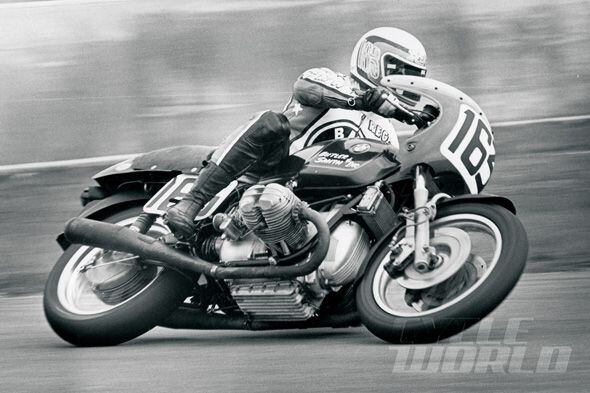
Reg Pridmore on the Butler & Smith BMW. (Cycle World Archives/)Engineers needed a fresh start with production bike chassis design. Bendy pipe chassis, skinny hard tires, and door-closer rear shocks of the 1960s couldn’t be made to win the races that would publicize and sell the bikes. The sportbike revolution of the 1980s was the result.
Engines and riders were moved forward to keep front tires steering during acceleration. Steering head angles were steepened to speed up steering. Chassis took new forms and were stiffened to accurately transmit the large forces of control and suppress instability. Swingarms, which since 1950 had been just three little pieces of pipe welded together, suddenly grew bridge-like triangulated bracing. Wider rims on cast wheels; larger-section tires of softer, grippier rubber; stiffer fork tubes and serious brakes were forced into being. These tools restored the balance between engine and chassis.
Physics had taken over the design of motorcycles because racing had become central to selling product. Success in racing requires design to focus on performance. Physics ruled. The stylists were left to choose the colors, decorate fairings with scoops and darts, and shape functionless parts such as seat backs and airbox covers.
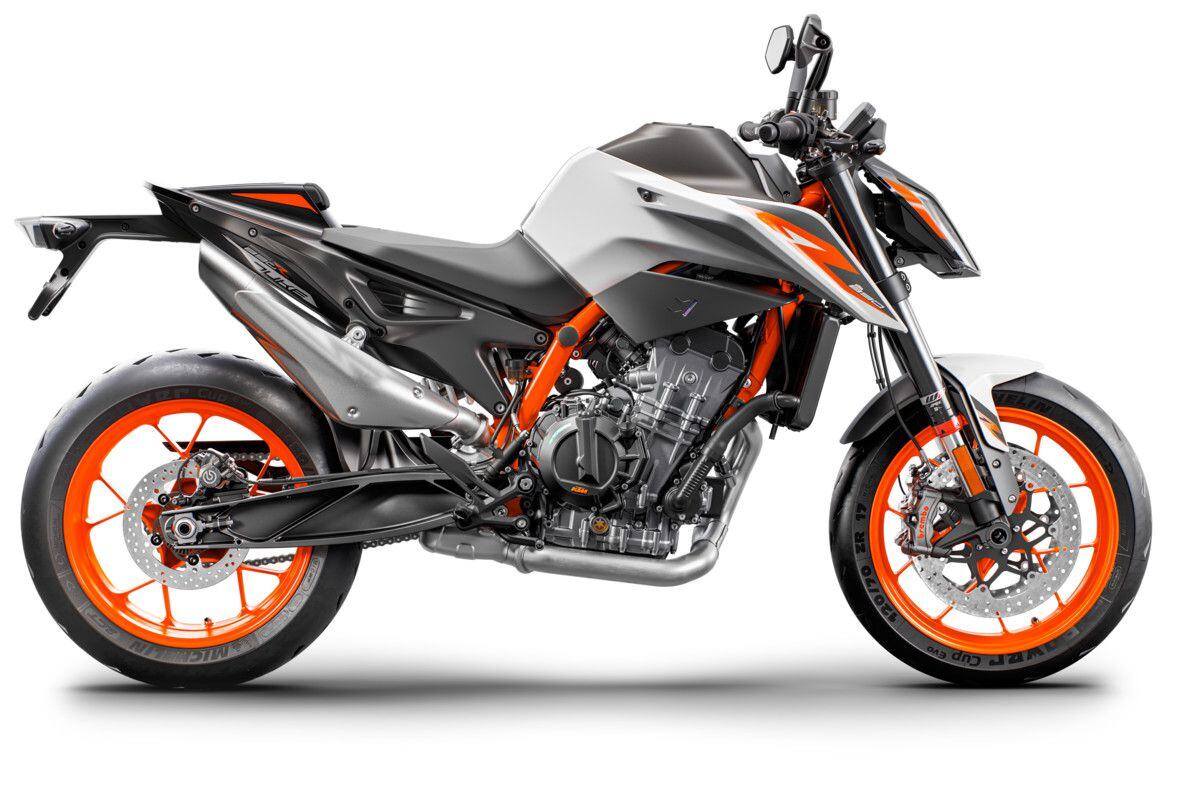
As middleweight naked bikes and twins (like the KTM 890 Duke R) are now grabbing the attention of buyers, where does physics fit in? (KTM/)Now that’s finished—sportbike sales have nearly zeroed, and other than the basic needs of safety and reasonable function, styling is no longer the vassal of physics. Middleweight twins have our attention, showing the now-universal humpbacked outline and powerful influence of KTM’s Kiska design and their future-themed origami shapes. The sportbike years expanded the technology of the motorcycle, but now it has become general knowledge.
Will imaginative designers please come forward to show us new possibilities?
-
Although Dirt Rider’s 2021 450 Motocross Shootout took place approximately a month and a half later than usual due to a few bikes becoming available at a later time in light of the COVID-19 pandemic, the 2021 250 Four-Stroke Motocross Shootout transpired around the same time as it has in recent years. For the smaller-displacement motocross bike comparison test the same manufacturers were present: Honda, Husqvarna, Kawasaki, KTM, and Yamaha.
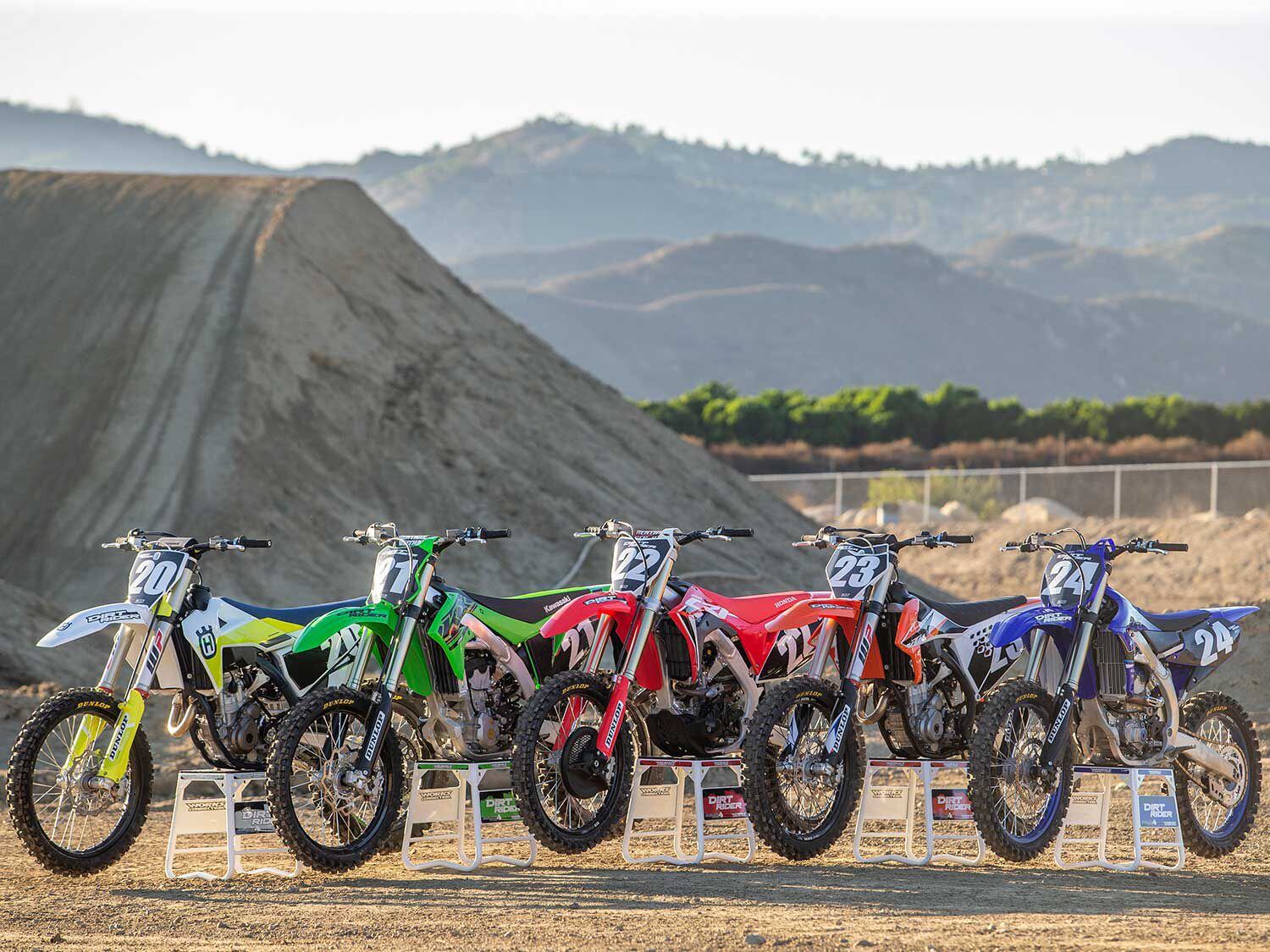
Husqvarna FC 250 vs. Kawasaki KX250 vs. Honda CRF250R vs. KTM 250 SX-F vs. Yamaha YZ250F (Jeff Allen/)The GasGas MC 250F and Suzuki RM-Z250 weren’t available when we scheduled the shootout. We will review each of those bikes when we take delivery of them, so stay tuned to the site for our first-ever test of a GasGas motocross bike along with the returning RM-Z250. With that, we rounded up the five competing motorcycles—the Honda CRF250R, Husqvarna FC 250, Kawasaki KX250, KTM 250 SX-F, and Yamaha YZ250F—and brought them to our shop to gather hard empirical numbers.
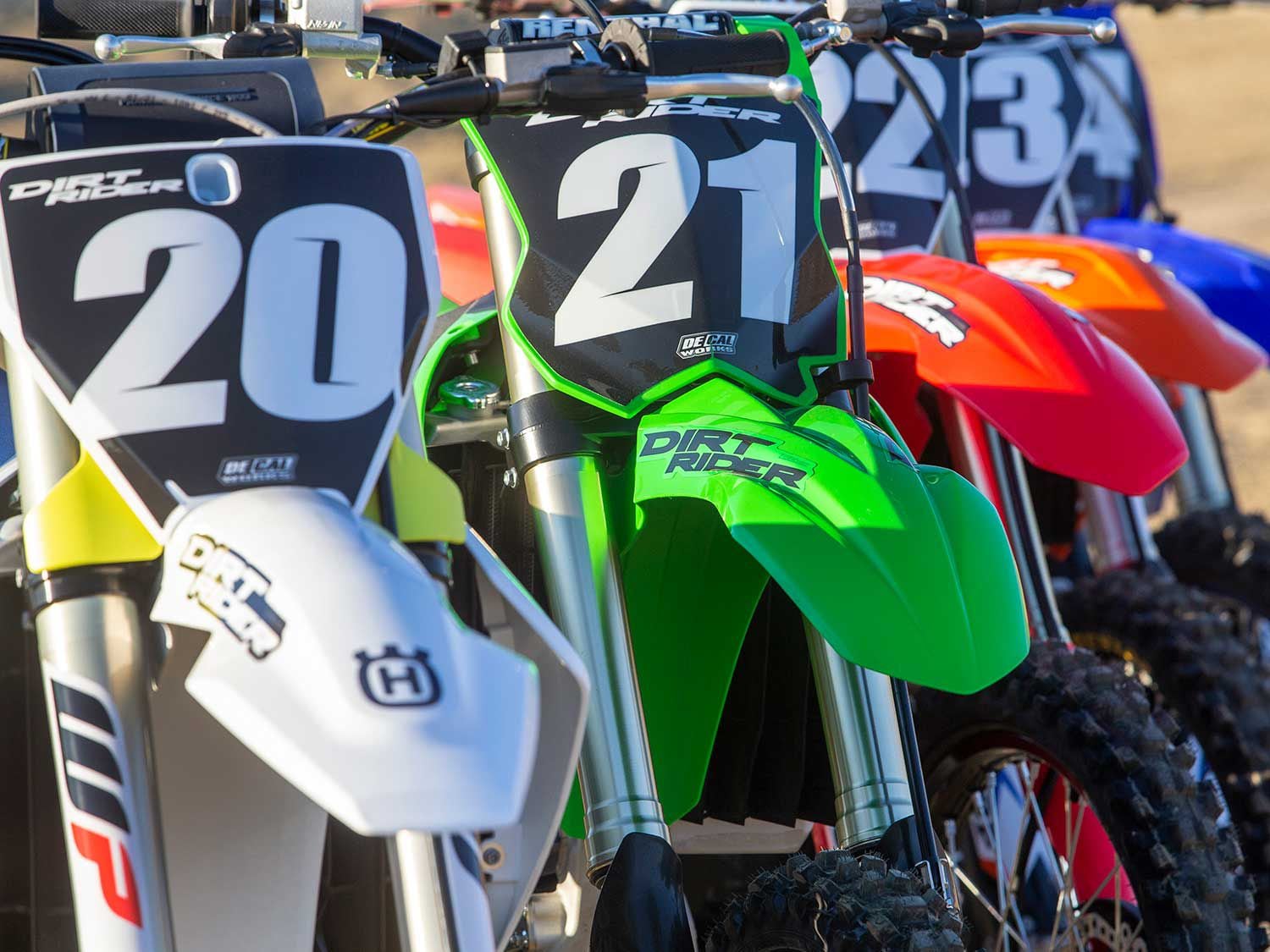
Each machine in the 250 four-stroke motocross bike comparison test was adorned with DeCal Works preprinted number plate backgrounds and arched front fender stickers. (Jeff Allen/)After applying DeCal Works preprinted number plate backgrounds on each machine, we then mounted Dunlop D404 street tires on the rear wheels for runs on the Dirt Rider dyno. Dunlop provided us with its excellent Geomax MX33 soft-to-intermediate-terrain tires for the comparison test, which ensured that traction was not a variable from one bike to another. The final shop tasks included weighing each motorcycle with a full tank of fuel on our automotive scales and then measuring the seat heights.
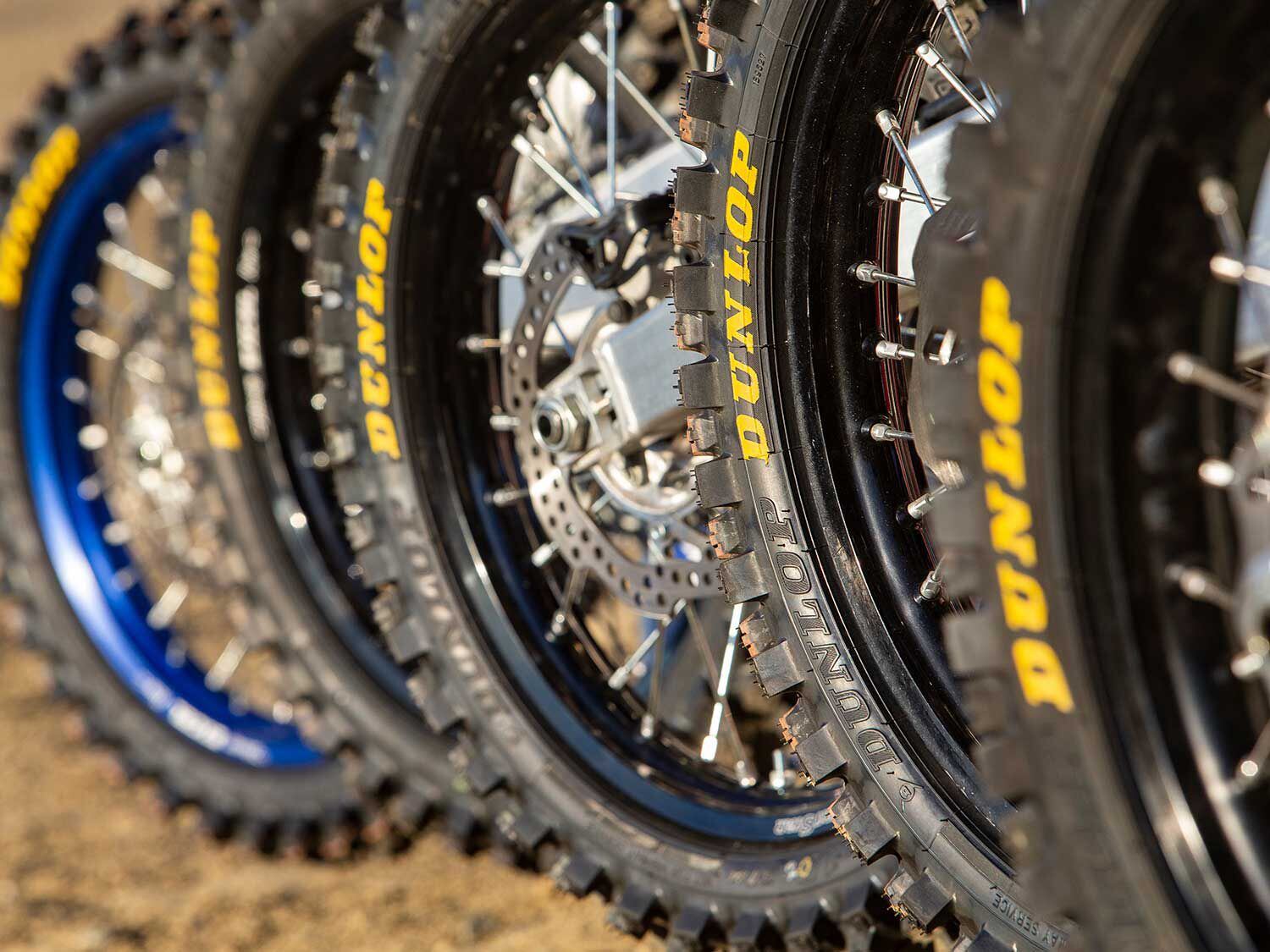
Traction parity among the five motorcycles was ensured with the use of Dunlop Geomax MX33 soft-to-intermediate-terrain tires. (Jeff Allen/)The on-track portion of the 250F motocross bike comparison test took place at various tracks in Southern California. The first two days were spent at Fox Raceway gathering static and action shots of the bikes. After our cameras were loaded with photos and video footage, we turned our full attention to testing. Cahuilla Creek MX served as the location for our initial dedicated test day. The Anza, California, track sits at an elevation of approximately 3,500 feet and features rolling hills and soil that consists mostly of decomposed granite along with some hard-packed areas.
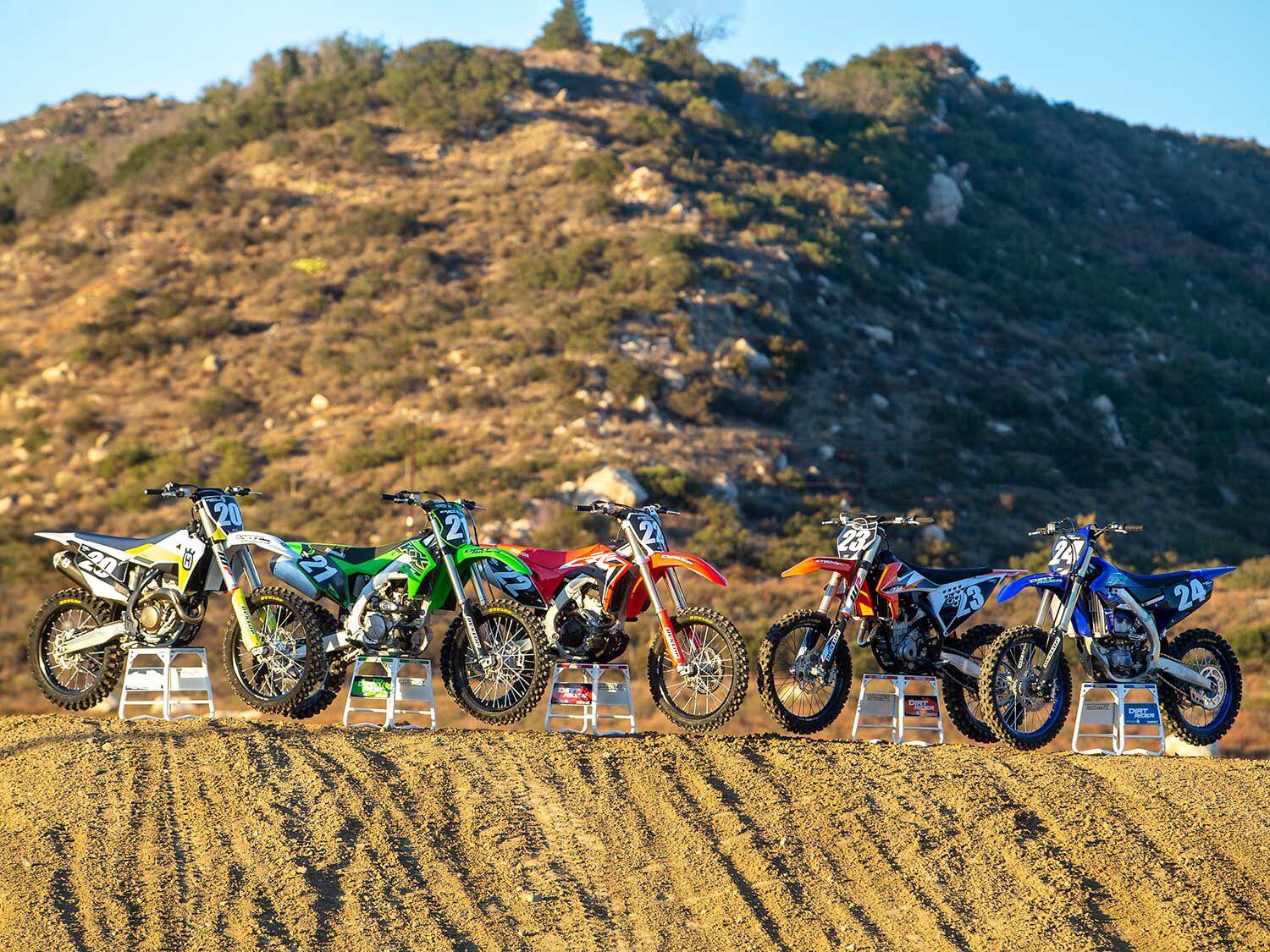
Works Connection stands were used for the static shots of the bikes, and all of the video footage and images were captured at Fox Raceway. The two additional test days took place at Cahuilla Creek MX and Glen Helen Raceway. (Jeff Allen/)Glen Helen Raceway was selected as the grounds for the final test day. The national-level track features several steep uphills and downhills, high-speed straightaways, and plenty of corners. Its deeply tilled soil allows for the formation of deep ruts and becomes hard-packed in certain areas as the day wears on.
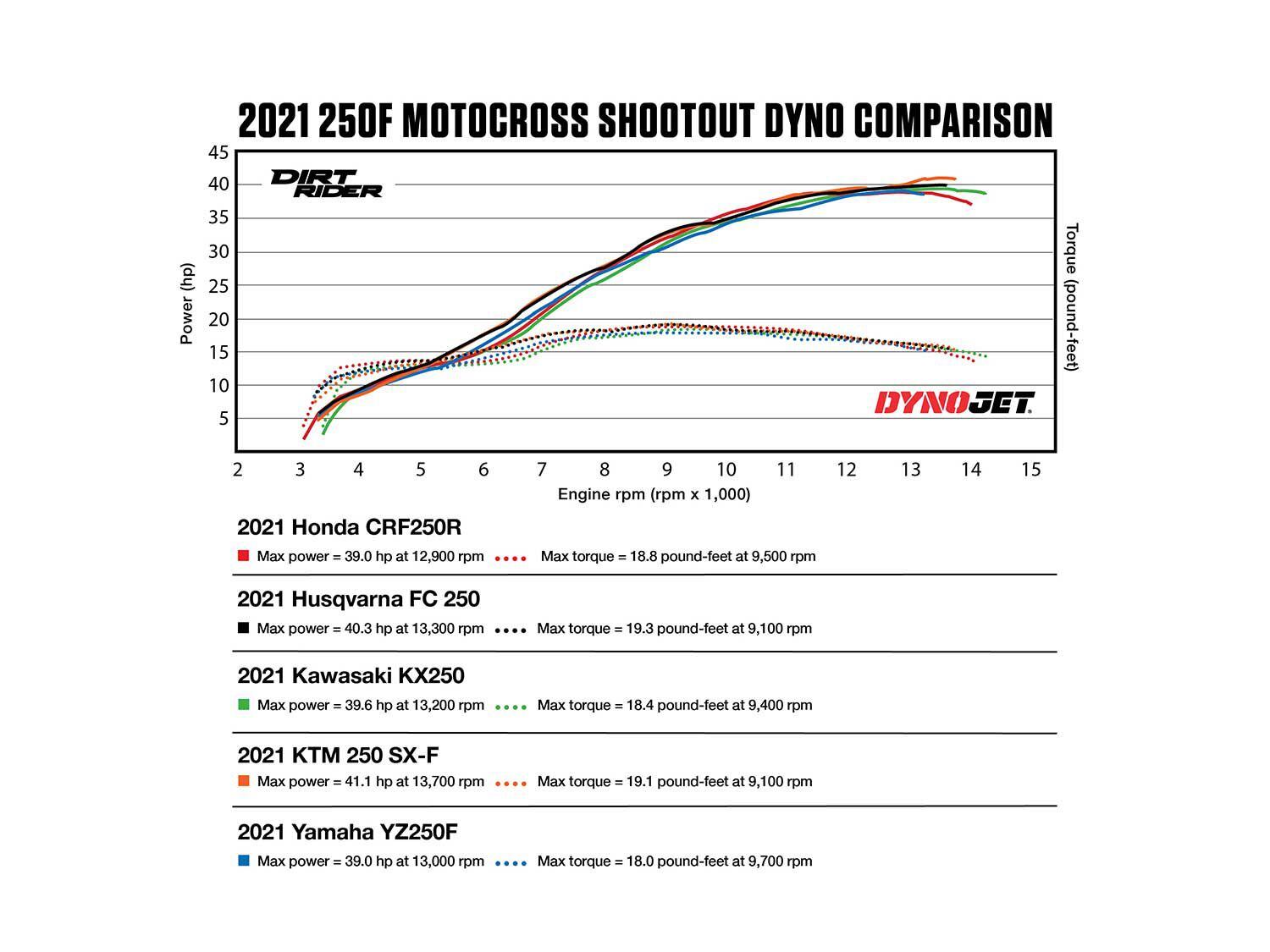
2021 250F Motocross Shootout Dyno Comparison Chart (Michael Gilbert/)Each manufacturer was present at Glen Helen to make any necessary adjustments to their respective bikes for each rider. The test team consisted of five riders ranging in ages from 22 to 50, abilities from novice to AMA pro, and weights from 125 to 175 pounds. Read on to find out how the five bikes finished when the dust settled and the results were tallied.
Bike Weight, Full Tank (lb.) Fuel Capacity (gal.) Seat Height (in.) MSRP CRF250R 237 1.6 37.2 $7,999 FC 250 233 1.8 36.9 $9,399 KX250 238 1.6 37.0 $8,299 250 SX-F 232 1.8 37.2 $9,299 YZ250F 235 1.6 37.0 $8,299 Best Motocross Bike Winner—2021 Yamaha YZ250F
Best Motocross Bike 2nd Place—2021 KTM 250 SX-F
Best Motocross Bike 3rd Place—2021 Husqvarna FC 250
Best Motocross Bike 4th Place—2021 Kawasaki KX250
Best Motocross Bike 5th Place—2021 Honda CRF250R
-
In a class that is based heavily on engine power, a bike’s ranking is weighed most heavily on its output—both on the track and the dyno. Although suspension performance and handling characteristics certainly come into play as well, 250 four-stroke motocross bikes are somewhat defined by how their engines perform and what characteristics they have in stock trim. In years past, the YZ250F came to the fold with its trademark low-end to midrange power delivery and plentiful torque feel—the combination of which make it unlike any other 250F motocrosser on the market, but it lacked some high-rpm power in comparison to most of the competition.
Related: 2021 Yamaha YZ250F Review First Ride
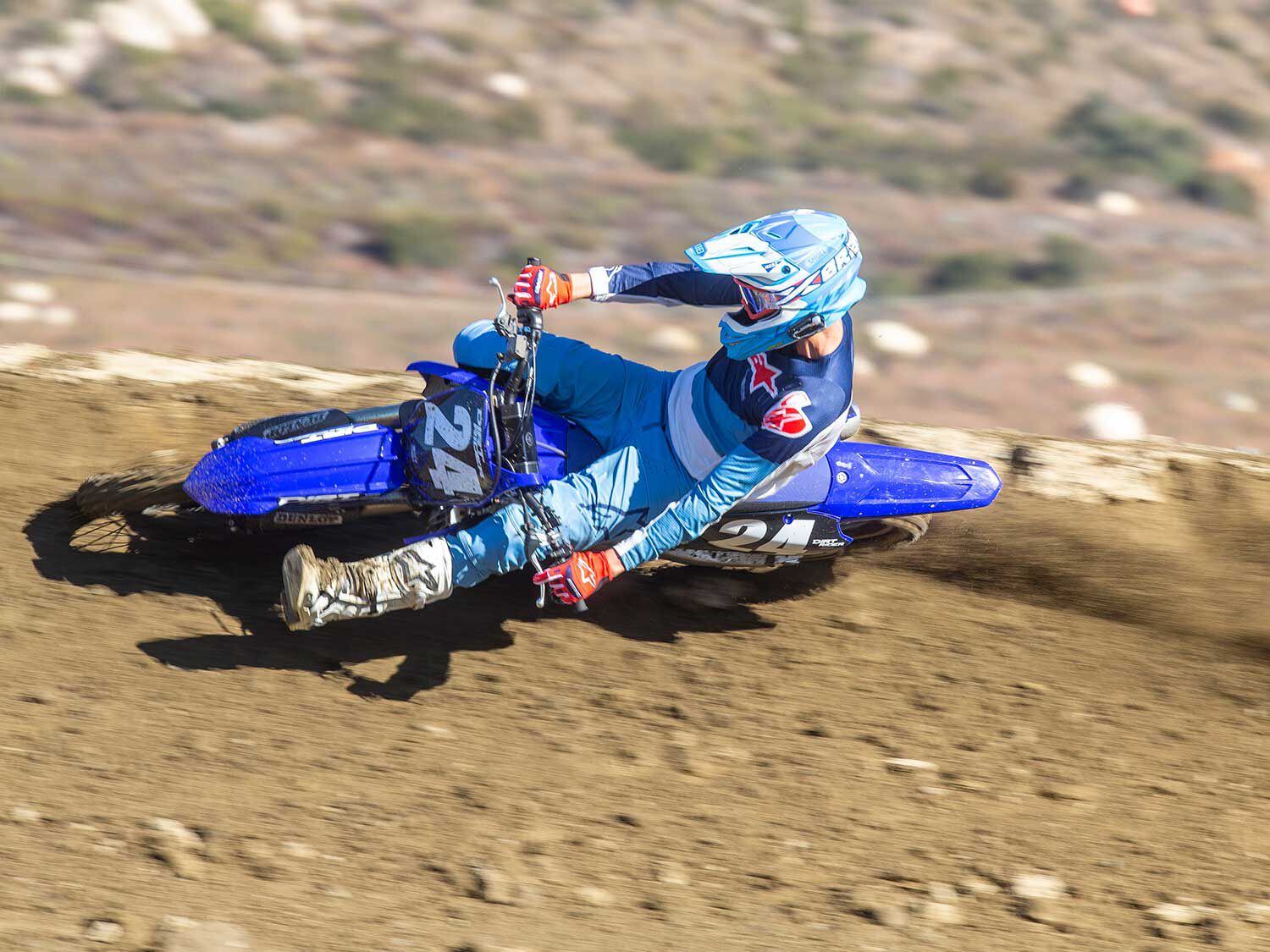
The Yamaha YZ250F wins <em>Dirt Rider</em>’s 2021 250 Four-Stroke Motocross Shootout with its well-rounded package in stock trim. (Jeff Allen/)Regardless, it has finished on the podium in Dirt Rider’s 250F Motocross Shootout since the 250F class has become a high-rpm horsepower battle in recent years. Most of what it needed to take the win was just that—additional top-end power. For 2021, the bLU cRU machine not only enjoys a more well-rounded powerplant, it also features chassis and suspension updates that yield even better performance in those areas, which enabled it to capture the victory in Dirt Rider’s 2021 250F Motocross Shootout.
Related: Best Motocross Bike 2nd Place—2021 Yamaha YZ450F
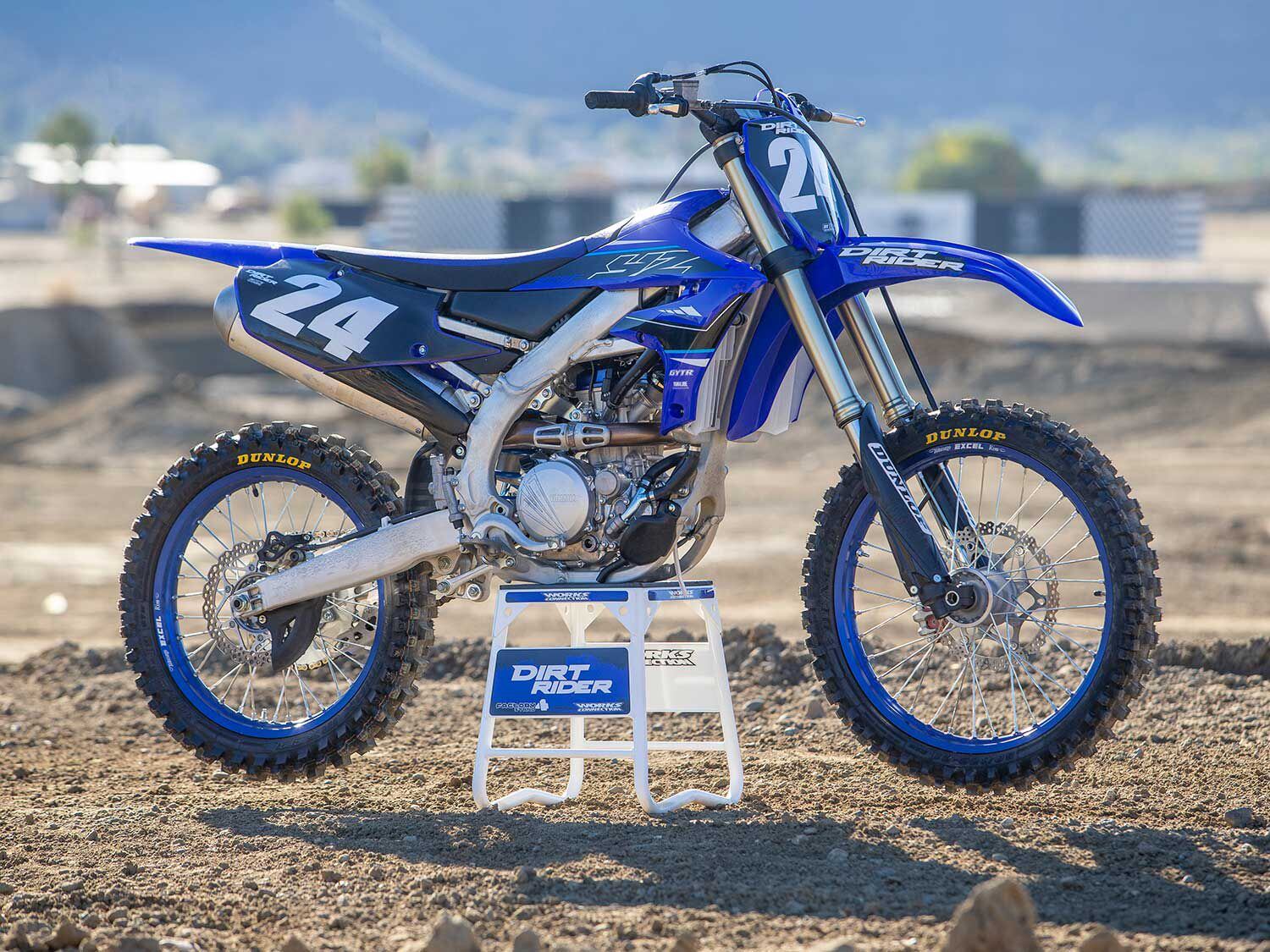
Although it looks fairly similar to last year’s model with the exception of the number plate and fork guard colors, the Yamaha YZ250F received some calculated refinements to its engine, suspension, and chassis for 2021. (Jeff Allen/)2021 Yamaha YZ250F Engine
All five bikes in the comparison test were run on the Dirt Rider dyno before the on-track testing commenced, where the YZ250F spun 39.0 hp at 13,000 rpm and 18.0 pound-feet of torque at 9,700 rpm. With those numbers, the YZ250F sits tied with the Honda CRF250R for the least peak horsepower, while also producing the least peak torque.
The YZ250F makes the least horsepower of all the bikes from 4,500 to 5,500 rpm, where it passes the Kawasaki KX250, then rises above the CRF250R shortly after at 5,700 rpm. From that point, the YZ250F produces the third most horsepower until it meets the CRF250R from 7,300 to 7,500 rpm, then gets passed by the red machine from that point until they meet once again from 12,100 to 13,100 rpm.
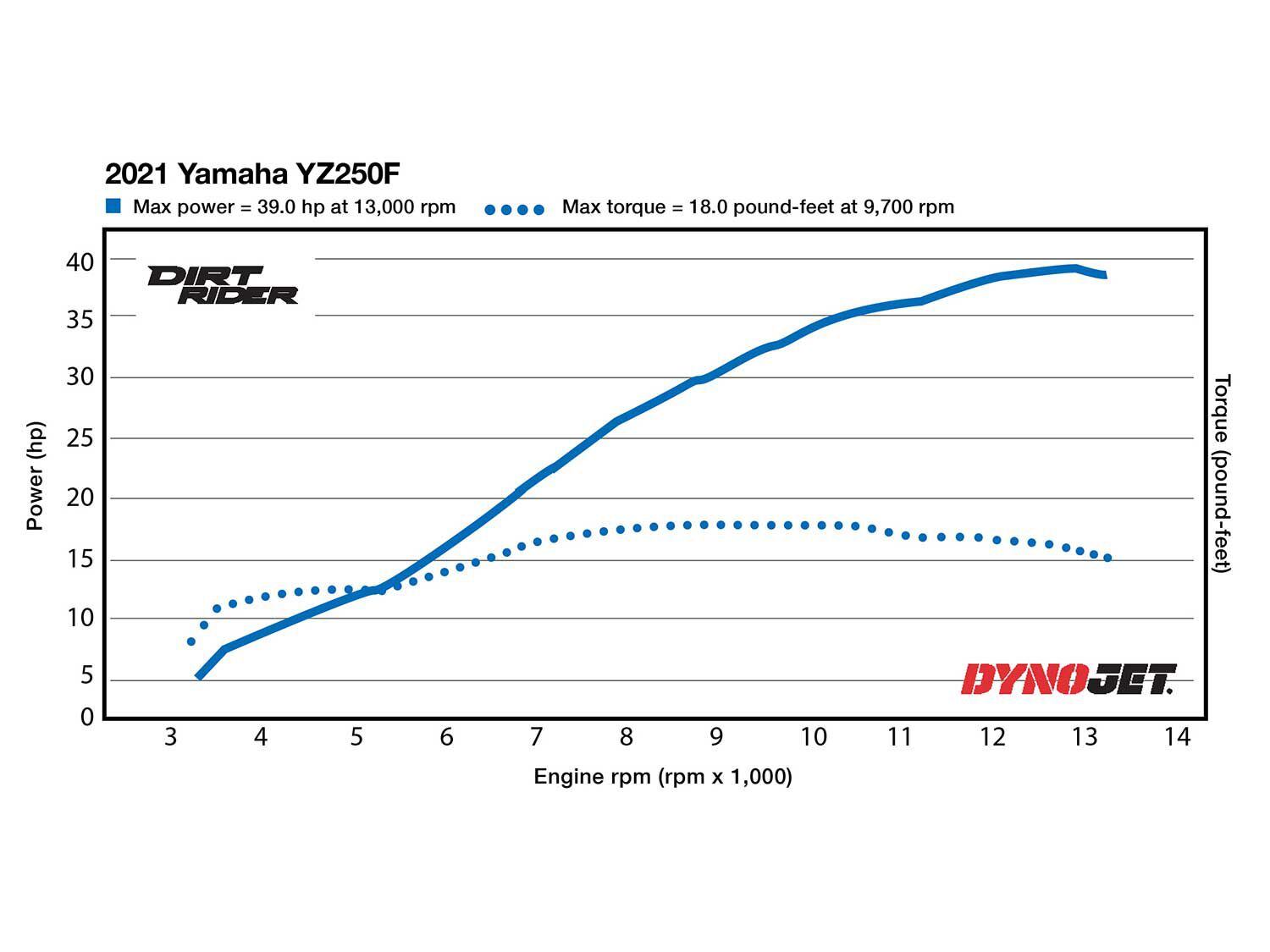
The Yamaha ties the Honda CRF250R for the least peak horsepower of the bikes in this comparison test with 39.0 hp at 13,000 rpm. Its 18.0 pound-feet of torque at 9,700 rpm is the lowest peak figure of the five motorcycles gathered here as well. Despite not being the top performer on the dyno, the bLU cRU’s engine is remarkable on the track. (Michael Gilbert/)After passing the KX250 on the horsepower curve at 5,500 rpm, the YZ250F engages in a back-and-forth battle with it. The Yamaha maintains a sizable gap over the green machine until 8,800 rpm, where it gets overtaken by the KX250 from that point until 10,200 rpm. The two bikes meet from that engine speed to 10,700 rpm, where the KX250 once again pulls a gap on the YZ250F before meeting it for the last time from 12,400 to 12,600 rpm. Team Green maintains its lead in the dyno duel against the bLU cRU from that point until peak. The YZ250F is unable to match the Austrian duo of the KTM 250 SX-F and Husqvarna FC 250 from 4,500 rpm to peak along the horsepower curve.
On the torque curve, the YZ250F performs similarly as it does on the horsepower curve in regard to where it stacks up against the competition at different rpm ranges. It makes the least pound-feet of torque from 4,500 to 5,500 rpm, passes the KX250 and CRF250R at 5,500 and 5,700 rpm, respectively, then gets passed by the CRF250R at 7,500 rpm and the KX250 at 9,000 rpm. The YZ250F then matches the KX250 from 10,000 to 10,700 rpm before getting surpassed by the green bike once again from that point until matching it for a final time from 12,000 to 12,600 and equaling the CRF250R from 12,000 to 13,100 rpm. Although it comes close to doing so at 8,000 rpm, and from 10,000 to 10,300 rpm the YZ250F does not tie or beat the 250 SX-F and FC 250 at any point along the torque curve.
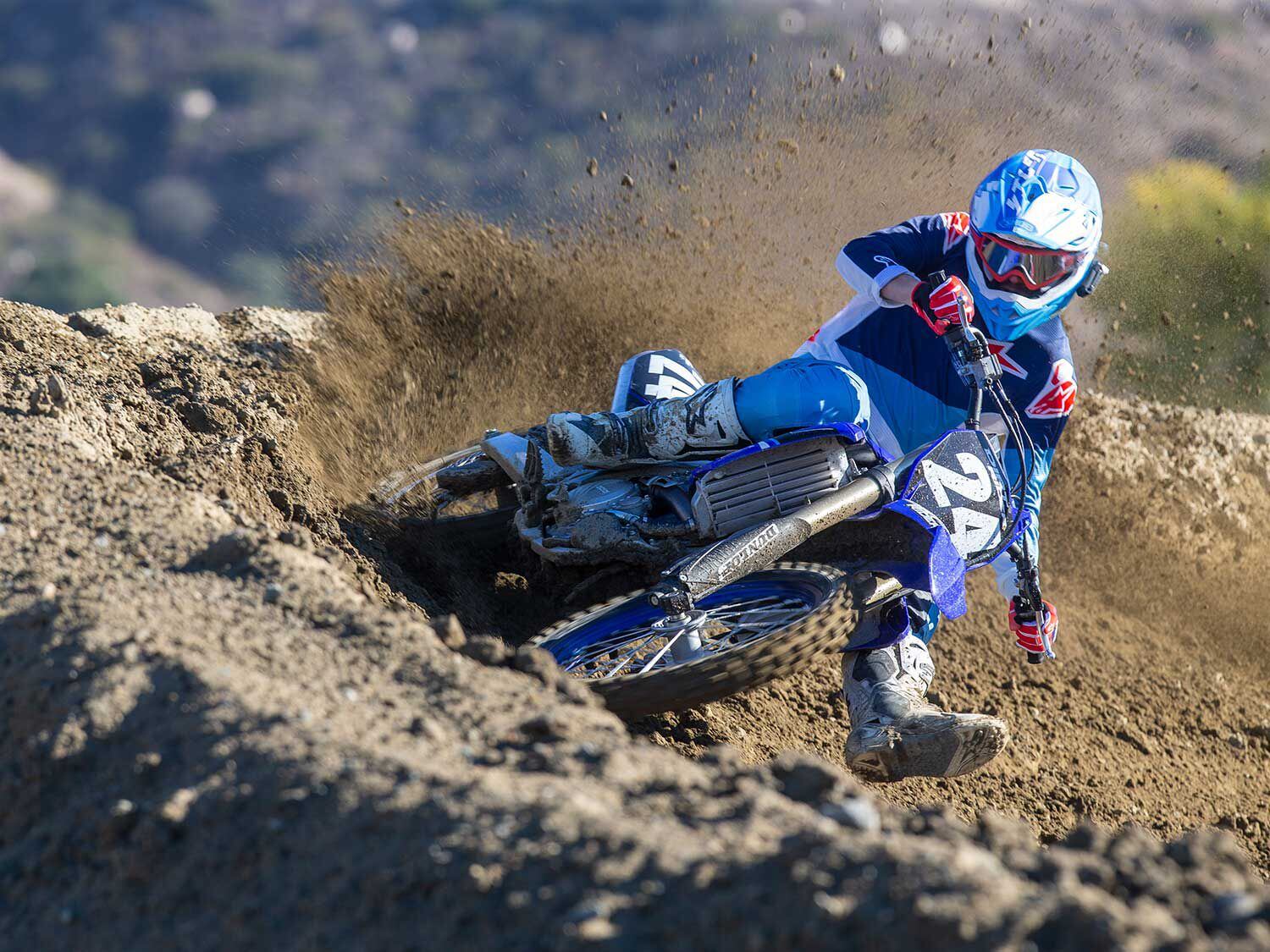
“The YZ250F’s low-end power and torque feel throughout the rpm range are unmatched, and with the updates made to the cylinder head and intake for 2021, it is comparable to most of the other bikes in the upper part of the rpm range.” <em>—Andrew Oldar</em> (Jeff Allen/)If you were to only look at the dyno chart, you might not think the YZ250F possesses one of the most potent engines in the class, but nothing could be further from the truth. With its class-leading low- to midrange power and torque feel throughout the rpm range combined with its crisp throttle response, the YZ250F accelerates the quickest of all the bikes and reaches its rev limiter in a swift manner because of how strongly it pulls from bottom to top.
Producing 0.8 more peak horsepower at 500 rpm higher than last year’s model, test riders appreciated the YZ250F’s additional top-end and longer powerband as they no longer felt the desire or need to short-shift the bike like in years past. Possessing more bottom-end power than any other bike in the class enables the YZ250F to remain the most capable at riding a gear high in most areas around the track as well; it even comfortably pulls third gear in some fairly tight corners.
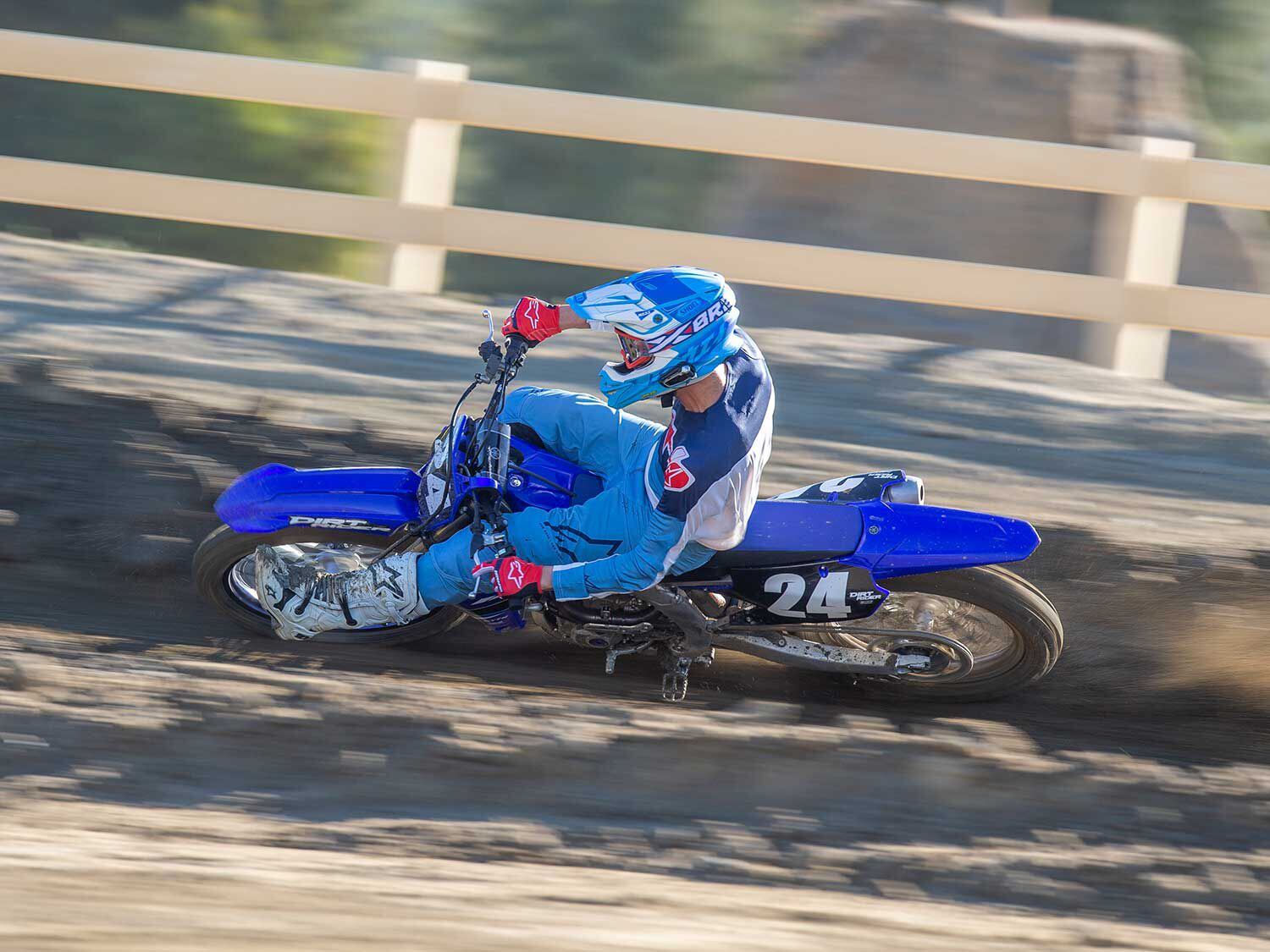
“Yamaha might have the most balanced engine package of all. Its power delivery is slightly harsher off the bottom in my opinion, but that’s not necessarily a bad thing as it allows you to get up to speed out of a slow corner or hit a jump out of a tight line. The only downside is that it’s still loud!” <em>—Michael Gilbert</em> (Jeff Allen/)The YZ250F features the best cable clutch in the shootout with an easy pull, but it does fade a little when abused unlike the hydraulically actuated units on the 250 SX-F, FC 250, and KX250. Also, although the bLU cRU machine has some detectable engine-braking, it is not excessive and easy to control. One of the only minor downsides to the YZ250F engine is that although the 2021 model’s new muffler is 70mm (2.75 inches) longer than the outgoing unit, the bike is still fairly loud.
2021 Yamaha YZ250F Tunability
Yamaha is currently the only manufacturer to offer free and wireless EFI tuning capability for off-road motorcycles with its Power Tuner app, which is an iOS- and Android-based smartphone application that connects to the bike via Wi-Fi and enables the user to adjust the fuel delivery and ignition timing of the bike for different power delivery characteristics.
In addition to having preconfigured maps available in the app, Yamaha is constantly creating, testing, and publishing additional maps for the YZ250F and its other four-stroke motocross and off-road models that can be viewed and downloaded on its website. Another convenient factor about the Power Tuner app is that it logs the engine’s total run time, thereby alleviating the need to purchase and install an hourmeter on the bike. The Power Tuner app has enabled the Tuning Fork brand to remain at the forefront of EFI tuning capability since it was first introduced on the 2018 YZ450F, and the same rings true for yet another year.
Although the YZ250F’s stock map is excellent and very well-rounded, Dirt Rider test riders spent plenty of time spinning laps with different maps uploaded to the bike that were created by Yamaha’s in-house test team. Test riders commented that the “Over-rev Map” provided a slightly broader delivery with longer pulling power up top, which was useful on the long straightaways and uphills of Glen Helen. On the other hand, the “Exciting Power (Low-Mid Pulling Power Feel) Map” performed great as well, but would be more beneficial on a tighter track with more short acceleration zones.
2021 Yamaha YZ250F Suspension
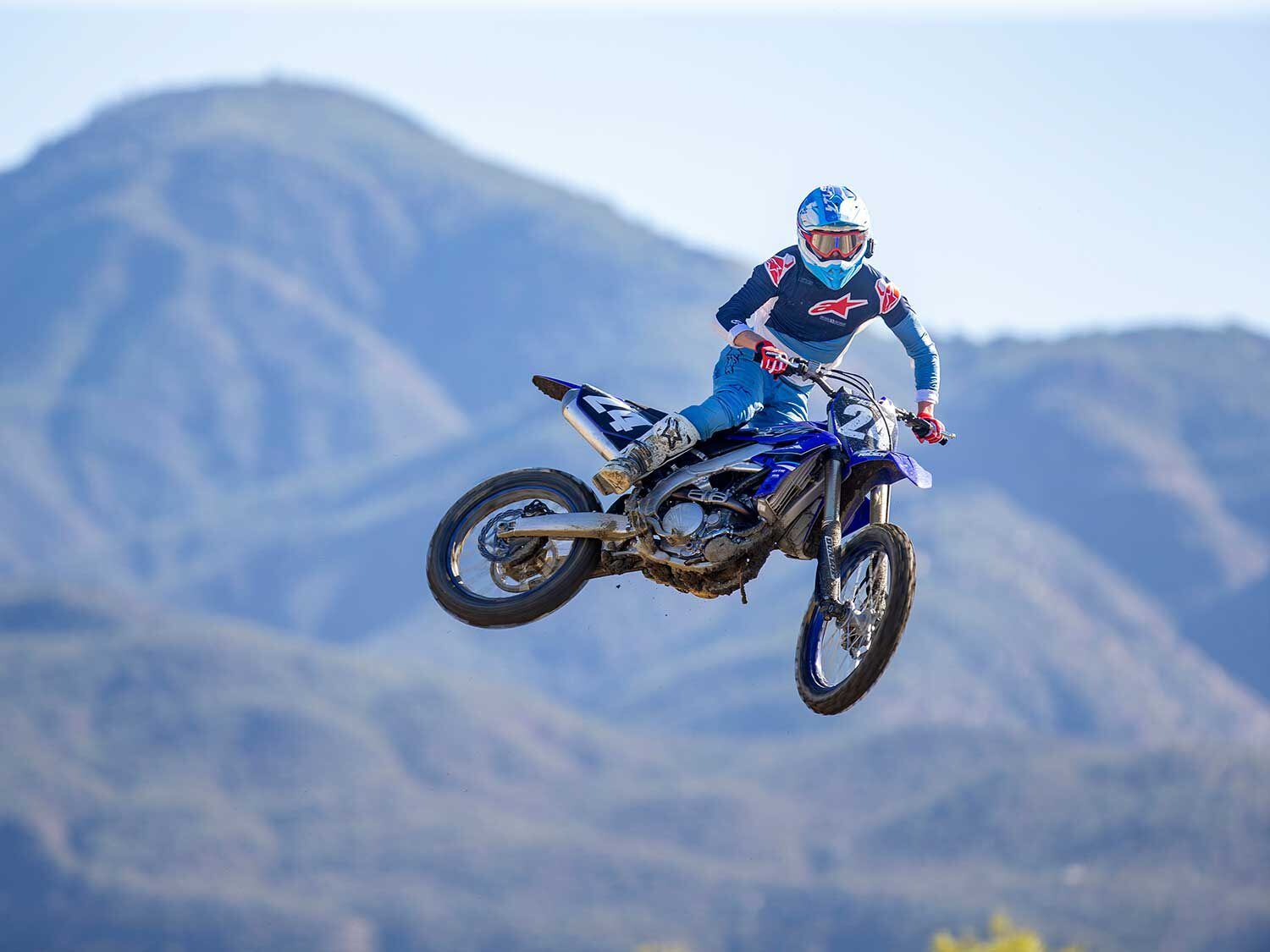
“There are only minimal changes to be made to the YZ250F’s suspension depending on the track conditions because it is so close to perfect in stock form. The balance is very close. I made no adjustments to the ride height and didn’t notice any excessive pitching either.” <em>—Allan Brown</em> (Jeff Allen/)With its KYB Speed Sensitive System (SSS) fork and KYB shock, the YZ250F easily has the best suspension in the class with the most comfort. The components are supple in the initial part of the stroke, maintain great holdup, and are very progressive throughout the entirety of the travel. Bottoming resistance is excellent and the balance from front to rear is near perfect.
The YZ250F’s suspension setup is the most well-rounded and versatile for the widest range of rider weights and skill levels, and is no more than a few clicks away from an ideal setting for those who feel they need to make adjustments. It is also worth noting that with the YZ250F’s standard shock spring rate of 56 Nm, we were able to set the bike’s sag to the recommended 102–106mm for a fairly wide range of rider weights; in our case, ranging from 125 to 175 pounds.
2021 Yamaha YZ250F Chassis/Handling
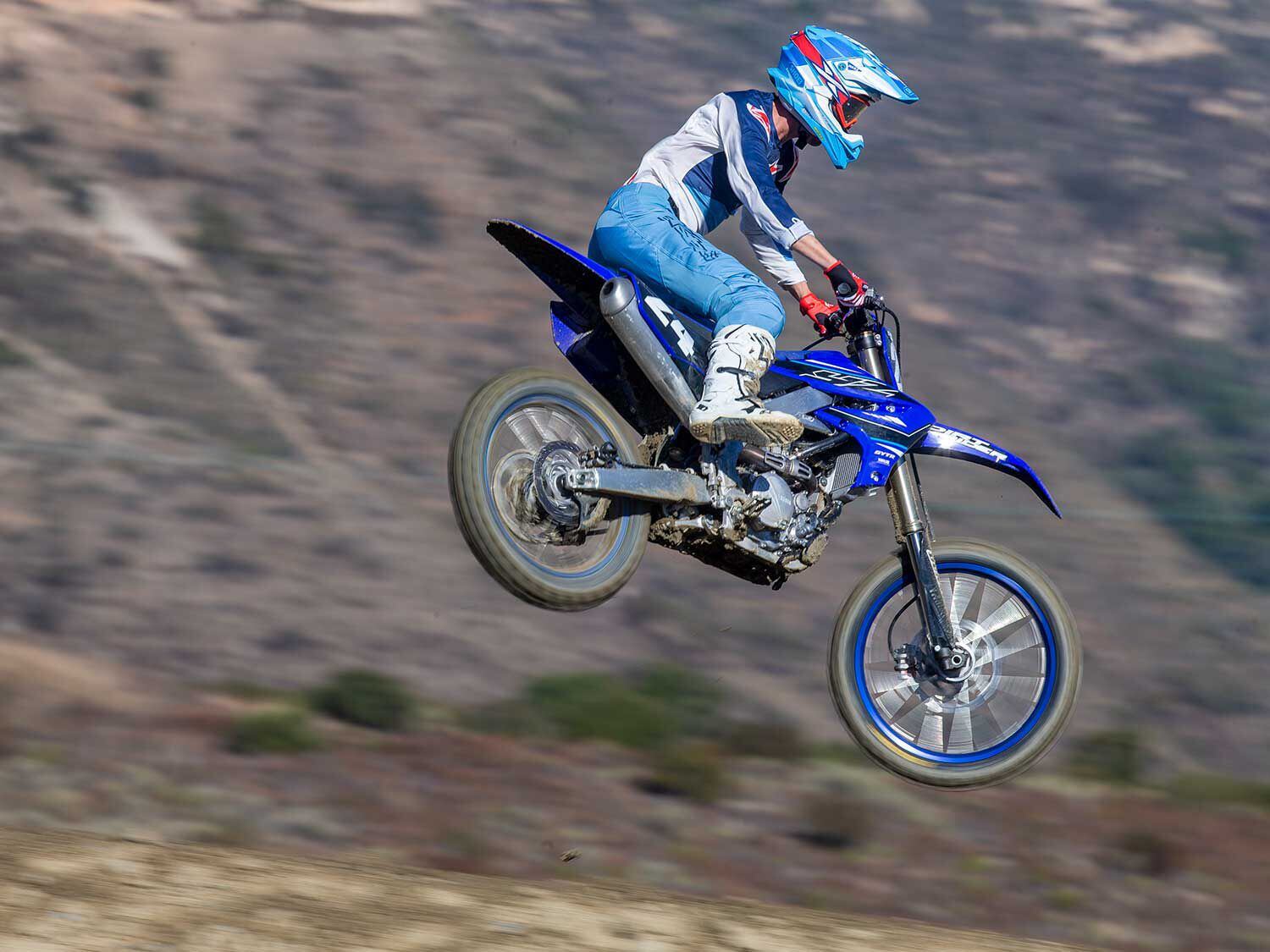
“The Yamaha is stable over bumps, down straightaways, and in corners. Also, the wheelbase feels short, which makes the bike easy to control and put it where you want it.” <em>—Tanner Basso</em> (Jeff Allen/)Retaining its accolade of being the most stable and planted 250F motocross bike, the YZ250F corners better than ever and has a slightly nimbler overall feel than in years past. It refuses to shake its head and stays as straight as an arrow in rough terrain, which makes it the most confidence-inspiring bike to ride as the day wears on and the track gets rougher. With that, it gives up a little bit of cornering ability in comparison to the other motorcycles—namely upon initial lean-in, but not much or enough for test riders to want to make any adjustments to try to improve it.
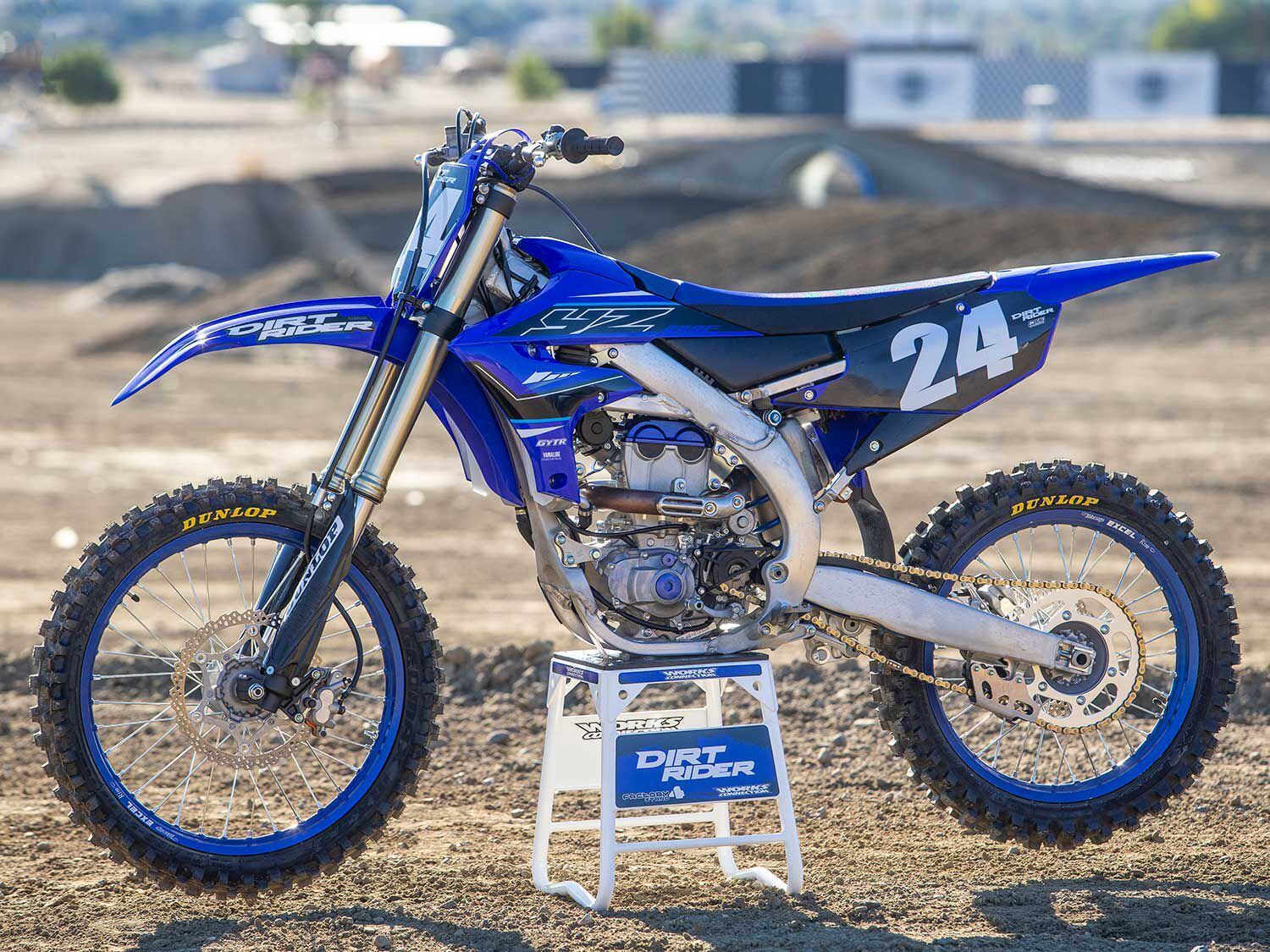
At 235 pounds the YZ250F hits in the middle of the spectrum of the five bikes in terms of wet weight. (Jeff Allen/)Coming in at 235 pounds on our automotive scales, the YZ250F falls right in the middle of the weight spectrum of the bikes in this comparison test. It is 3 pounds more than the lightest bike, the 250 SX-F, and 3 pounds less than the heaviest machine, the KX250. Despite that, it feels like it could be the heaviest when ridden on the track due to its weight feel, but it is a minor point and is mostly detectable only when comparing it back to back against the other bikes. Although the YZ250F’s Nissin brakes aren’t as strong as the Brembo units that come standard on the 250 SX-F and FC 250, the Yamaha’s binders are plenty powerful and have a remarkably progressive feel at the lever.
The YZ250F is noticeably a little wider than the other machines in the radiator shroud area and the upper part of the midsection where the fuel tank is. Also, its rider triangle is a bit off. One contributing factor to that is that the handlebar is positioned in the forward holes of the top triple clamp in stock trim; test riders prefer to have it mounted in the rearward holes to improve the steering control and make the rider triangle feel more neutral. Additionally, because the seat has fairly thin seat foam and a noticeable dip in it, the distance between it and the footpegs is a bit short. A relatively inexpensive and easy-to-install part to improve the rider triangle is the GYTR Tall Seat, which also makes it easier to go from sitting to standing.
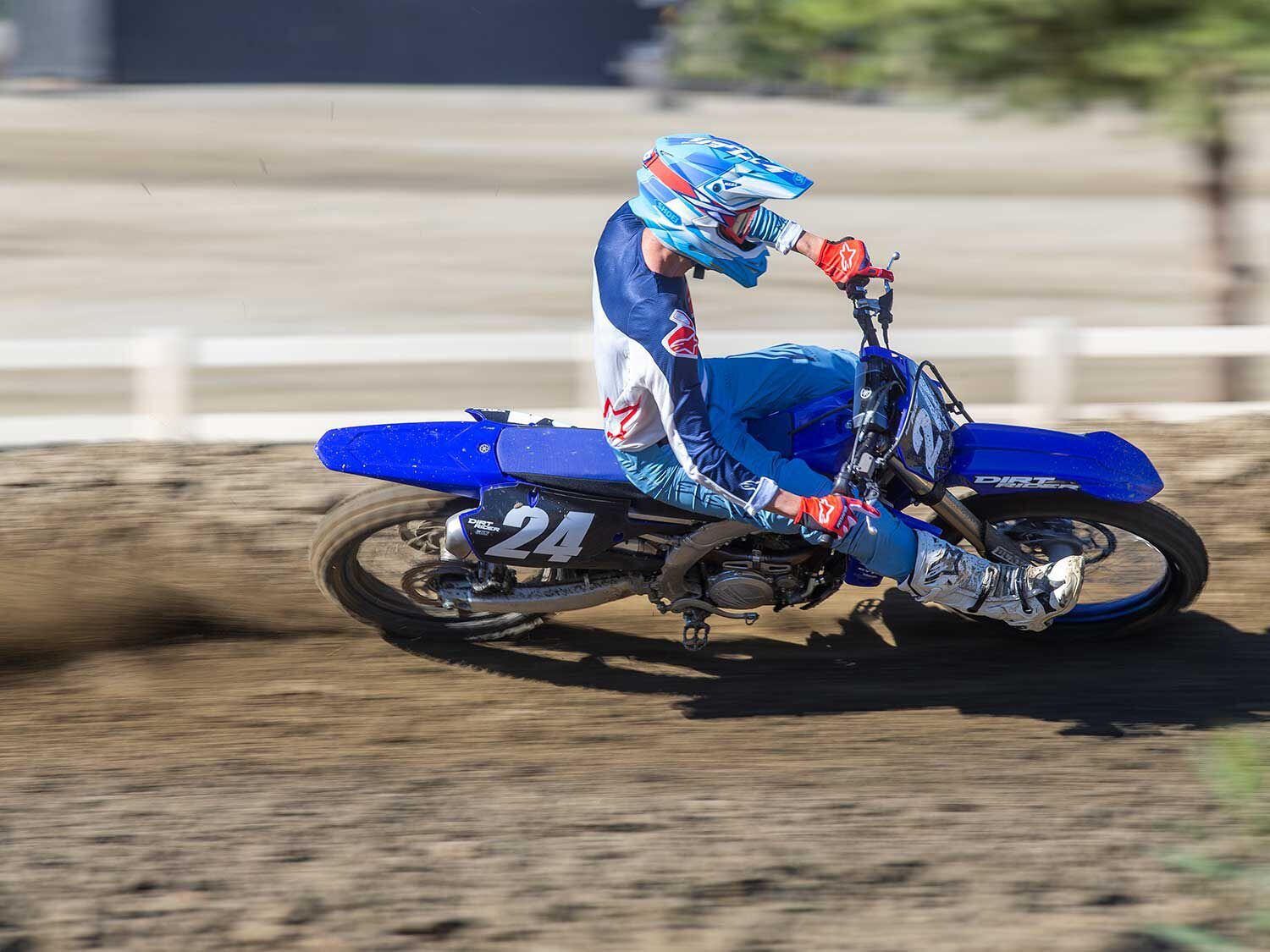
“The few downsides of the YZ250F are that it is not the most agile bike and its bulky feel makes it a little difficult to lean and carve corners.” <em>—Michael Wicker</em> (Jeff Allen/)Why the 2021 Yamaha YZ250F Won
The YZ250F boasts the most well-rounded engine with the best bottom-end power, a meaty midrange, decent top-end, and the most torque feel throughout the rpm range. It also features the best suspension in the class that is attached to a chassis that is stable, predictable, and nimbler than the outgoing model. Lastly, its EFI tuning capability is world-class, wireless, and free.
Why the 2021 Yamaha YZ250F Shouldn’t Have Won
It doesn’t corner quite as well as some of the other bikes, is a bit wide in the radiator shroud area and upper midsection, has a slightly disproportionate rider triangle, and is still one of the loudest bikes in the class.
Gearbox
Helmet: Shoei VFX-EVO
Goggle: EKS Brand Gox Flat-Out
Jersey: Alpinestars Techstar Factory
Gloves: Alpinestars Techstar
Pant: Alpinestars Techstar Factory
Boots: Alpinestars Tech 10
-
As the bike that began and set the standard for the current trend of high-revving, high-horsepower 250 four-stroke motocross bikes, the KTM 250 SX-F still reigns as king of the class in terms of raw horsepower while producing some of the best torque figures. Combine that with its improved suspension settings and proven chassis, and you have a well-rounded package right out of the box. Perhaps the KTM’s only perceived shortcoming is that its high-rpm powerband naturally suits those who ride aggressively, which happens to mostly be riders and racers of intermediate to pro level in skill. And while that can also be said of the three other bikes that finished behind it, the 250 SX-F is still the second best bike in terms of low-rpm power and torque feel, which is one of the reasons it finishes in front of them.
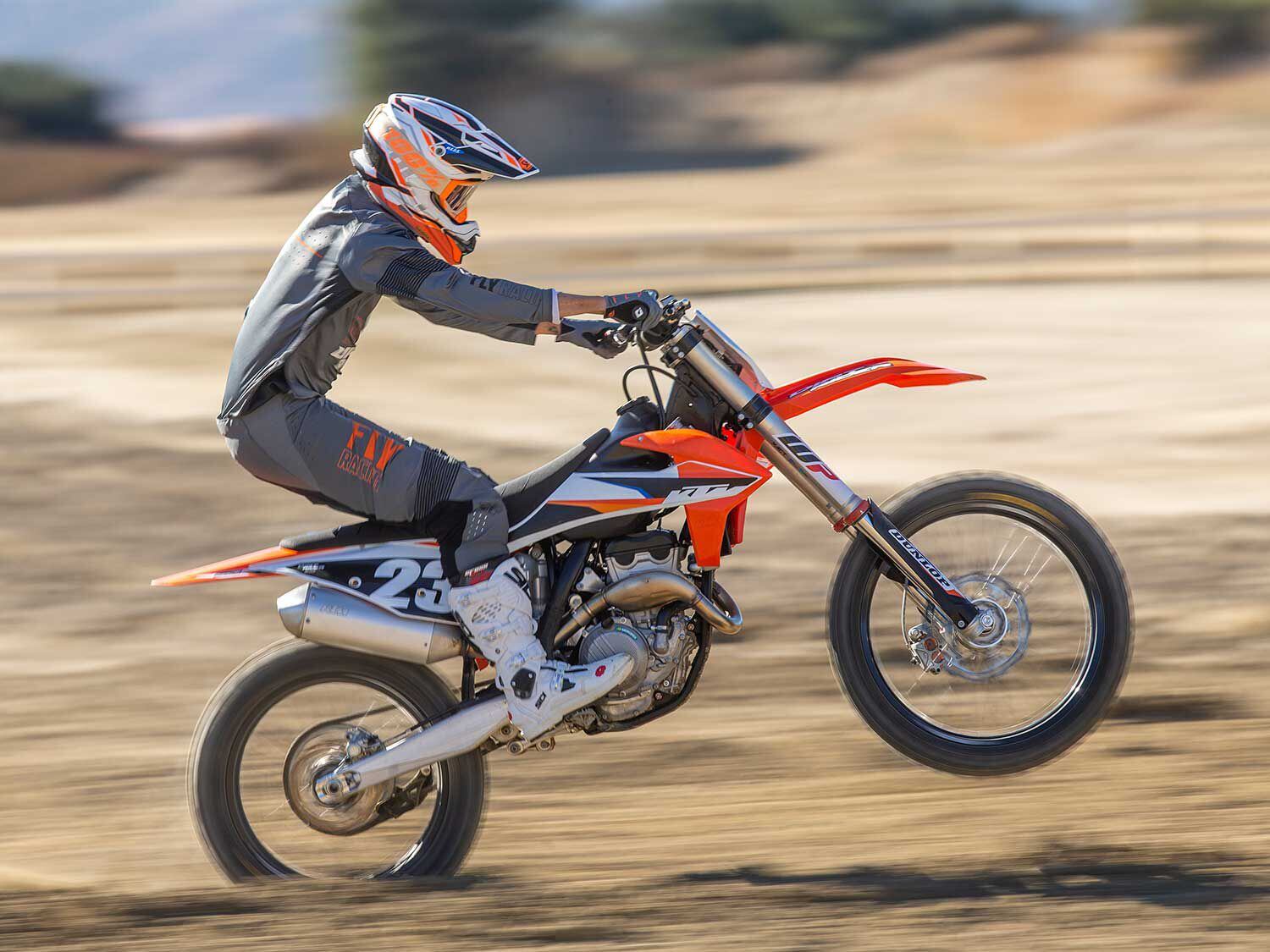
“The KTM 250 SX-F is an expert’s motorcycle that has widespread gear ratios and requires revs to make it go anywhere, but it is approachable to the everyday rider.” <em>—Michael Gilbert</em> (Jeff Allen/) In fact, the only machine that is ranked in front of it has more low-end grunt and is now a competitor in the high-rpm horsepower battle—the combination of which enables it to be ridden easier and more effectively by lower level riders who aren’t willing or don’t want to go for broke with their throttle hand, while also being given the nod by intermediates and pros alike. It’s close at the top of the 250F motocross bike class, and although the KTM 250 SX-F didn’t take the victory this year, it is still an excellent choice for riders far and wide, especially those who fit the bill for its engine characteristics.
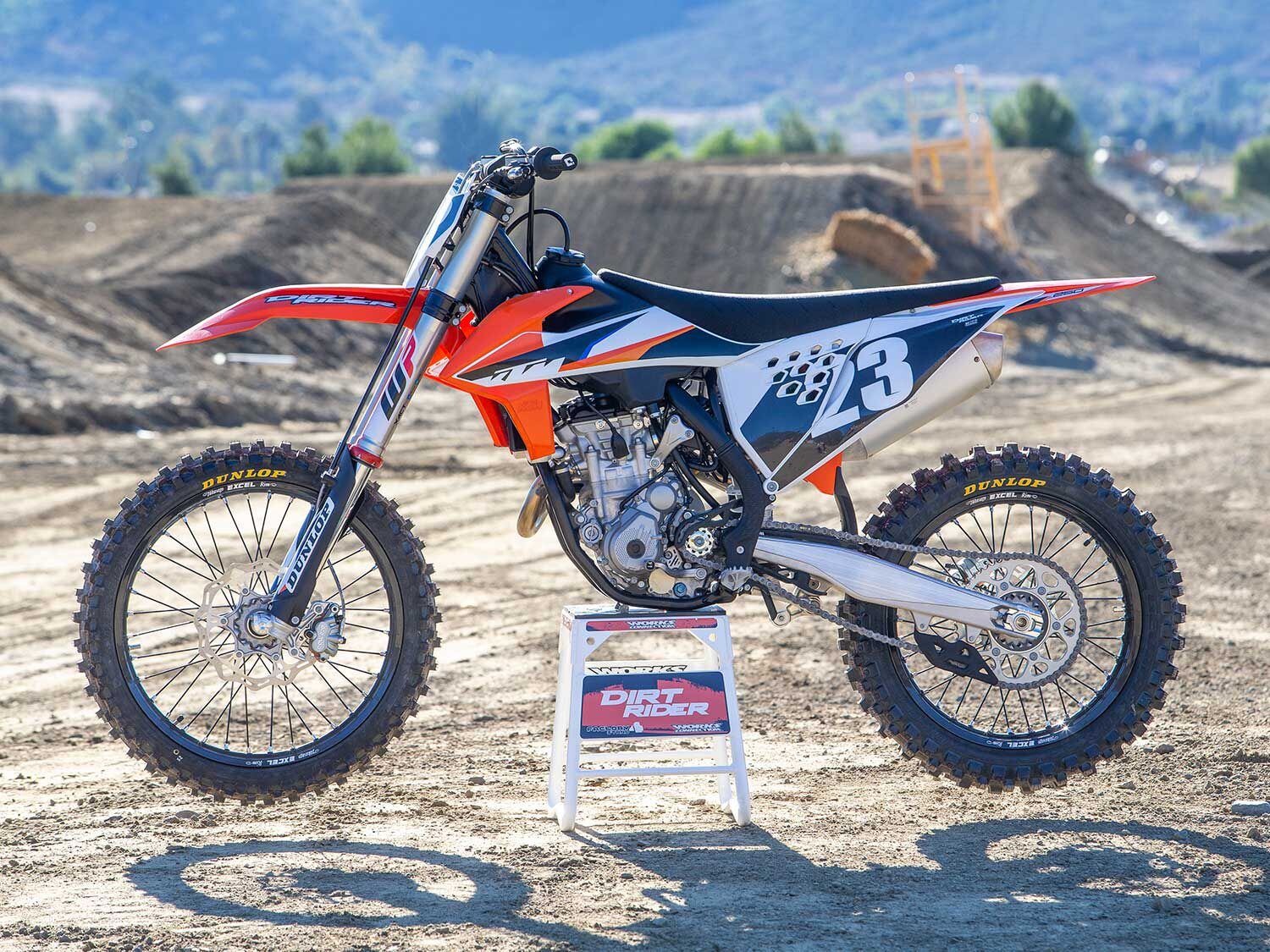
Hitting the scales at 232 pounds, the 250 SX-F is the lightest bike in the class. (Jeff Allen/) 2021 KTM 250 SX-F Engine
Like it has in years past, the 250 SX-F performed superbly on the dyno with 41.1 hp at 13,700 rpm and 19.1 pound-feet of torque at 9,100 rpm, which gives it the most peak horsepower in the class and the second most peak torque.
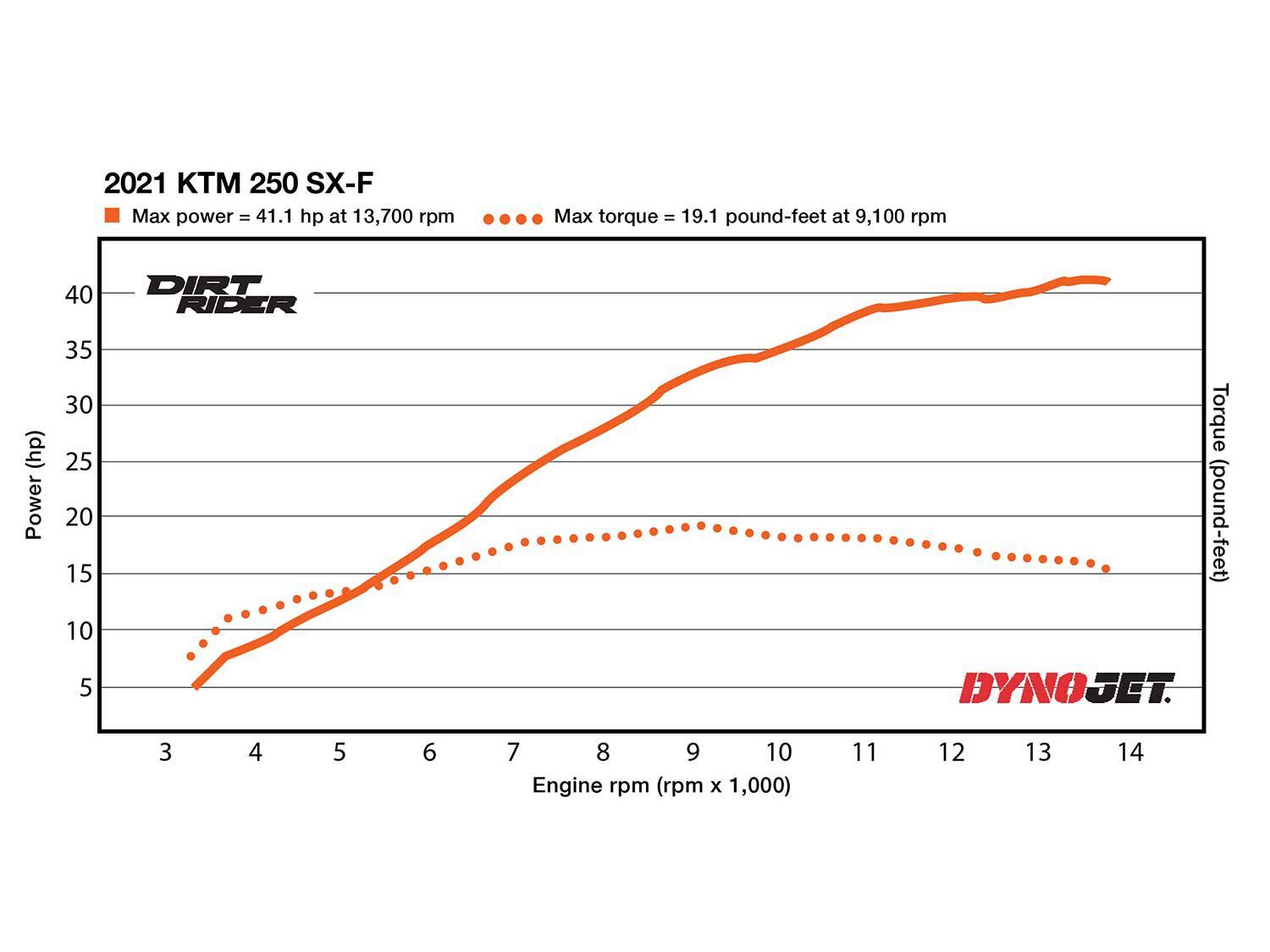
The KTM is the king of the dyno in the 250 four-stroke motocross bike segment once again. Its 41.1 hp at 13,700 rpm is the highest peak figure in the class, while 19.1 pound-feet of torque at 9,100 rpm puts the orange machine at just 0.2 pound-feet less at peak than the Husqvarna FC 250. (Michael Gilbert/) Sharing the same engine as the Husqvarna FC 250, the 250 SX-F follows a similar horsepower curve to its Austrian counterpart with both bikes producing the most horsepower in the class from 5,200 to 8,200 rpm. The Austrian duo are matched by the Honda CRF250R from 8,200 to 8,400 rpm and surpassed by it from 9,700 to 10,800 rpm. The 250 SX-F and FC 250 make more horsepower than the KX250 and YZ250F from 4,800 rpm on up.
The 250 SX-F produces just a touch more horsepower than the FC 250 from 6,100 to 6,500 rpm, 11,000 to 11,500 rpm, 11,900 to 12,400 rpm, and 12,700 rpm until peak. The only area along the horsepower curve the 250 SX-F is down from the FC 250 is a minor amount from 8,800 to 9,800 rpm. The 250 SX-F also makes its class-leading 41.1 peak horsepower at the highest rpm of all the bikes.
Related: 2020 KTM 450 SX-F Factory Edition Review First Ride
As far as torque, the 250 SX-F again follows a similar curve to the FC 250 with the only minor exception being their peak figures. Although the Austrian duo produce their highest number at 9,100 rpm, the 250 SX-F spins just 0.2 less pound-feet at peak than the FC 250. Another notable point is that the 250 SX-F cranks out slightly more torque from 13,000 rpm to peak.
Compared to the Japanese bikes, the 250 SX-F makes more than the KX250 and YZ250F from 5,200 rpm on up and is only matched by the CRF250R from 8,000 to 8,400 rpm and is superseded by the red bike from 9,500 to 10,600 rpm. After following a similar curve to the CRF250R until 11,600 rpm, the 250 SX-F is unmatched by any of the Japanese bikes from that point until peak.
Related: Best Motocross Bike 3rd Place—2021 KTM 450 SX-F
On the track, the 250 SX-F doesn’t have the strongest low-end power, but it does have the second most behind the YZ250F. From there, it only gets better as the rpm increase. The engine pulls seemingly forever and never signs off. When it does reach the rev limiter, it doesn’t hit a proverbial wall and lose power; it just keeps pulling and maintains momentum until the rider grabs another gear. The 250 SX-F ties the FC 250 for the second best torque feel in the class as it doesn’t offer as much as the class-leading YZ250F, but does possess more than the KX250 and CRF250R. For that reason, if the rider misses a shift or selects the wrong gear, it gets back into the meat of the power quicker than the red and green bike, but not nearly as swiftly as the YZ250F.
Other factors that play into the 250 SX-F, and the FC 250 for that matter, having less low-end grunt and rpm recovery than the YZ250F are the Austrian bikes’ gear ratios and the gearing itself. Because the gear ratios are long, it makes gear selection more crucial to using their power effectively. The best strategy is to ride each gear as long as possible, ideally until coming close to or actually hitting the rev limiter, then finally upshifting. Also, the 250 SX-F and FC 250 come with fairly tall 14/51 gearing. Taking all of that into account, some test riders commented that they would consider adding a tooth or two to the rear sprocket or even trying a 13-tooth countershaft sprocket to liven up the bottom-end power and make gear selection less critical.
2021 KTM 250 SX-F Suspension
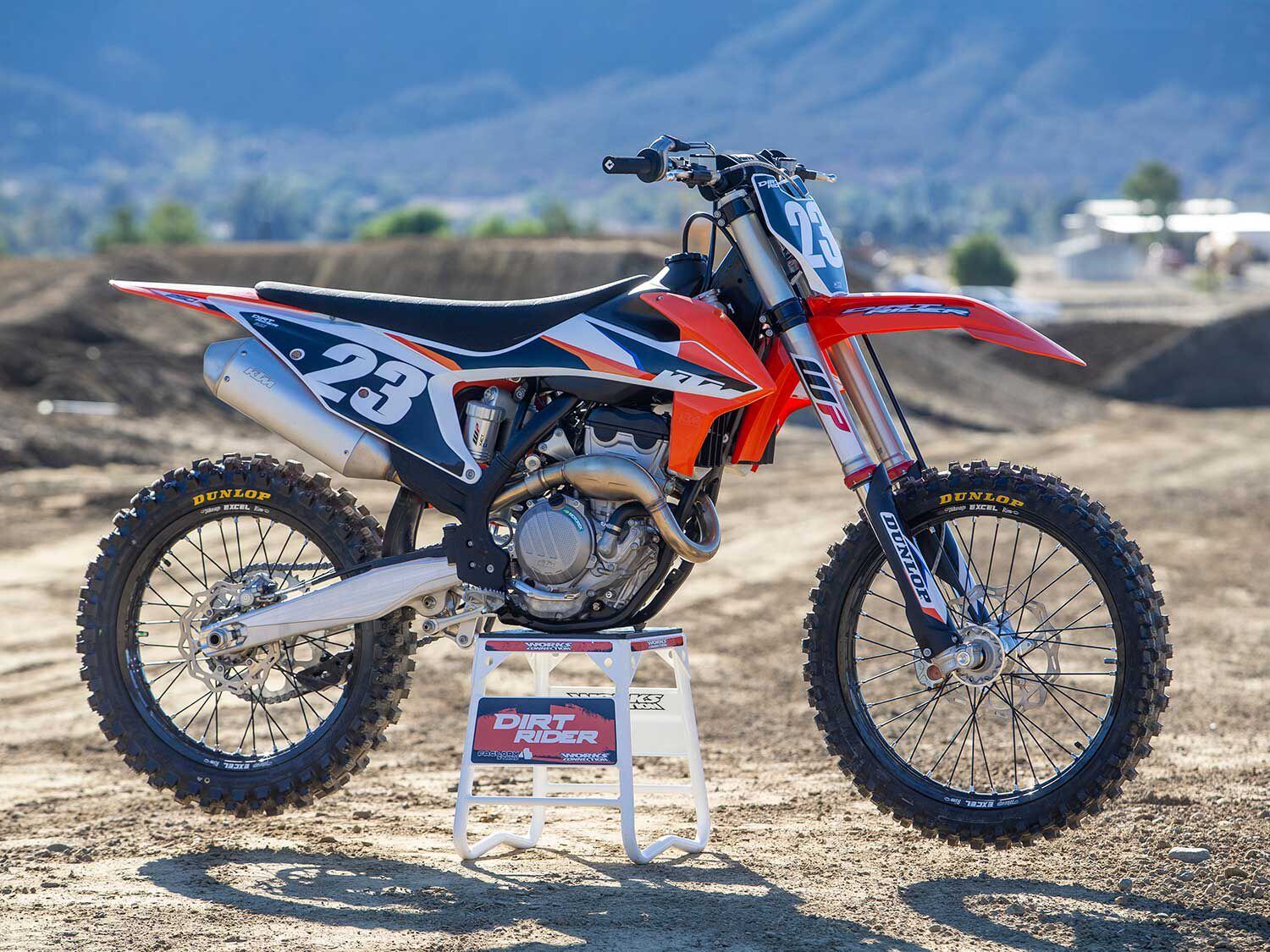
Updates to its WP Xact air fork and WP Xact shock along with the addition of new low-friction linkage bearing seals made by SKF are the mechanical changes the KTM 250 SX-F enjoys for 2021. (Jeff Allen/) KTM makes changes to the suspension setup of its motocross bikes each year, and the 2021 250 SX-F features the best suspension setting it has had since the latest generation was introduced in 2019. The WP Xact air fork and WP Xact shock have somewhat of a springy feeling while sitting on the bike, but have decent rebound control while riding. The WP components are also more progressive than ever with a fairly supple feel in the initial part of the stroke combined with impressive bottoming resistance.
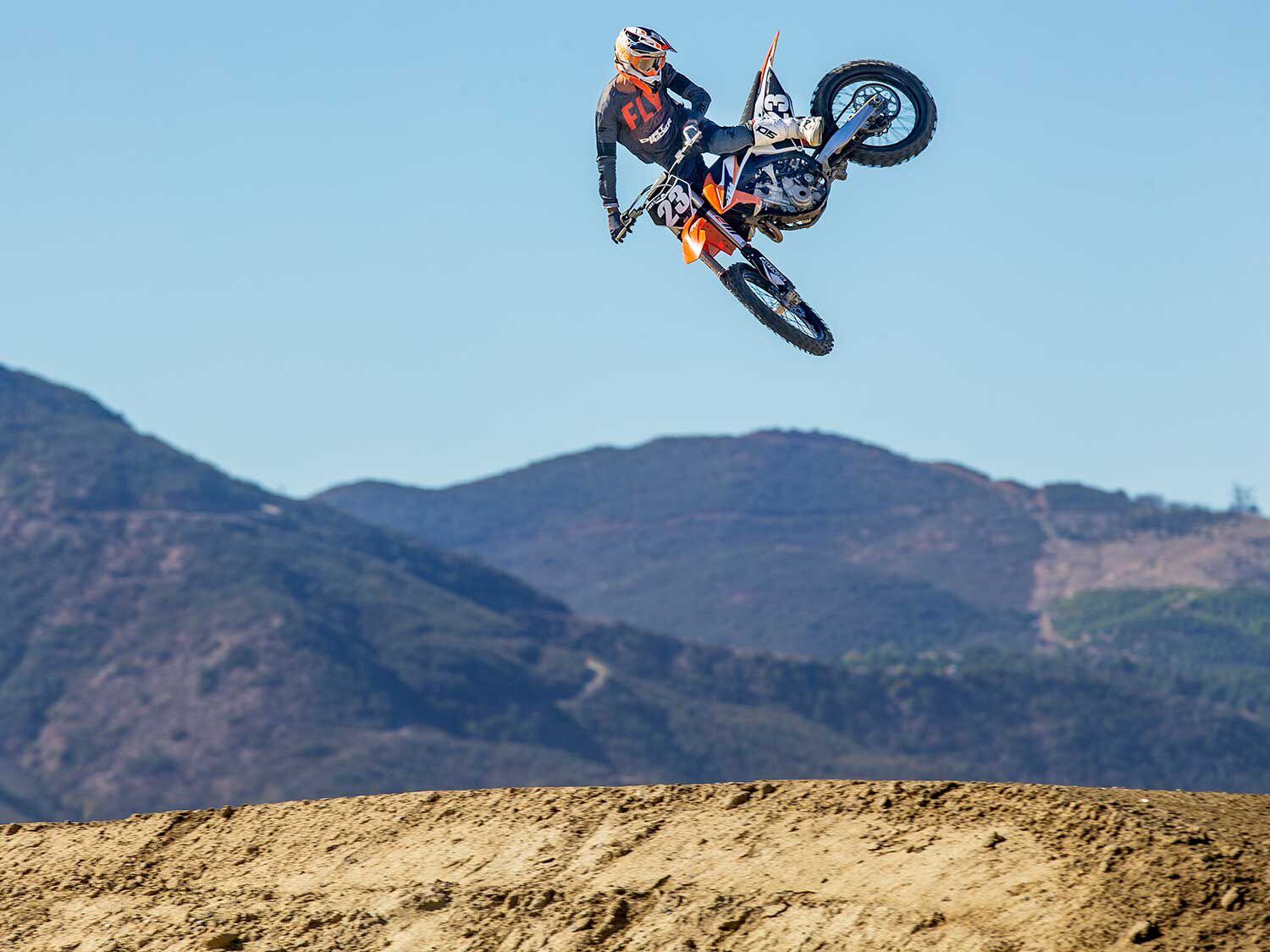
“The WP Xact suspension components on the KTM are plush. They soak up all bumps very well, yet hold up great over big landings and deep in the stroke.” <em>—Tanner Basso</em> (Jeff Allen/) The stock settings are tunable, and although many test riders set the sag and left the clickers alone for the most part, a few others noted improvements to the fork by increasing the air pressure from the stock 10.5 bar to 10.7 bar, which offered more holdup and comfort and helped reduce pitching. The shock settings are also very close in standard trim. Some test riders opted to raise the sag from the recommended 105mm up to 103mm and added anywhere from a quarter to a half turn on the shock’s high-speed compression to help pick up the rear of the bike, which rides just a little low in the stroke. Both of these adjustments improved the shock’s comfort and reduced the chassis’ slight chopper stance.
2021 KTM 250 SX-F Chassis/Handling
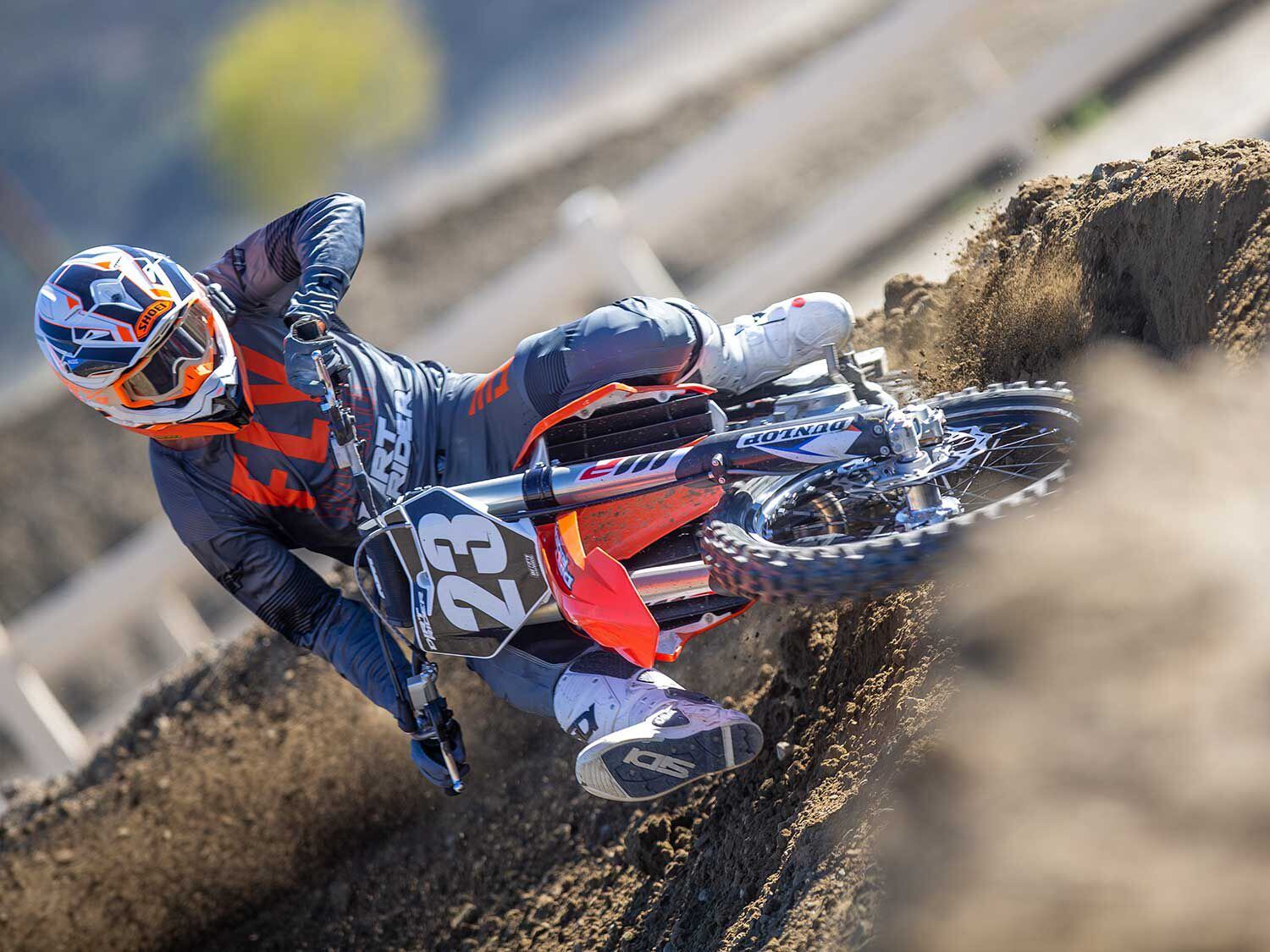
“The KTM chassis feels much more lively than the Husqvarna’s, meaning it takes time for the bike to settle into the corner and rip out. It turns well, and in combination with its easy power delivery, makes for an easy motorcycle to ride. Like the Husqvarna, the KTM has a ton of braking power that quickly brings it to a stop.” <em>—Michael Gilbert</em> (Jeff Allen/) With its light and nimble feel on the track, the 250 SX-F is one of the easiest bikes in the class to maneuver. That can partially be attributed to the fact that it is indeed the lightest 250F motocross bike at 232 pounds. It is plenty stable at speed and corners well, and some test riders commented that it is also the most effortless to corner while standing. The orange machine’s slight chopper feeling is decreased by setting less shock sag and its cockpit is large and roomy, assisted by the wider than usual Neken handlebar.
Test riders noted that if the 250 SX-F were their personal bike, instead of cutting the stock handlebar by 4–5mm on each side to give it a more traditional width like those that come standard on the Japanese models, they would instead prefer to invest in a different handlebar altogether such as a Renthal Fatbar or ProTaper Evo for more flex and comfort. Narrow bodywork and a sit-on feeling contribute to the KTM’s racy feeling as well. Like all of the Austrian brand’s full-size motocross bikes, the 250 SX-F features Brembo brakes, which are the most powerful in the class. Test riders also praised the bike for its comfortable seat and excellent ODI lock-on grips.
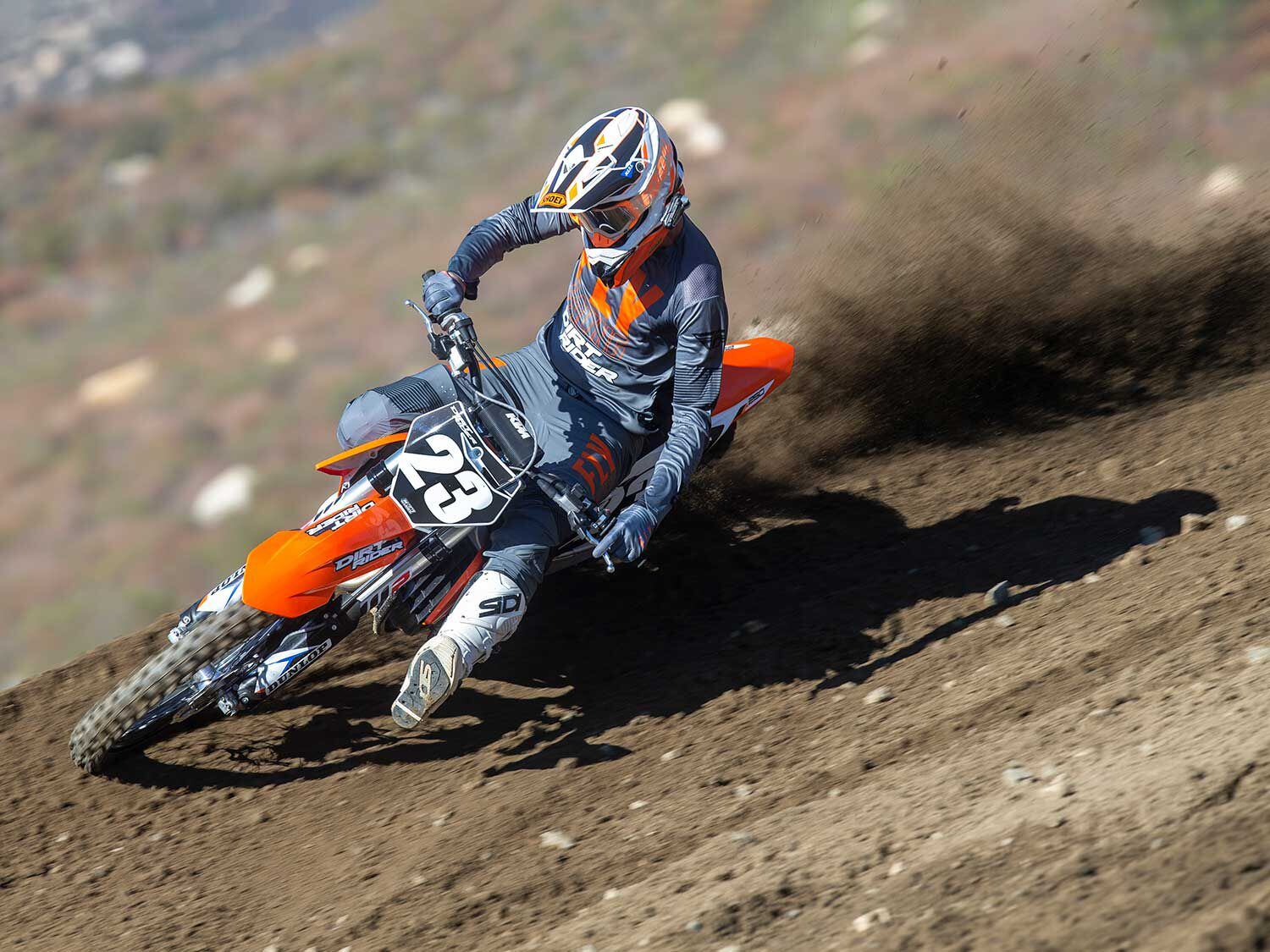
“Although it doesn’t have a ton of initial hit, the 250 SX-F has a very smooth yet aggressive pull when transitioning from the bottom-end to the midrange, and then continues to pull all the way up to the top-end. Also, the Brembo hydraulic clutch is great! It has an awesome feel and doesn’t fade.” <em>—Tanner Basso</em> (Jeff Allen/) Why the 2021 KTM 250 SX-F Should Have Won
It has a strong, fast engine that makes the most peak horsepower, an improved suspension setup with good base settings, a neutral-handling chassis, agreeable ergonomics, the best brakes, an awesome Brembo hydraulic clutch that provides a positive and consistent feel at the lever, and is the lightest bike in the class.
Why the 2021 KTM 250 SX-F Didn’t Win
The 250 SX-F has less low-end power, torque feel, and suspension comfort than the YZ250F.
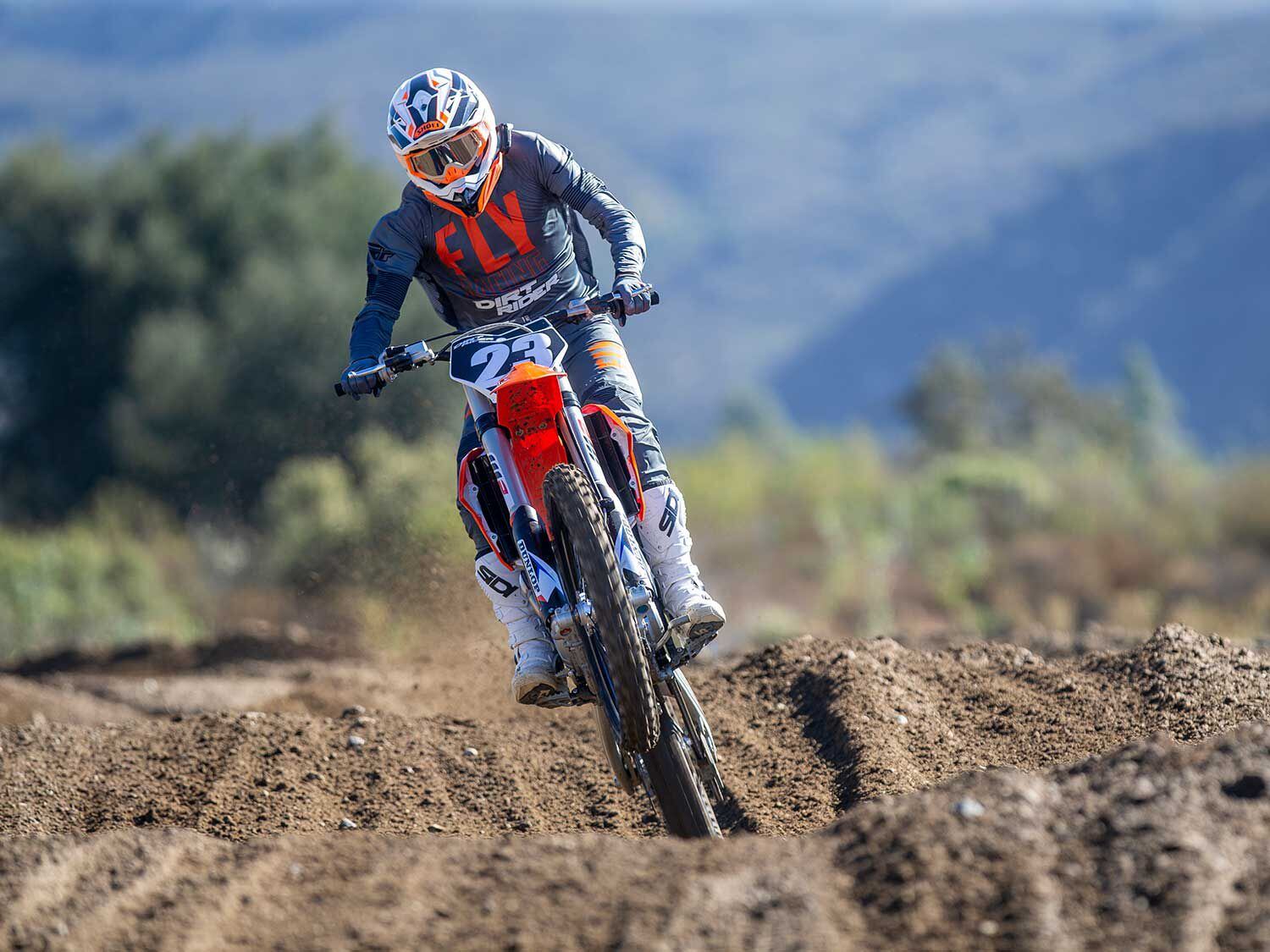
“The 250 SX-F is narrow, has a little bit of a chopper feeling, and feels like a longer wheelbase bike. The front and rear wheel seem to track in line versus a hinged feeling that I recall from the previous year model.” <em>—Allan Brown</em> (Jeff Allen/) Gearbox
Helmet: Shoei VFX-EVO
Goggle: 100% Racecraft
Jersey: Fly Racing Lite
Gloves: Fly Racing Lite
Pant: Fly Racing Lite
Boots: Sidi Crossfire 3 SRS
-
Rounding out the podium in the 250F Motocross Shootout for the second year in a row is the Husqvarna FC 250. With a smooth yet powerful engine, suspension settings that do a fantastic job of gobbling up small chop, and a chassis that is lower to the ground and corners better than in years past, the FC 250 is a very user-friendly motorcycle. It could be considered a slightly milder-mannered version of the KTM 250 SX-F in some regards, and a number of those differences in attributes suit riders of certain weights and skill levels better than others. With that, which Austrian-made 250 four-stroke motocross bike is best for you depends mostly on your weight, riding ability, and what you value in a 250F motocross bike as far as suspension setup and handling.
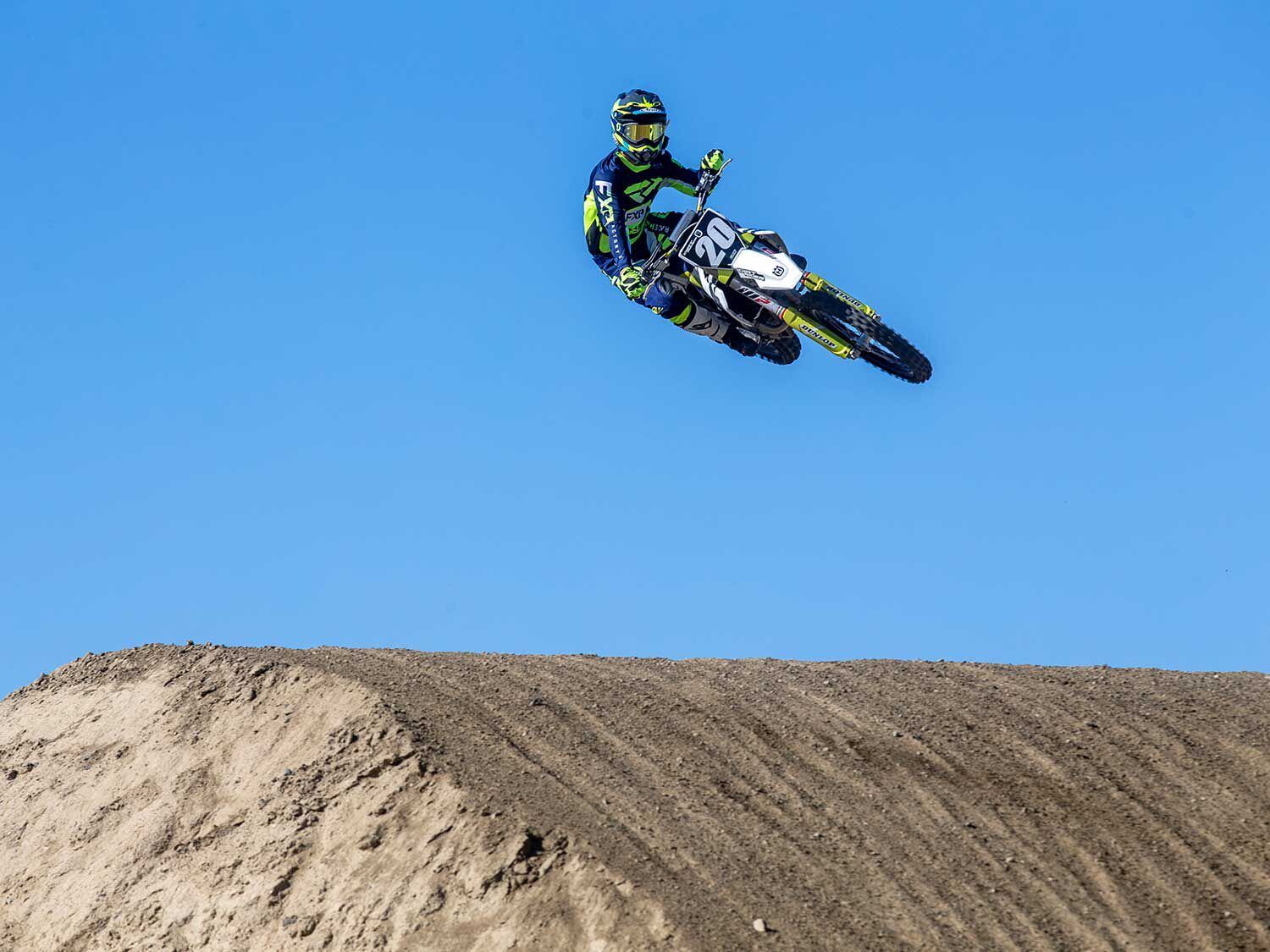
“Overall, the Husqvarna FC 250 is a very easy motorcycle to hop on and ride, but seems to keep getting better with more speed. It is a winner in my book as it blends the balance of potency and rideability that I am looking for.” <em>—Michael Gilbert</em> (Jeff Allen/) 2021 Husqvarna FC 250 Engine
Before loading all of the bikes in the van and heading to the track, hard empirical numbers needed to be established, which included runs on the Dirt Rider dyno. The FC 250 cranked out 40.3 hp at 13,300 rpm and 19.3 pound-feet of torque at 9,100 rpm with a Dunlop D404 street tire mounted on the rear wheel, which put it in the runner-up spot in the peak horsepower rankings of the class along with the most peak torque.
Related: 2021 Husqvarna FC 350 Review First Ride
Being that it shares the same engine as the KTM 250 SX-F, the FC 250 unsurprisingly shares a nearly identical horsepower and torque curve to it. The only notable differentiation along the curve between the two Austrian bikes are that the FC 250 makes just a minuscule amount more than the 250 SX-F from 8,800 to 9,800 rpm and a touch less than the orange bike from 11,000 to 11,500 rpm and 11,900 to 12,400 rpm before the 250 SX-F begins to ascend higher on the curve at 12,700 rpm until it makes its peak horsepower of 41.1 at 400 rpm higher than the FC 250. When all is said and done, the Husqvarna makes 0.8 hp less than the KTM at peak.
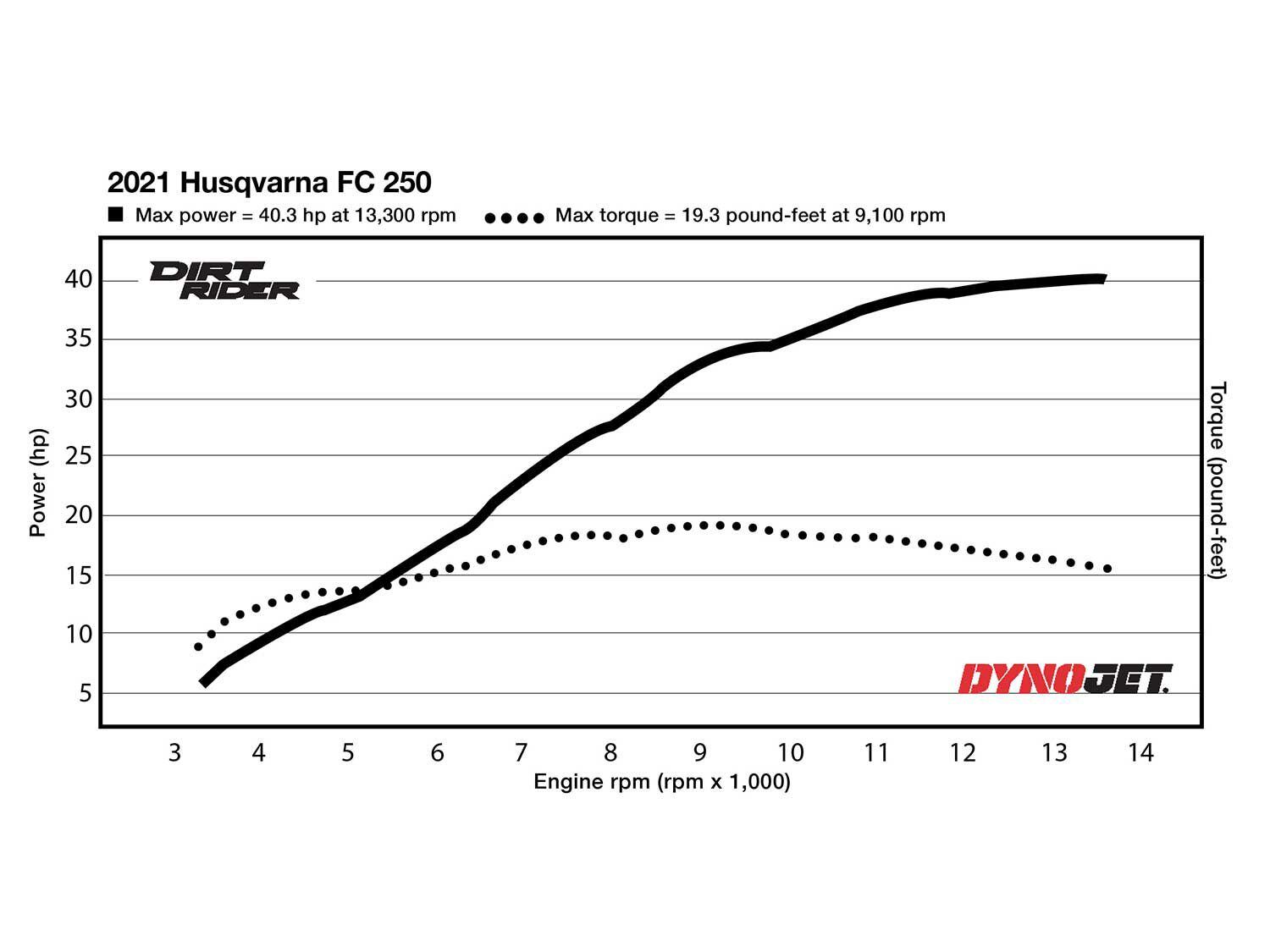
The FC 250 is competitive on the dyno; 40.3 hp at 13,300 rpm puts it in the runner-up spot in peak horsepower and 19.3 pound-feet of torque at 9,100 rpm is the highest peak figure in the class. (Michael Gilbert/) Compared to the three Japanese bikes, the FC 250 makes more horsepower than the Honda CRF250R, Kawasaki KX250, and Yamaha YZ250F from 5,200 to 8,200 rpm. The Austrian machine is matched by only one of those three bikes, the CRF250R, from 8,200 to 8,400 rpm, and then passed by the red machine from 9,600 to 10,800 rpm. The FC 250 follows the same horsepower curve as the CRF250R from 10,800 to 11,600 rpm, then passes it until both machines reach peak.
Related: Best Motocross Bike 4th Place—2021 Husqvarna FC 450
As far as torque, the FC 250 again follows a similar curve to the 250 SX-F with the only notable differentiations between the two being the amount of peak torque they make; both record their highest figure at 9,100 rpm with the FC 250 producing a class-leading 19.3 pound-feet and the 250 SX-F churning out just 0.2 pound-feet less. Also, from 13,000 rpm to peak, the FC 250 is down just slightly compared to its orange counterpart.
Making more torque than the CRF250R from 5,200 to 8,000 rpm, the FC 250 meets the red bike briefly from that point until 8,400 rpm. It then supersedes the CRF250R until 9,500 rpm, gets passed by it from 9,500 to 10,600 rpm, follows a similar curve to Big Red until 11,600 rpm, then remains higher on the curve than it from that point until peak. The FC 250 makes more torque than the KX250 and YZ250F from 5,200 rpm all the way to their respective rev limiters.
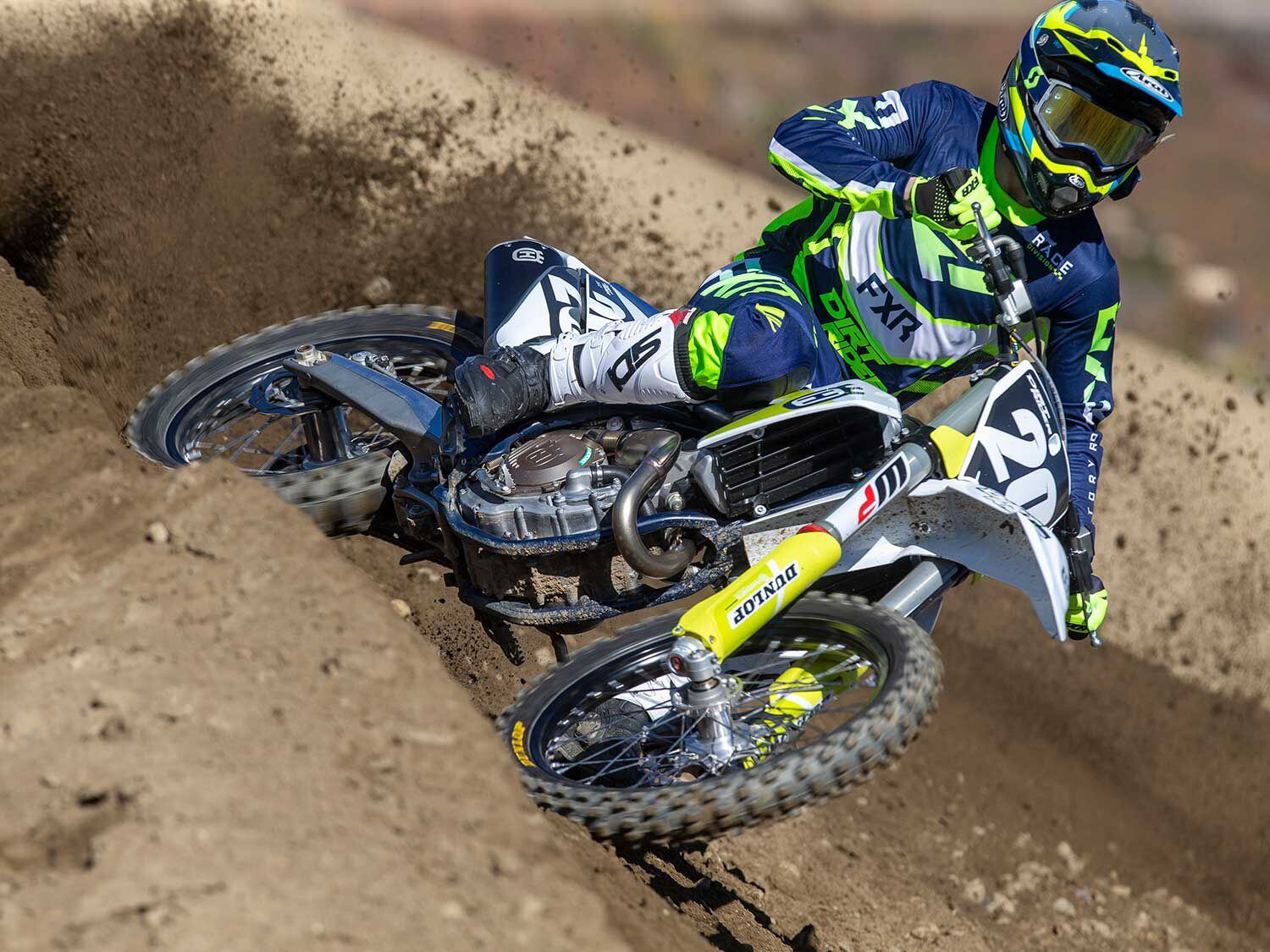
“Although the Husqvarna is very mellow from the low-end to midrange, the power is nice on the top-end. I wasn’t very impressed with its Magura hydraulic clutch as I felt like it needed more input to help with shifting.” <em>—Michael Wicker</em> (Jeff Allen/) With its broad power delivery, the FC 250 builds power in a very linear manner throughout the rpm range and really comes alive in the midrange to top-end. It pulls all the way to the rev limiter and can run a gear effectively the second-longest behind the 250 SX-F, which pulls an extra 400 rpm before signing off. Although the FC 250′s torque feel isn’t as plentiful as the YZ250F’s, it is stronger than the KX250′s and CRF250R’s and comparable to the 250 SX-F’s. Selecting map 2 on the handlebar-mounted engine map select button increases the bike’s torque feel slightly and is Dirt Rider testers’ go-to map regardless of the track conditions. The FC 250′s bottom-end power falls in the middle of the five bikes as it makes more than the CRF250R and KX250, but not quite as much as the 250 SX-F and noticeably less than the class-leading YZ250F.
Part of the reason the FC 250′s low-end grunt isn’t quite as plentiful as the 250 SX-F’s is due to airflow. While the 250 SX-F comes with an optional ventilated airbox cover that has 10 relatively large perforations, the FC 250′s six slit-shaped vents are not only less in quantity, but smaller in size, which limits airflow and makes for slightly less throttle response. The FC 250 can be made to run more similar to the 250 SX-F by drilling holes in the airbox cover that emulate the size and pattern of those on the KTM’s.
Equipped with a Magura hydraulic clutch, the FC 250 has the second easiest clutch pull in the class behind the KX250. Some test riders commented that the clutch felt like it needed more input to help with shifting under load, and that keeping the clutch lever adjusted as far out as they were comfortable with was key to having good clutch input and easy shifting. As it has been for the past several years, the FC 250 is easy on the ears as the quietest bike in the class.
2021 Husqvarna FC 250 Suspension
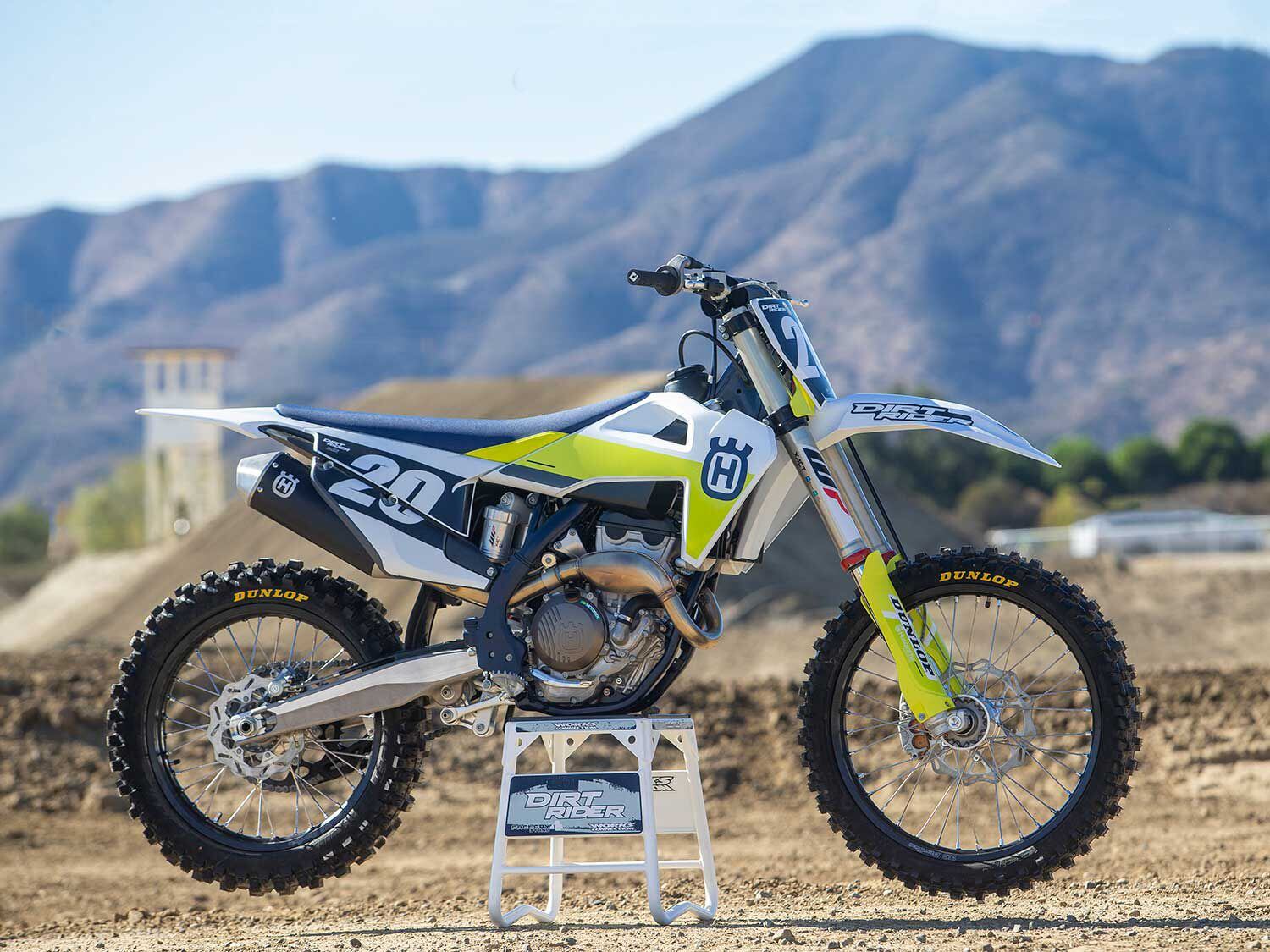
With 10mm (0.4 inch) lower suspension via shorter fork cartridges and outer tubes along with a revised shock linkage, the Husqvarna FC 250 is differentiated from its orange Austrian counterpart more than ever in 2021. (Jeff Allen/) Like the rest of Husqvarna’s 2021 full-size motocross bike lineup, the FC 250 features 10mm (0.4 inch) lower suspension than prior year models via shorter fork cartridges and outer tubes along with a revised shock linkage, which is now one of the major differentiations between it and the 250 SX-F.
The FC 250′s suspension setup is a noticeable improvement over the prior year model and the most comfortable Husqvarna we’ve swung a leg over in terms of suspension feel. For riders who are novice level in ability and less than 150 pounds, the WP Xact air fork and WP Xact shock have a near-perfect setting for a rough track like Glen Helen. Because of the suspension’s somewhat soft setting in stock trim, the fork and shock tend to move too quickly through the stroke and can come close to bottoming in the case of a big impact such as an overjump, but this can mostly be alleviated by stiffening the compression at both ends.
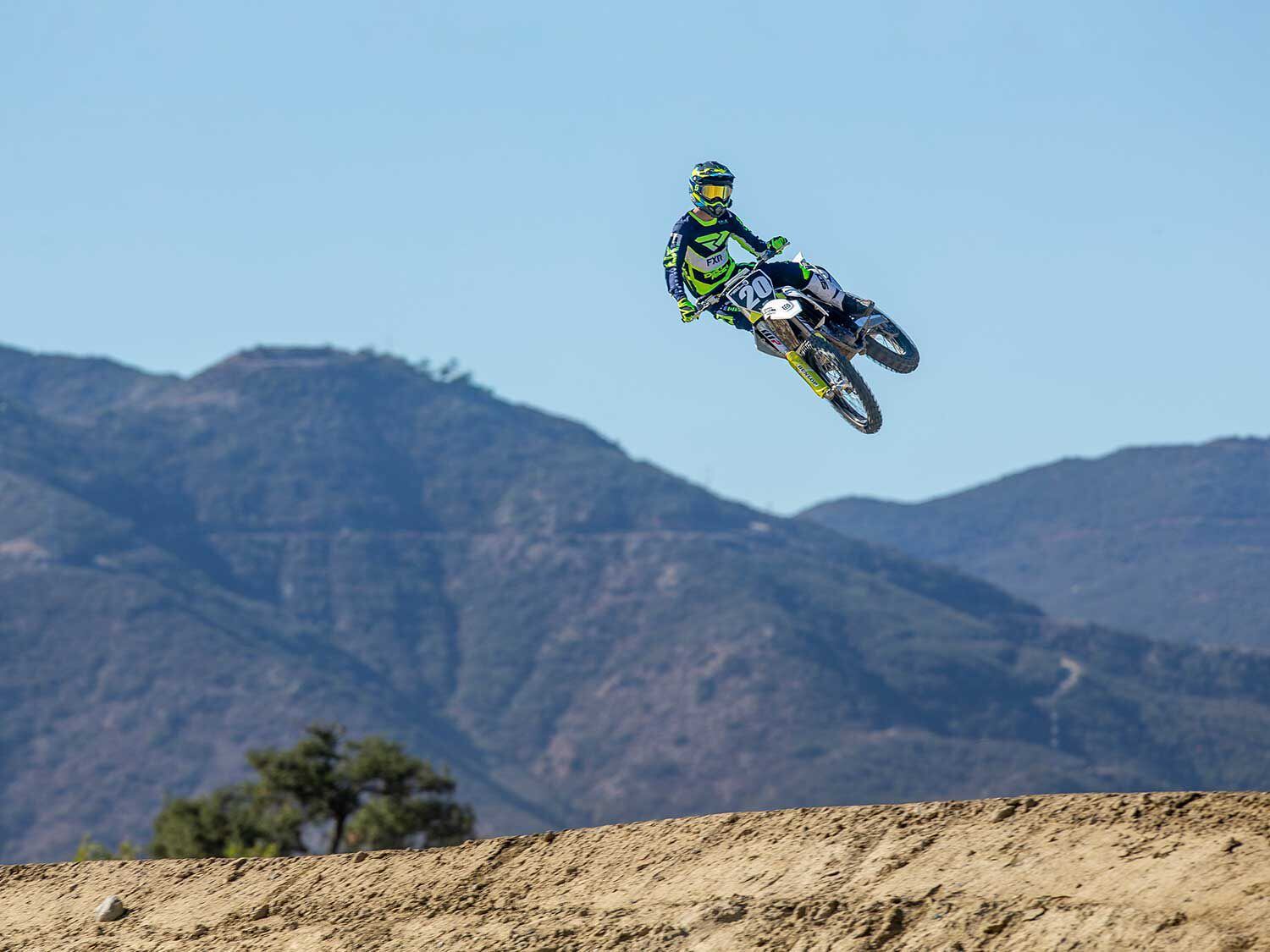
“I have always really appreciated the WP air fork on both of the Austrian motorcycles, mainly for the ease of adjustability. They do a fantastic job of blending a balance of small bump compliance and big-hit support, and have always been very easy for me to dial in.” <em>—Michael Gilbert</em> (Jeff Allen/) For riders more than 150 pounds, regardless of ability, the FC 250′s suspension is a little soft and springy with the stock settings, and some pitching is noticeable in braking bumps. This causes the components to ride a little low in the stroke, which can provide a bit of a harsh feel in rough areas of the track, especially acceleration bumps. Increasing the fork’s standard air pressure setting from 10.5 bar to 10.7 bar and going in a few clicks on the compression improves the fork’s initial bump absorption. Also, raising the sag from the recommended 105mm to 103mm helps get the shock to ride in the softer part of the stroke, which makes for more comfort on bump absorption.
2021 Husqvarna FC 250 Chassis/Handling
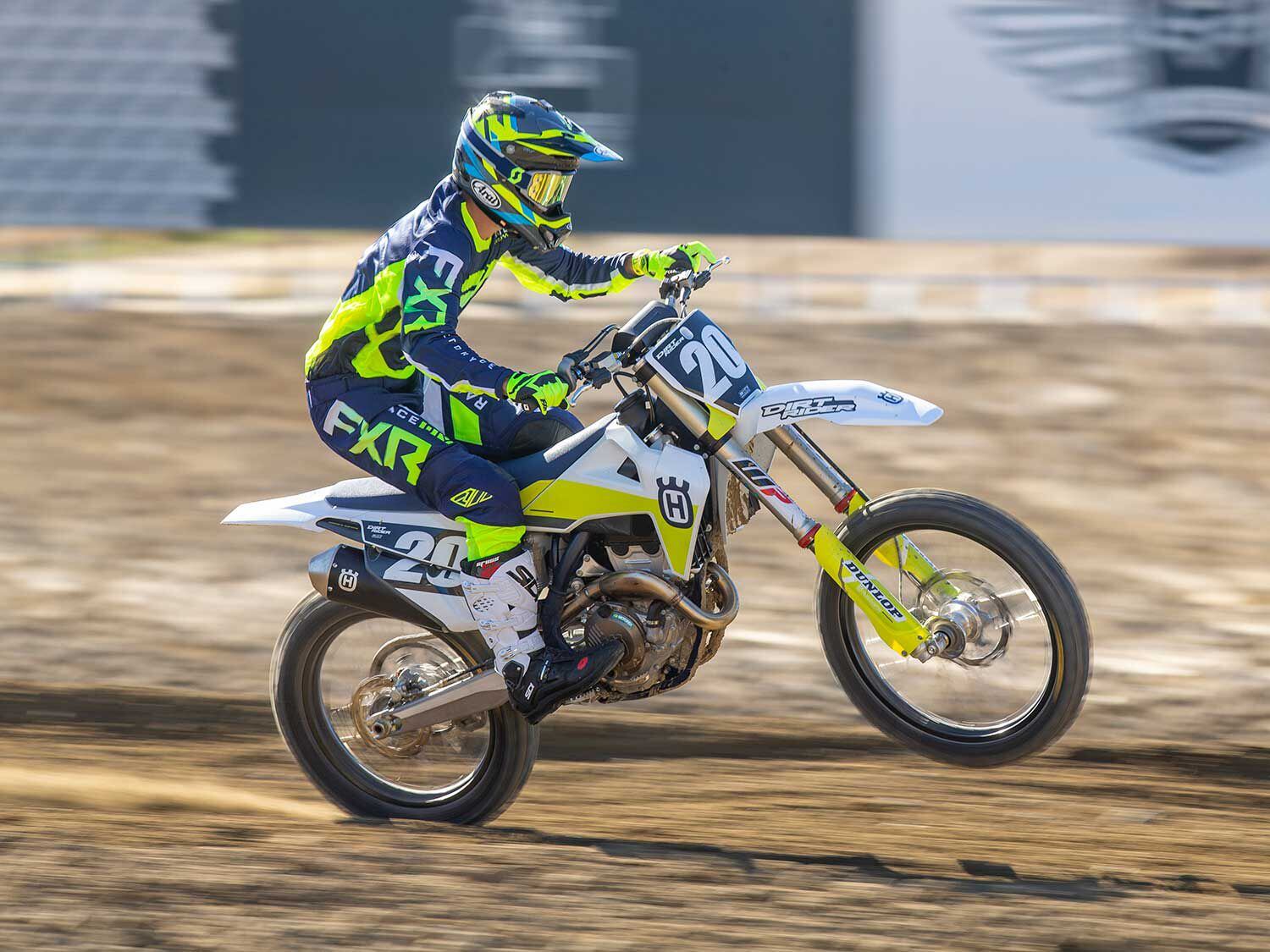
“The FC 250 has a distinct lower ride height. The chassis is stable and almost no longer has a hinged feeling under load.” <em>—Allan Brown</em> (Jeff Allen/) The FC 250 is a very neutral-handling bike that corners better than ever thanks to its distinctly lower ride height compared to the other bikes in this test. It has a slight chopper feel to it, which is mostly alleviated by decreasing the sag (raising the rear of the bike) and stiffening the shock’s high-speed compression. These adjustments also improve the Austrian machine’s already-impressive turning capability. Being the only motorcycle in the class to feature a composite carbon fiber subframe, the rear portion of the FC 250 provides the most suppleness and comfort in terms of chassis feel.
Like its handling characteristics, the FC 250′s ergonomics are mainly neutral. The rider position is right where it should be thanks to the bike’s well-proportioned rider triangle and having more of a sit-on feel. There are no unwanted protrusions in the bodywork that inhibit rider movement either. Also, its handlebar is noticeably wider than those on the Japanese models and offers more flex and comfort than the Neken bar found on the KTM. Sharing Brembo brakes, which are the strongest in the class, and ODI lock-on grips with the 250 SX-F are just a few additional features that make the FC 250 such an excellent bike right off the showroom floor.
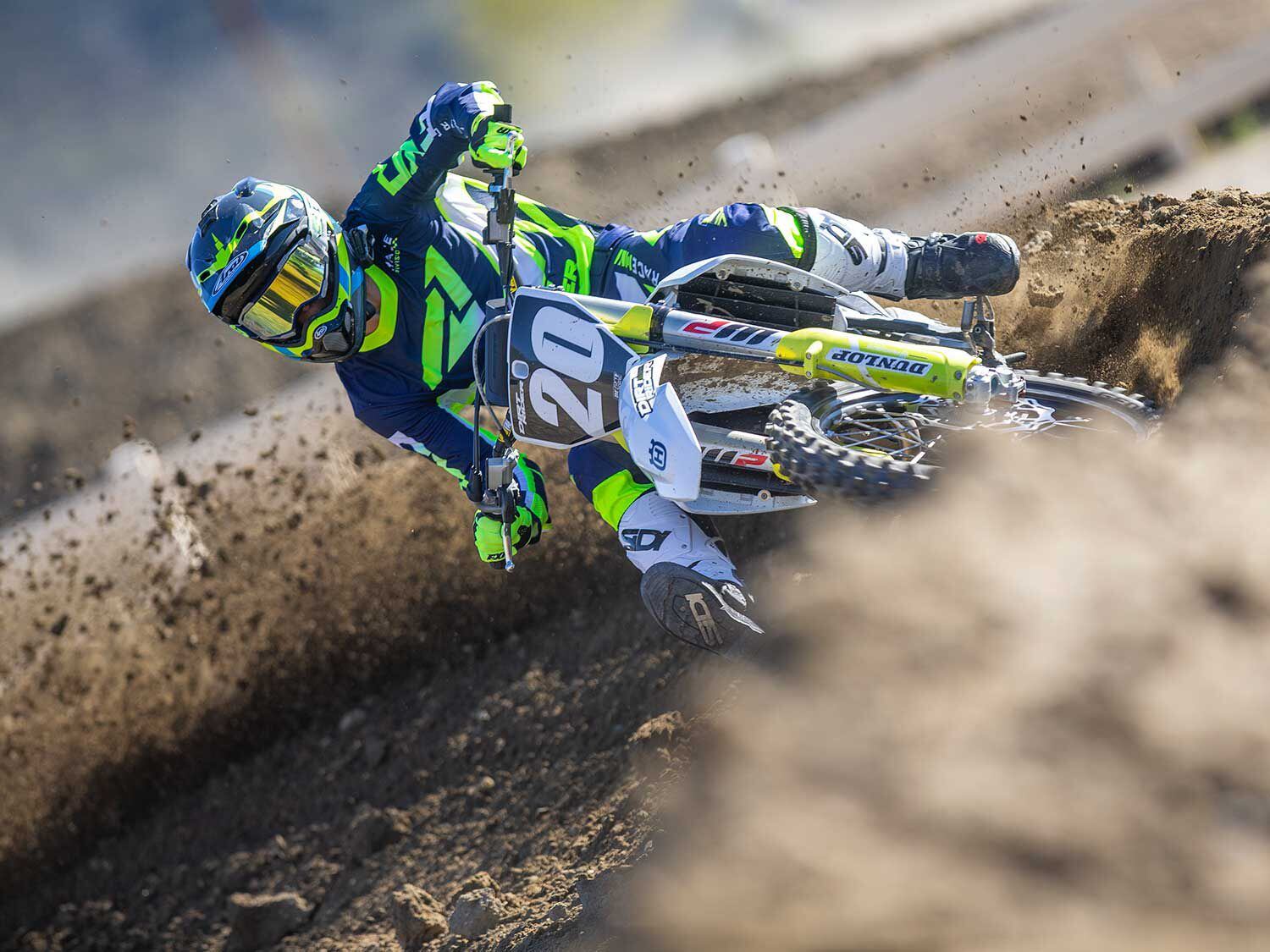
“In a sport as gnarly and demanding as motocross, it’s nice to have a bike like the Husqvarna FC 250 underneath you. It offers a smooth, super-predictable power delivery that pulls seemingly forever, a plush suspension setup, and a well-rounded chassis that has plenty of compliance thanks to the composite carbon fiber subframe and ProTaper handlebar. The Husqvarna is the most expensive of the five bikes gathered here, but its multitude of high-quality components and fit and finish reflect the premium price tag.” <em>—Andrew Oldar</em> (Jeff Allen/) Why the 2021 Husqvarna FC 250 Should Have Won
The FC 250 produces some of the highest numbers on the dyno throughout the rpm range including the most peak torque. On the track, it has a great combination of high-rpm power combined with an impressive torque feel, the most comfortable suspension setup in stock trim for lighter, novice-level riders, a compliant chassis that handles very neutrally, the best brakes, and several other high-quality components in stock trim.
Why the 2021 Husqvarna FC 250 Didn’t Win
It doesn’t have as strong of a bottom-end power delivery as the YZ250F or 250 SX-F, lacks some suspension holdup on large impacts, and the shock rides a little low in the stroke when the bike is piloted by heavier riders. With that being said, although it’s improved in this area over last year, the FC 250′s suspension setup still isn’t quite as suitable for a wide range of rider weights and abilities as some of the other bikes in the class.
Gearbox
Helmet: Arai VX-Pro4
Goggle: Scott Fury
Jersey: FXR Racing Podium MX
Gloves: FXR Racing Clutch Strap MX
Pant: FXR Racing Podium MX
Boots: Sidi Crossfire 3 SRS
-
It seems as though an all-new Kawasaki KX250 has been in the works for a while, but it’s finally here in 2021. Perhaps that wait was prolonged by how much we’ve enjoyed riding and testing the KX450 since it received a complete revamp in 2019. We figured the KX250 would enjoy those same updates—namely the chassis—and sure enough it did, though a year later than we originally anticipated.
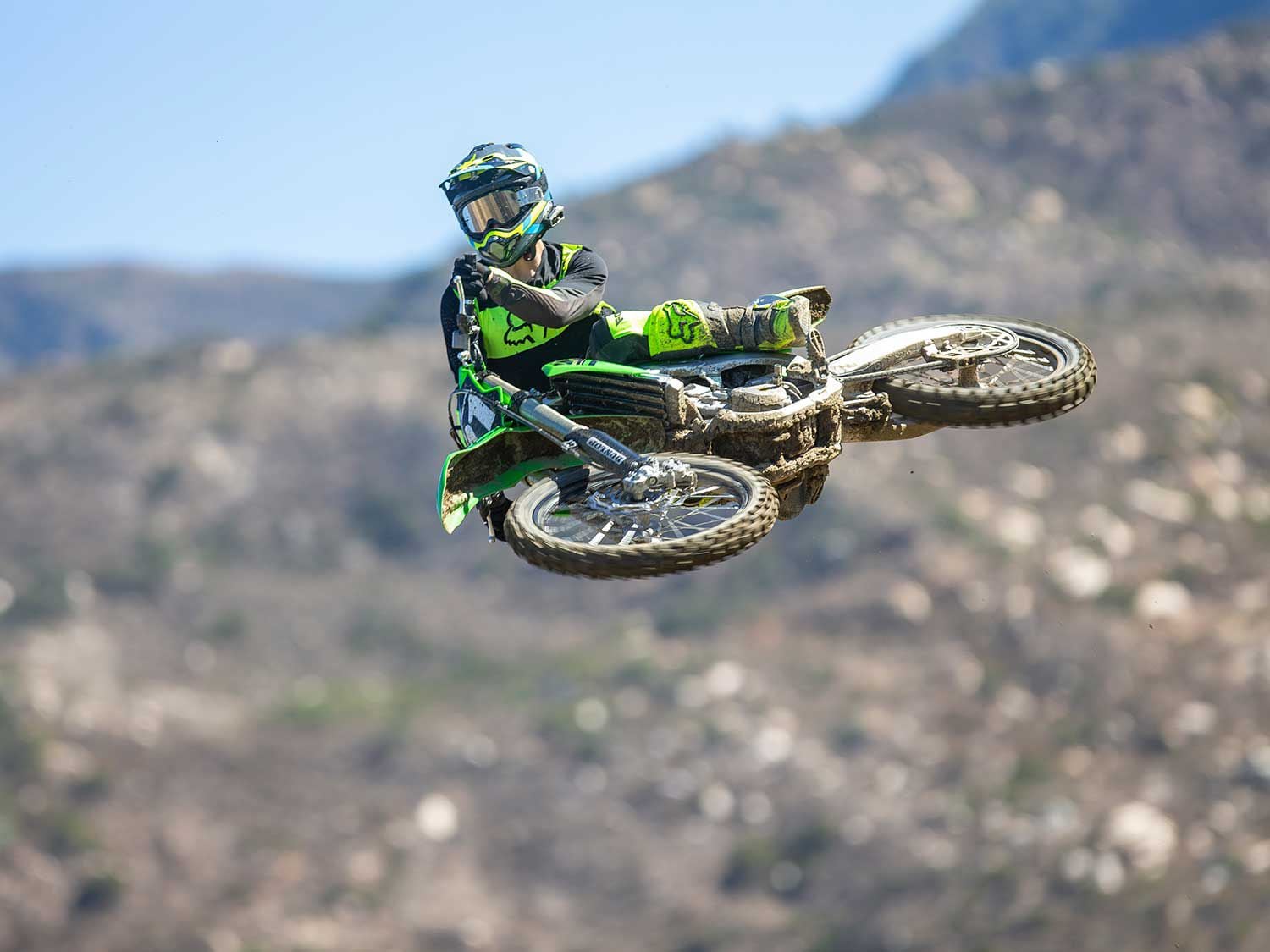
“Overall, the Kawasaki KX250 offers a great package with its linear power delivery, simple suspension setup, and being one of the most agile and nimble bikes in the class. Although, its EFI mapping changes should be able to be done on the fly, which is not the case with the couplers.” <em>—Michael Wicker</em> (Jeff Allen/) The all-new KX250 retains several of the same qualities we praise the KX450 for in the handling department, but some of the engine’s characteristics along with the power delivery still leave a bit to be desired. Also, the suspension is still on the firm side for the average 250F rider, and even those who are on the heavier or faster side of the spectrum for that matter. Fourth place doesn’t warrant how great of a bike the 2021 KX250 is because it’s the most improved 250 four-stroke motocross bike for this year and is nipping at the heels of the top three finishers in this comparison test.
Related: 2021 Kawasaki KX250X Review First Ride
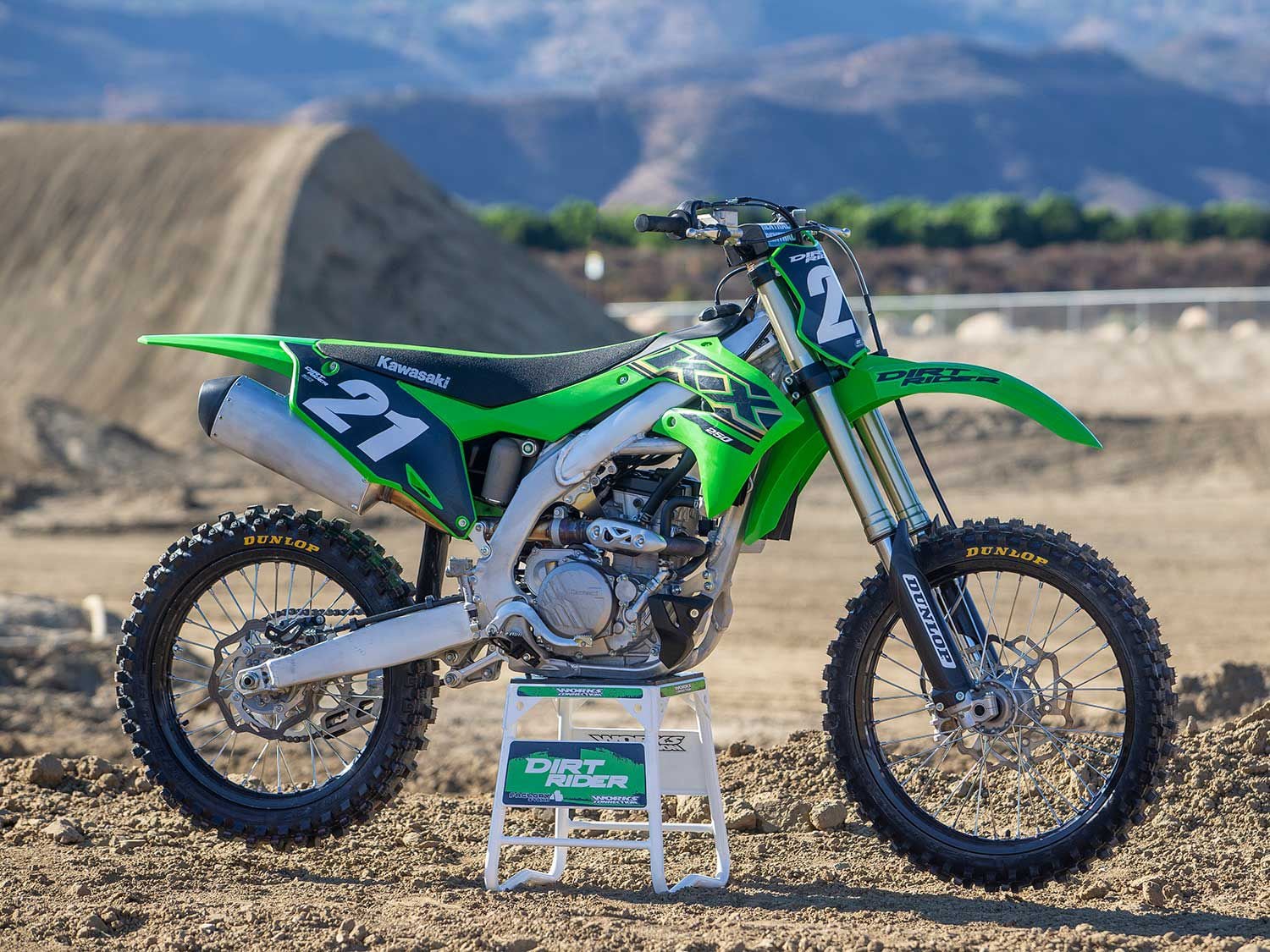
The Kawasaki KX250 is the most significantly updated 250 four-stroke motocross bike of 2021. It is improved in many ways over its predecessor, but misses the mark in a few key areas in stock trim. (Jeff Allen/) 2021 Kawasaki KX250 Engine
Runs on the Dirt Rider dyno were in order for the KX250 and the four other bikes before the comparison test got underway. After mounting a Dunlop D404 street tire on the rear wheel, we conducted a number of pulls on the green machine and documented 39.6 hp at 13,200 rpm and 18.4 pound-feet of torque at 9,400 rpm. With those figures, the Kawasaki ranks third in peak horsepower and fourth in peak torque.
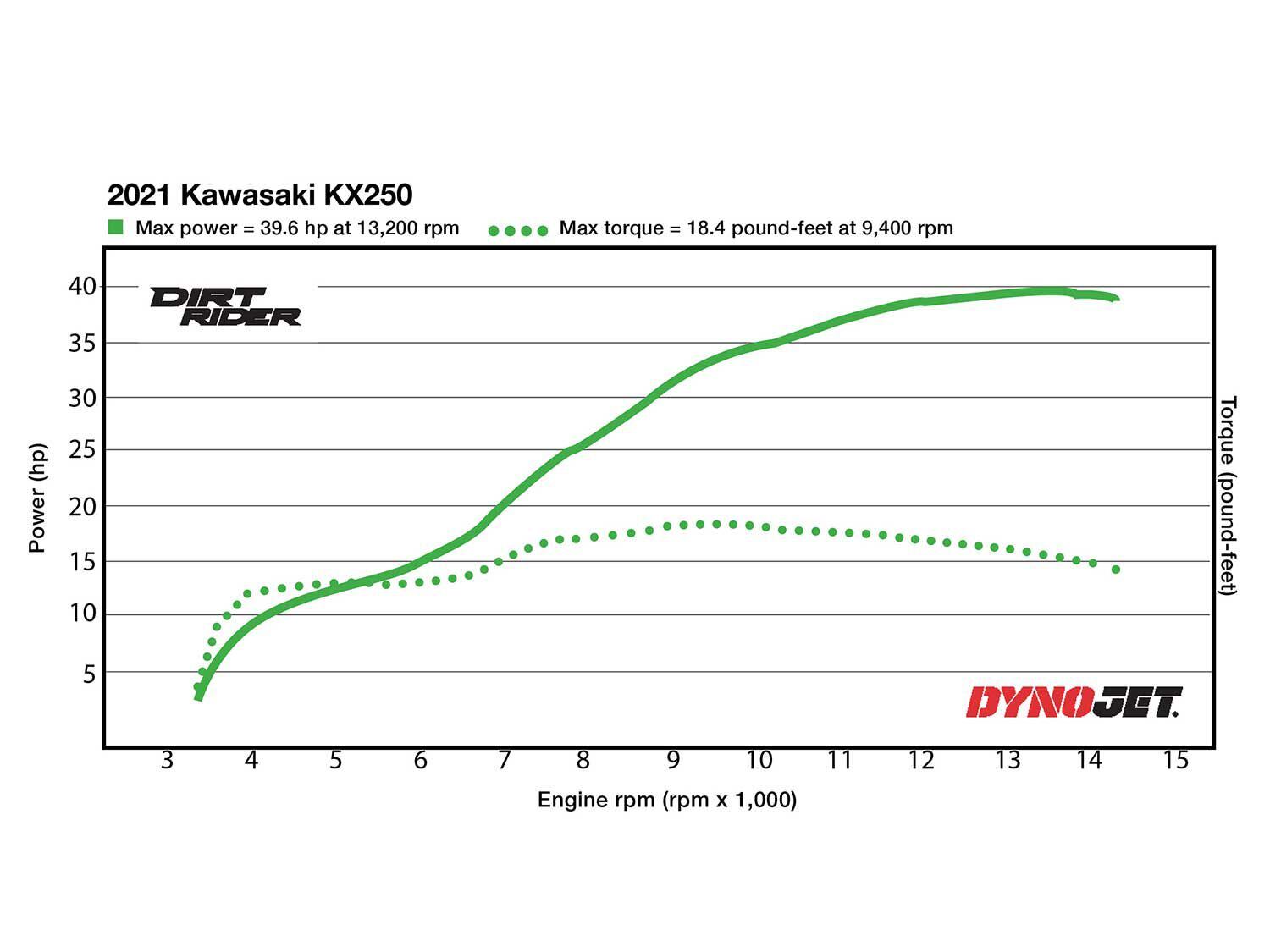
Producing 39.6 hp at 13,200 rpm and 18.4 pound-feet of torque at 9,400 rpm on the <em>Dirt Rider</em> dyno, the KX250 ranks third in peak horsepower and fourth in peak torque. (Michael Gilbert/) The KX250 produces slightly more horsepower than the Yamaha YZ250F from 4,000 to 5,500 rpm, but makes less than all of the other bikes from 5,500 to 8,800 rpm. It passes the YZ250F back at 8,800 rpm, matches it from 10,200 to 10,700 rpm, then surpasses it from that point until 12,400 rpm. The green machine rises above the CRF250R at 12,200 rpm until hitting its 14,500 rpm rev limiter. The KX250 is unable to match the KTM 250 SX-F and Husqvarna FC 250 at any point along the horsepower curve from 5,000 rpm all the way to peak.
Related: Best Motocross Bike Winner—2021 Kawasaki KX450
As far as torque, the Kawasaki makes the least of all the bikes from 5,500 to 8,800 rpm, then passes the YZ250F at that mark and matches it at various points along the torque curve including from 10,000 to 10,600 rpm and 12,000 to 12,600 rpm. The KX250 makes less torque than the 250 SX-F and FC 250 from 5,000 rpm until they each hit their respective rev limiters and produces just a touch more than the CRF250R from 12,700 to 14,000 rpm.
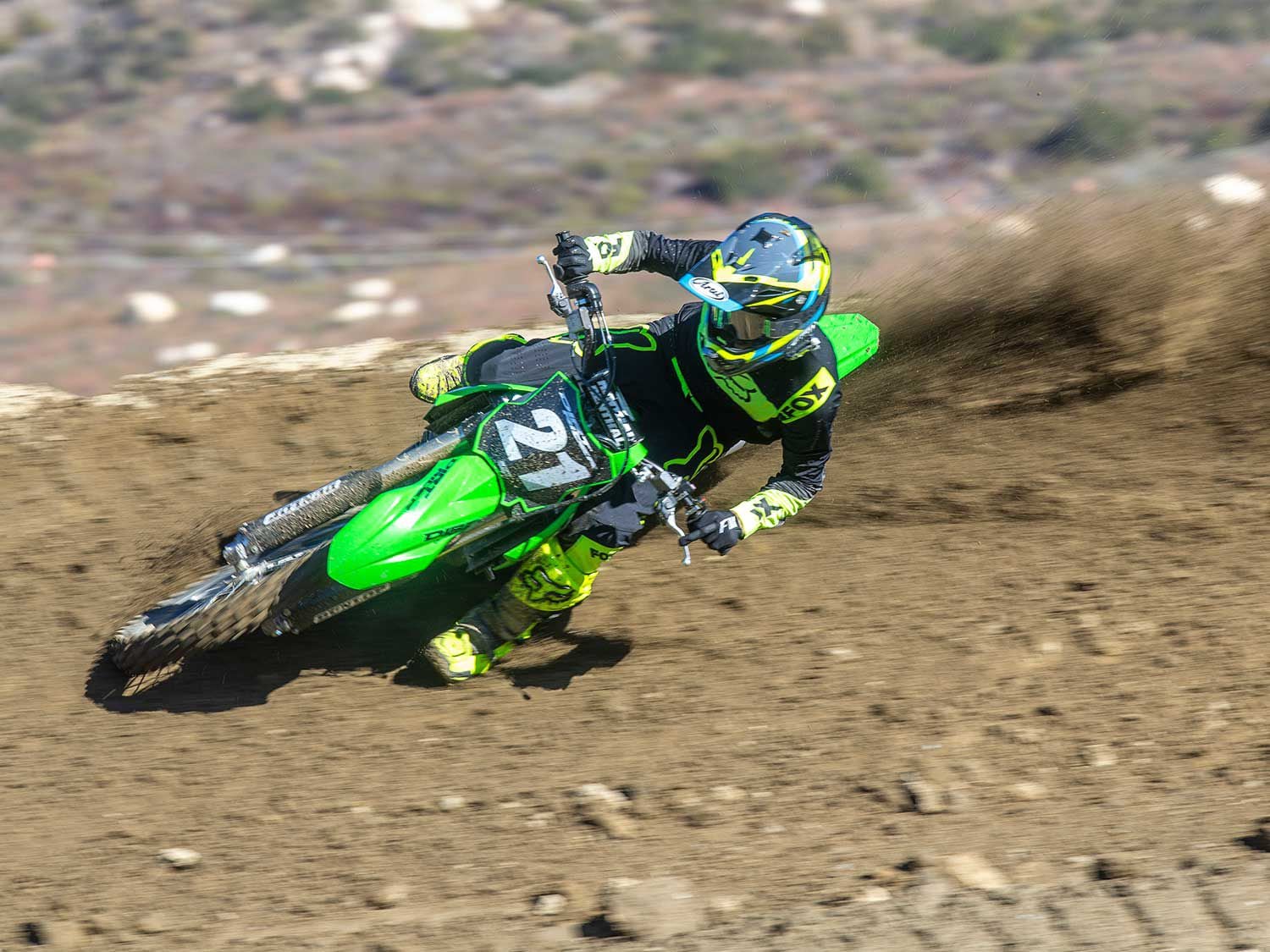
“The Kawasaki offers a good, broad power with decent torque and over-rev. However, it seems to struggle a little with recovery when missing a downshift—mostly when you should have been in second gear and got caught in third.” <em>—Allan Brown</em> (Jeff Allen/) Possessing a fairly broad power delivery, the KX250 can carry a gear well into the rpm range and works best when ridden that way. It has more bottom-end power than the CRF250R, but noticeably less than the YZ250F and not quite as much as the 250 SX-F or FC 250 either. Although the Kawasaki has a quick, free-revving nature, it lacks some torque feel throughout the rpm range compared to the top three finishers in this shootout as well. Therefore, if you miss a downshift, it takes a moment for the bike to recover and get back into the meat of the power.
For all of those reasons, the KX250 still has a mostly intermediate- to pro-level engine package in that it requires an aggressive throttle hand and a finger on the clutch in case the rider loses momentum or is in the wrong gear and needs to coax it back into the upper echelons of the rpm range. Thankfully, the KX’s new Nissin hydraulic clutch offers a smooth, nearly effortless pull that makes it almost enticing to use. The green machine rivals the YZ250F for being the loudest bike in the class and is the raspiest sounding as well.
2021 Kawasaki KX250 Suspension
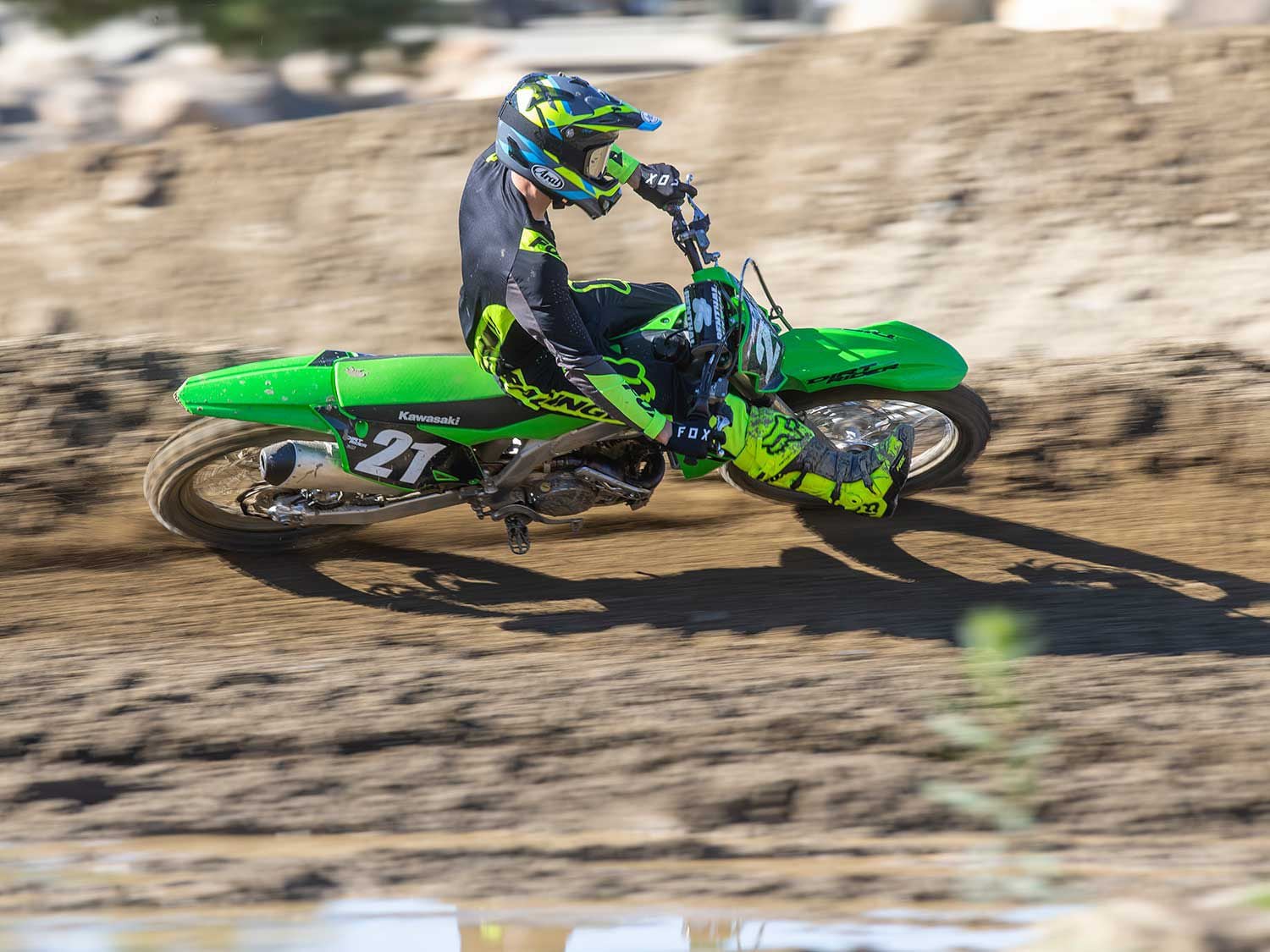
“The suspension on the KX250 took the longest for me to find the right setting, and even then, it still felt very stiff over small- to medium-sized chatter bumps and deceleration bumps.” <em>—Michael Gilbert</em> (Jeff Allen/) Kawasaki spec’d the KX250 with a KYB 48mm coil-spring fork and KYB shock last year, which we felt were too stiff. Those same components return on the 2021 model, but with a one-rate-softer fork spring setting of 4.9 Nm and the same shock spring rate of 54 Nm. Although the softer fork springs help provide more comfort compared to last year’s model, the KX250′s suspension setup is still the stiffest of the bikes gathered here. Its excessive firmness is mostly noticeable on braking bumps—namely those of the small- to medium-size variety—and becomes increasingly apparent as the track gets rougher.
On smoother, jumpier tracks, the KX250′s suspension setup is acceptable, but on a rough and demanding track like Glen Helen, it provides the least rider comfort and the most feedback on acceleration chop and braking bumps, especially those that are square-edged. The KX250′s firm suspension setting matches its engine package in that it works best in the hands of an intermediate- to pro-level rider, but even those more skilled pilots may find themselves going out on the compression and rebound clickers at both ends in search of more comfort and movement from the KYB components, especially if they weigh under 160 pounds.
To further indicate how firm the KX250′s stock suspension setup is, even our heaviest test rider of 175 pounds and Vet Expert in skill level went out five clicks on the fork compression, three clicks out on the fork rebound, five out on the shock’s low-speed compression, a half-turn out on the shock’s high-speed compression, and three clicks out on the shock rebound before he found the comfort he was looking for.
2021 Kawasaki KX250 Chassis/Handling
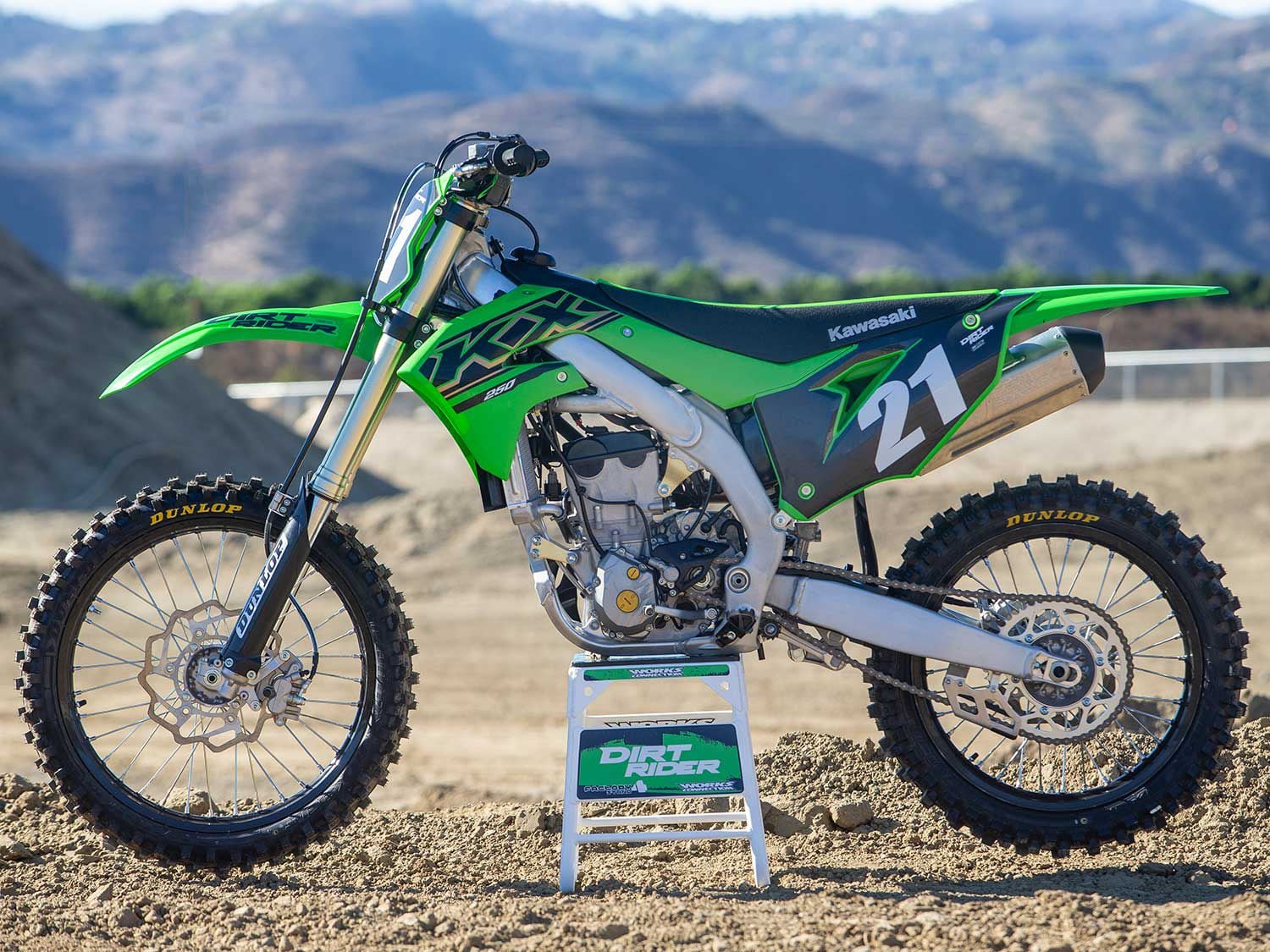
Kawasaki added electric start to the KX250 for 2021. While that feature is certainly a welcomed addition, it is a major contributing factor to the bike gaining 5 pounds over the prior year model as it now weighs 238 pounds, making it the heaviest motorcycle in this comparison test. (Jeff Allen/) Equipped with a frame that is based off the KX450′s and sharing the same swingarm as its larger-displacement counterpart, the KX250 is one of the best-handling machines in the class and features the best overall ergonomics. It offers the most neutral handling characteristics between cornering capability and straight-line stability, and is the narrowest from the radiator shrouds all the way back to the number plates, which make it the easiest bike to move around on. It also possesses a nimble feel despite being the heaviest motorcycle in this comparison test at 238 pounds.
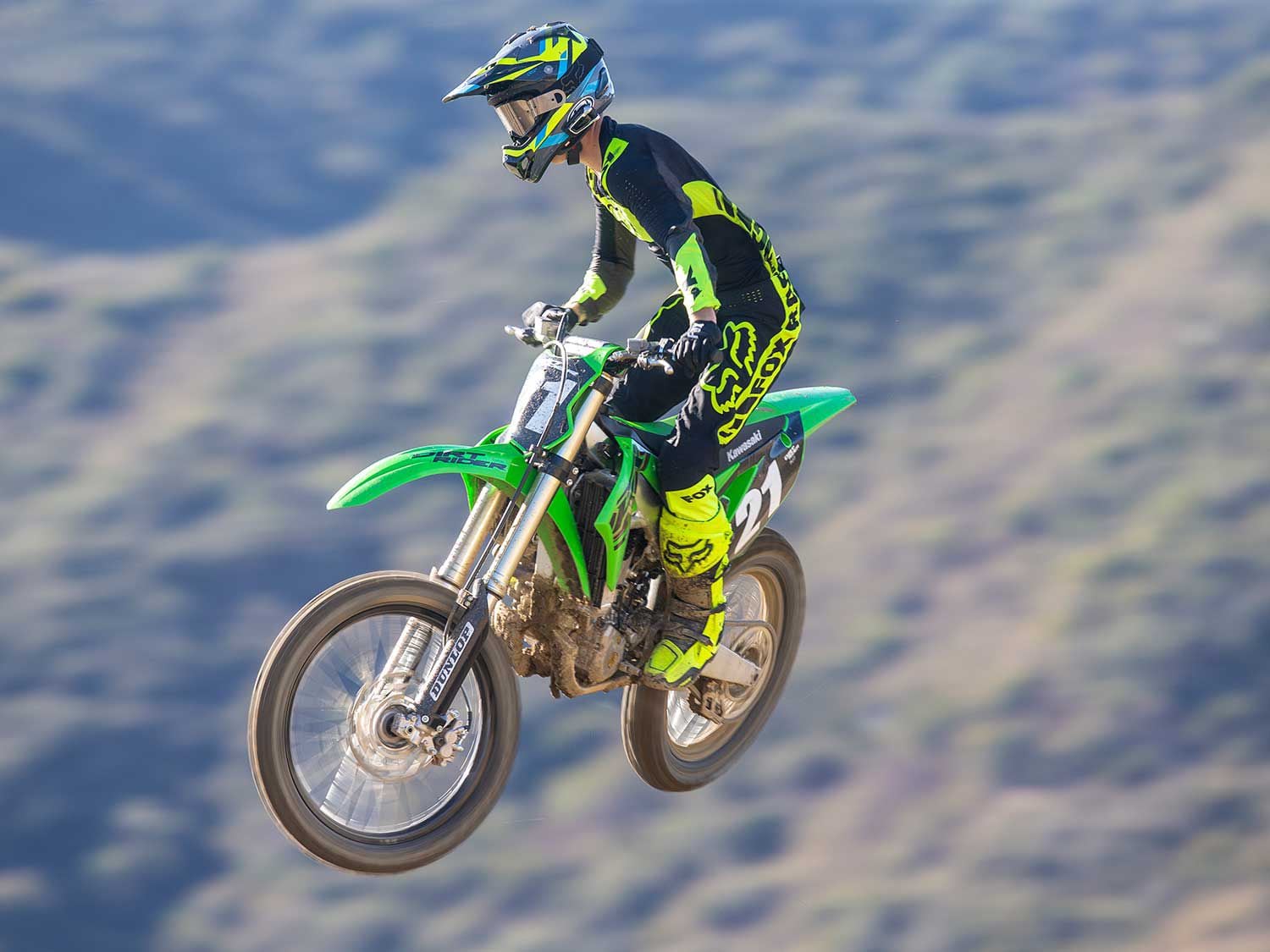
“Because I very much enjoy riding the Kawasaki KX450, I figured I would like the KX250 even more being that I am on the lighter side of the weight spectrum. However, that assumption proved to be incorrect. As it is on the 450, the smaller-displacement KX’s chassis is remarkable in the way it handles neutrally and offers the best ergonomics, but I feel its potential is hidden beneath a stiff, overly sprung suspension setup for the average 250F rider.” <em>—Andrew Oldar</em> (Jeff Allen/) The KX250 has somewhat of a stink bug stance, which is magnified by the recommended shock sag setting being a relatively high 102mm. To combat this, some test riders increased the sag and went a half-turn out on the high-speed compression. Contributing to the KX250′s class-leading ergonomics package is its neutral rider position, near-perfect rider triangle, flat seat, and sit-on feel.
Why the 2021 Kawasaki KX250 Should Have Won
It has the most neutral-handling chassis, the best ergonomics, competitive top-end power, and a silky smooth clutch pull.
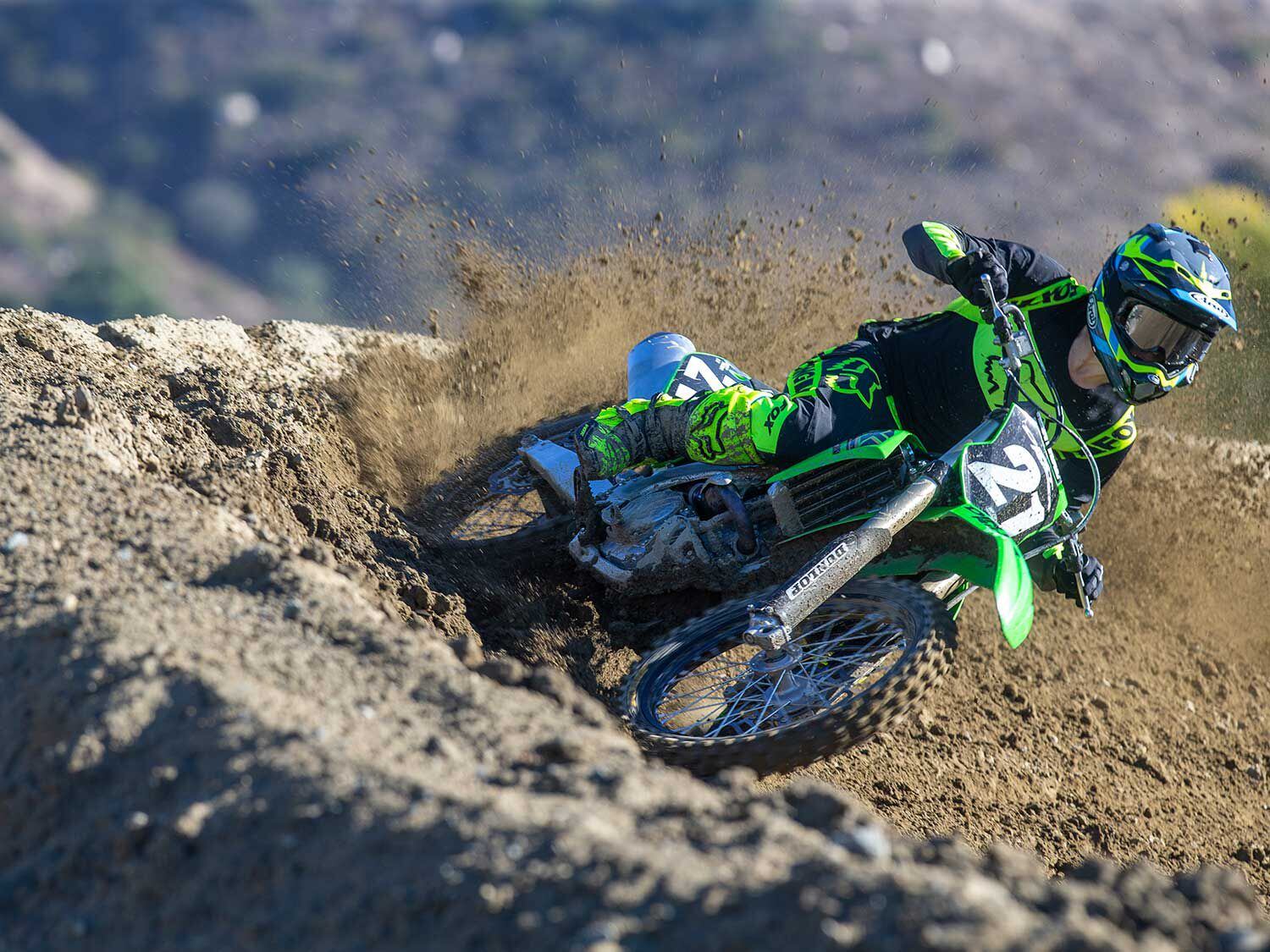
“Initially, I could not keep the KX250 under control. It felt very bouncy and stiff; the bike would skip across bumps and wouldn’t go through them. I went two clicks out on the rebound front and rear, and it was a lot more plush and planted. On the plus side, the bike is narrow, very nimble, and plants nicely in ruts.” <em>—Tanner Basso</em> (Jeff Allen/) Why the 2021 Kawasaki KX250 Didn’t Win
The engine lacks a little bit of low-end power and some torque feel, and the suspension is stiff and a bit harsh in stock trim, especially for those who are on the lighter side and novice level in ability. Also, we would like to see the KX250 feature a handlebar-mounted engine map select button instead of EFI couplers.
Gearbox
Helmet: Arai VX-Pro4
Goggle: Fox Racing Vue
Jersey: Fox Racing Flexair
Gloves: Fox Racing Flexair
Pant: Fox Racing Flexair
Boots: Fox Racing Instinct
-
After enjoying updates each year since its radical revamp back in 2018, the Honda CRF250R returns as the exact same model as the prior year for 2021. While Big Red’s 250cc four-stroke motocrosser has plenty of positive qualities that make it an enticing option, especially for those who are looking for a fun 250F to ride, it still has a number of areas that could be refined to make it a better overall racebike. And in a class as competitive as the 250F motocross segment, having even just a few aspects to improve upon can push a bike to the bottom of the rankings, as is the case with the CRF250R.
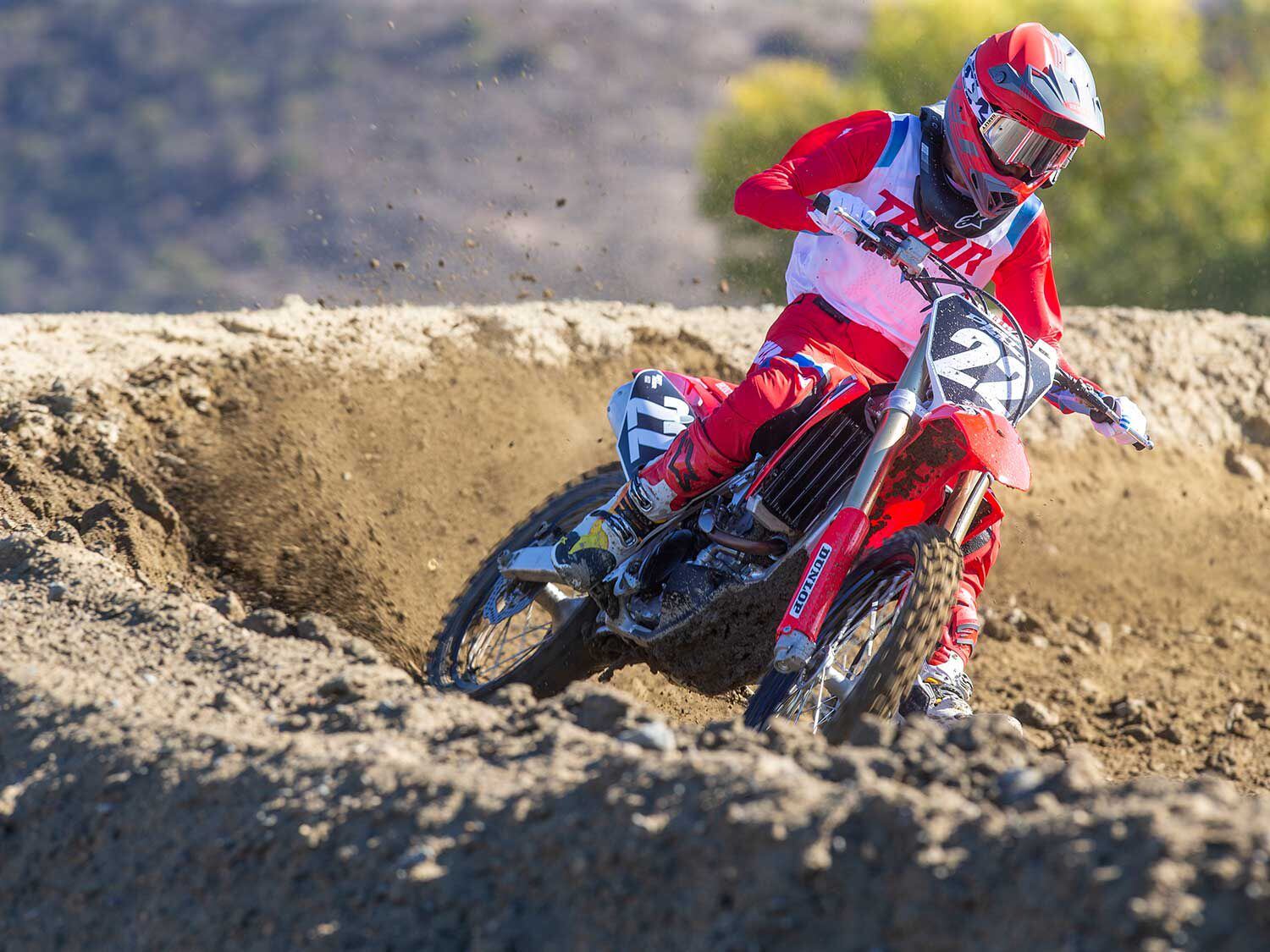
“I really enjoyed my time on the Honda CRF250R. In comparison to the last time I rode it, which was a 2019 model, it feels much more stable and confidence inspiring to charge hard, while also offering an incredibly smooth powerplant that is so good on so many levels. Seriously, it’s so easy to ride (but not slow!) at every rpm. Honda has done great work here.” <em>—Michael Gilbert</em> (Jeff Allen/) 2021 Honda CRF250R Engine
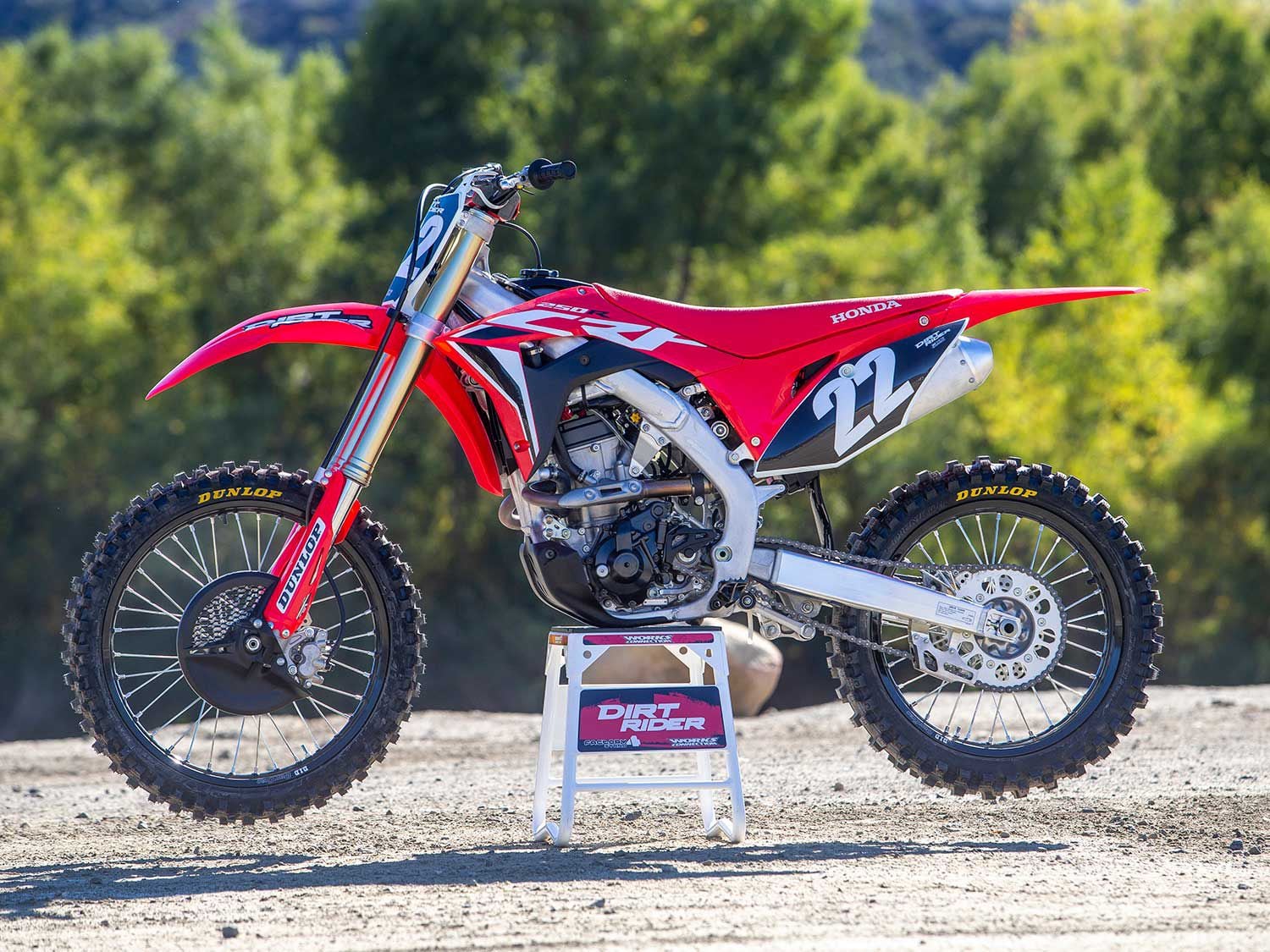
Hitting the scales at 237 pounds, the CRF250R weighs 1 pound less than the heaviest bike in this comparison test. (Jeff Allen/) After taking delivery of Honda’s 250F motocrosser, we took it to our shop, mounted a Dunlop D404 street tire on the rear wheel, and ran it on our in-house dyno. Churning out 39.0 hp at 12,900 rpm and 18.8 pound-feet of torque at 9,500 rpm, the red machine ties the Yamaha YZ250F for the least peak horsepower and ranks third in peak torque.
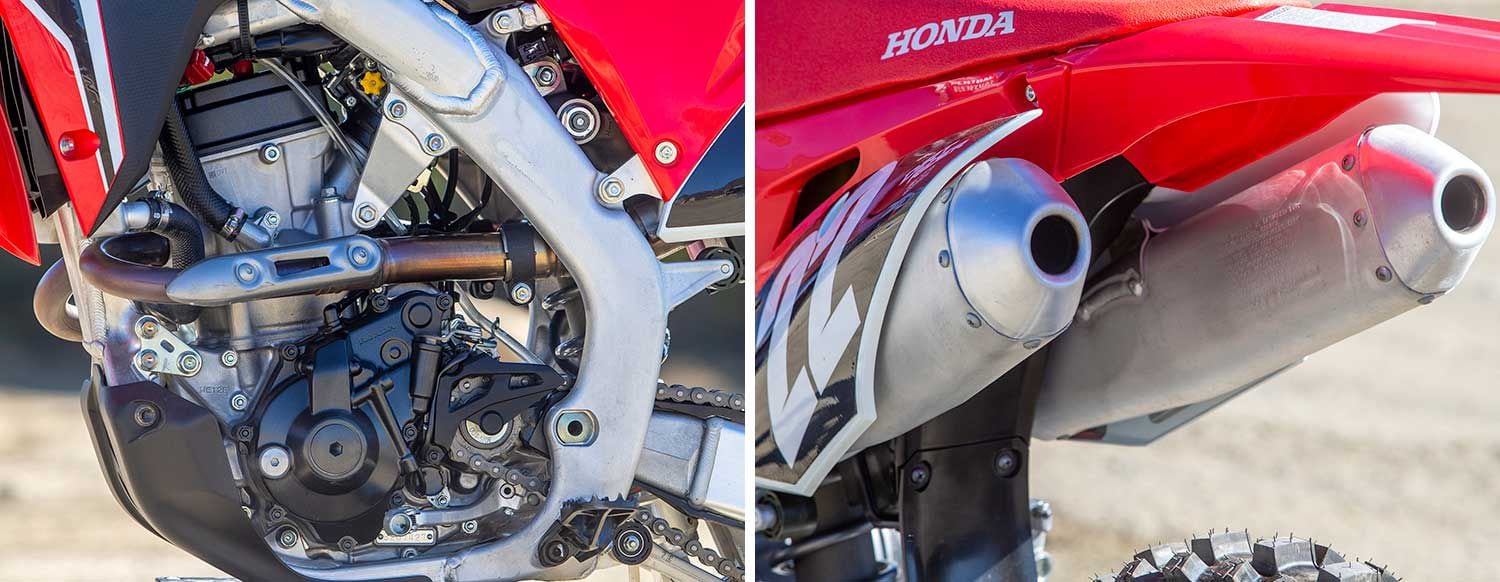
The Honda’s dual exhaust system is a contributing factor to it being one of the heavier bikes in the class. (Jeff Allen/) The Honda produces the most horsepower of all the bikes from 3,400 rpm 5,000 rpm, at which point it gets passed by the KTM 250 SX-F and Husqvarna FC 250, then gets overtaken by the YZ250F at 5,700 rpm, meets the blue bike along the horsepower curve very briefly from 7,300 to 7,500 rpm, then passes the YZ250F from that point until the two machines hit an identical peak horsepower figure of 39.0 at a similar rpm (12,900 for the CRF250R, 13,000 for the YZ250F). After matching the 250 SX-F and FC 250 from 8,200 to 8,400 rpm, the CRF250R makes the most horsepower of all the bikes from 9,700 to 10,800 rpm, at which point it gets passed by the FC 250 and later the 250 SX-F at 11,600 rpm. The Honda makes more horsepower than the Kawasaki KX250 from 3,400 to 12,000 rpm, then is passed by the green machine from that point until 14,000 rpm.
Related: Best Motocross Bike 5th Place—2021 Honda CRF450R
As far as torque, the CRF250R makes the most of all the bikes from 3,400 to 4,500 rpm, where it meets the FC 250 from that point until 5,200 rpm, where it also gets passed by the Husky and the 250 SX-F, then by the YZ250F at 5,700 rpm. It meets the blue bike at 7,300 rpm, passes it at 7,500 rpm, and produces more than the YZ250F from that point until peak. The Honda meets the Austrian duo on the torque curve from 8,000 to 8,500 rpm, then gets passed by the two until 9,600 rpm, meets them again at 10,600 rpm, then is passed by them one final time at 11,700 rpm until peak.
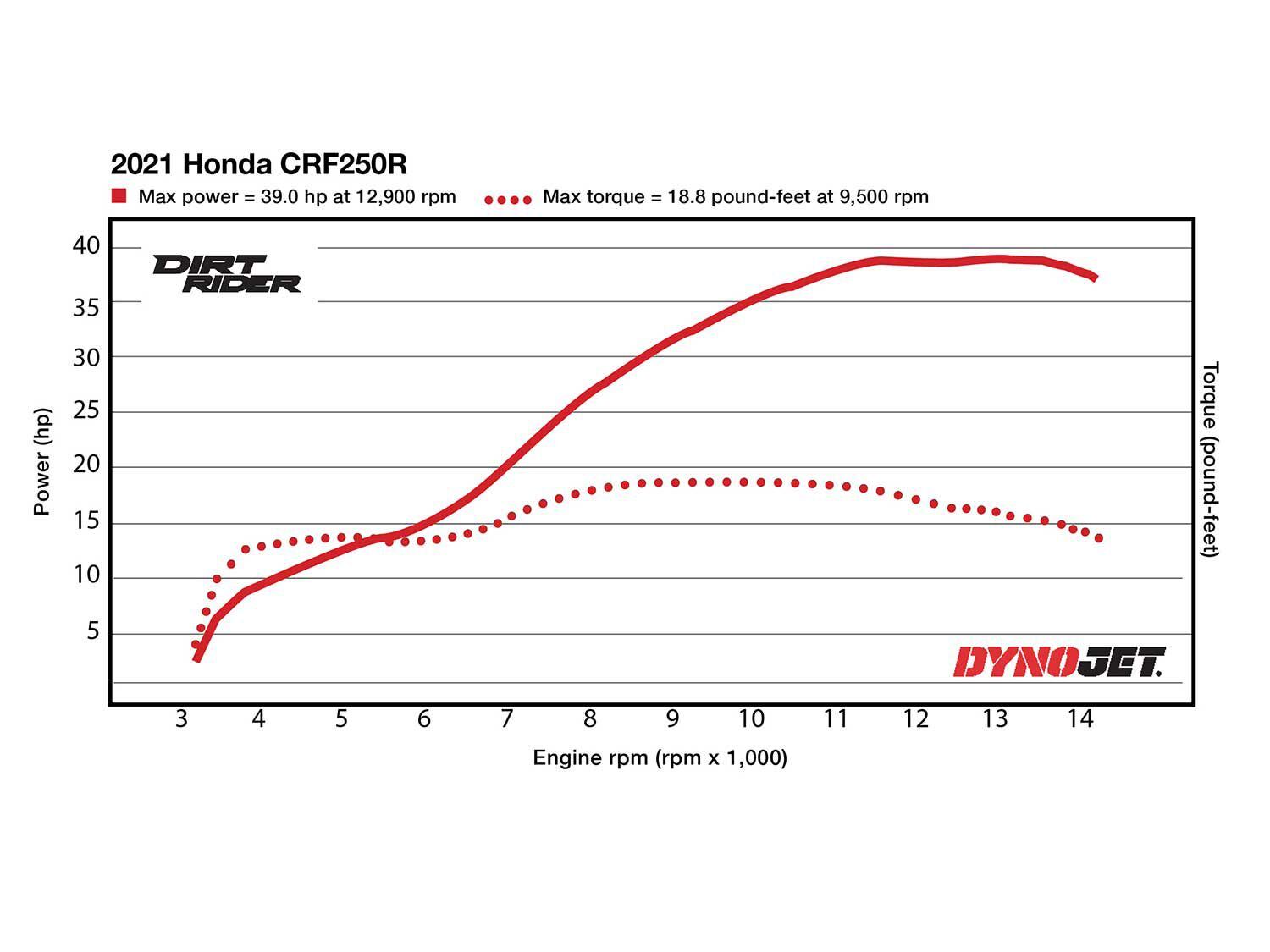
Cranking out 39.0 hp at 12,900 rpm and 18.8 pound-feet of torque at 9,500 rpm on the dyno, the CRF250R ties the Yamaha YZ250F for the least peak horsepower and ranks third in peak torque. (Michael Gilbert/) The CRF250R’s free-revving engine is one of the characteristics that make it so much fun to ride. It offers a smooth, linear powerband from bottom to top with no real hit anywhere in the rpm range, all of which contribute to the bike’s ability to get great traction. On the flip side of that, although its bottom-end and midrange power have been improved in the last few years since the latest engine design was introduced in 2018, it still needs work to be competitive with more hit and overall torque. The most effective way to ride the CRF250R is by maintaining as much momentum as possible and keeping the rpm sky high as it takes a while for the engine to get back into the meat of the power when letting it dip too low in the rpm range.
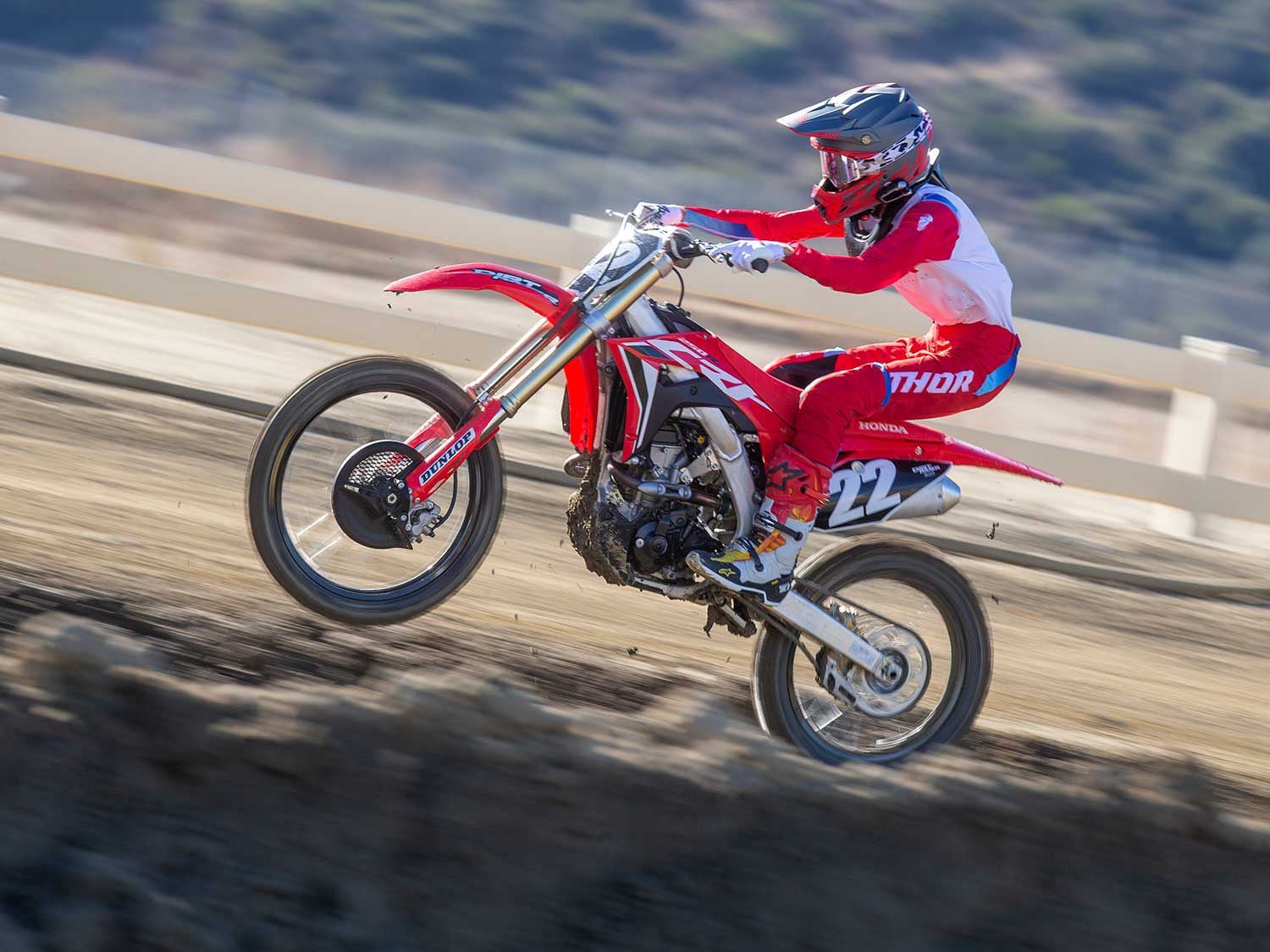
“The Honda’s bottom-end and midrange power have been improved since the latest-generation model was introduced in 2018, but it still needs work to be competitive.” <em>—Allan Brown</em> (Jeff Allen/) Although there isn’t a world of difference between the three maps toggled via the handlebar-mounted engine mode select button, test riders preferred map 3 for its increased torque feel at low rpm. Minimal engine-braking is a praiseworthy quality of Honda’s quarter-liter engine. As one of the two bikes in this comparison test equipped with a cable clutch, the CRF250R has the hardest clutch pull and its clutch fades a little too much under heavy use.
Related: 2020 Honda CRF250RX Dyno Test
2021 Honda CRF250R Suspension
Having the most performance-based suspension setup of all the bikes, the CRF250R’s Showa 49mm coil-spring fork and Showa shock offer a fair amount of comfort, and have reasonable holdup and good bottoming resistance. Both units, namely the fork, are a little firm in the initial part of the stroke, but offer a plusher feel deeper in the stroke—most notably on bigger impacts such as jump landings—and get better the faster and more aggressively you ride the bike.
2021 Honda CRF250R Chassis/Handling
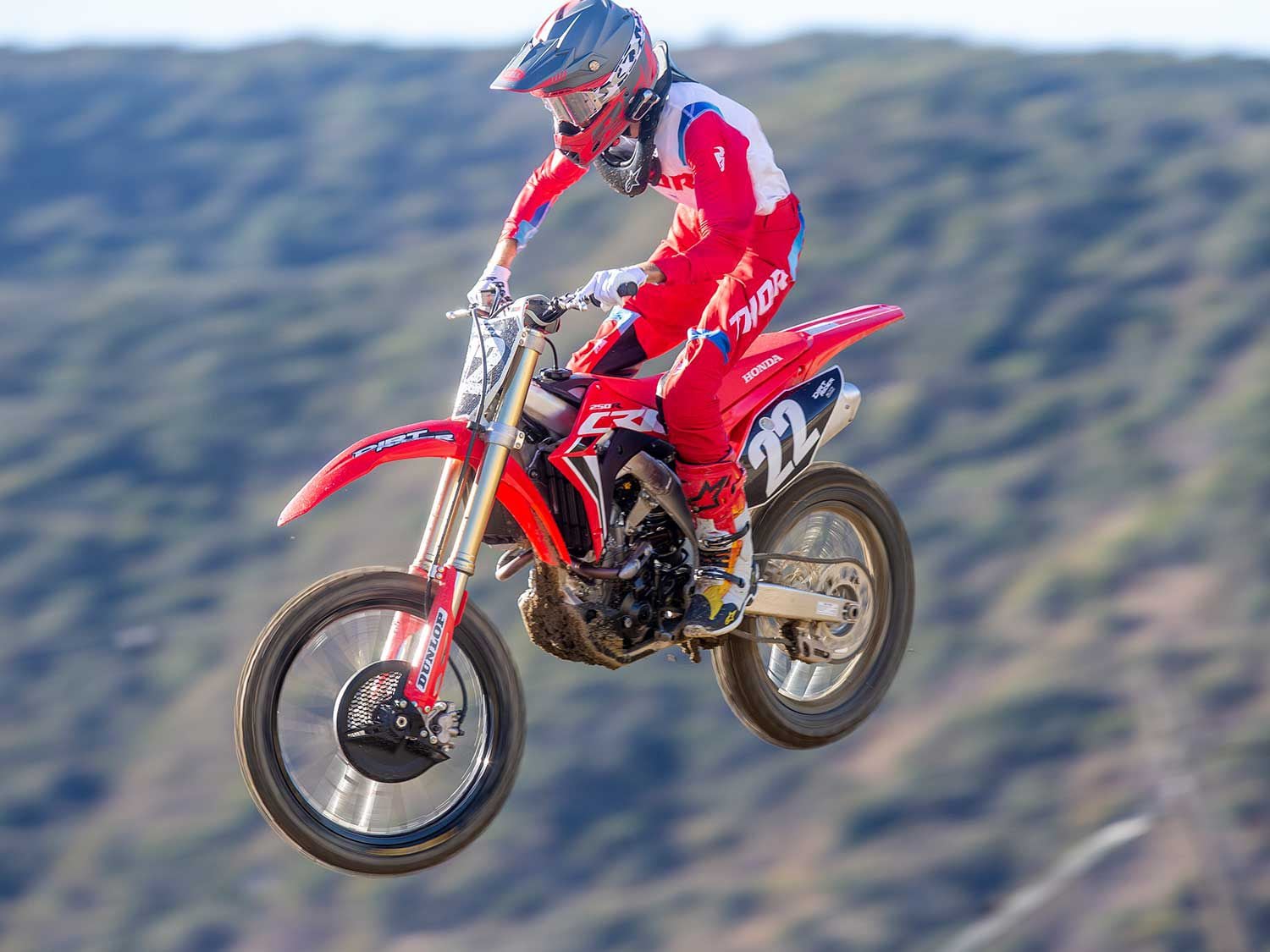
“In addition to its suspension lacking some suppleness in the initial part of the stroke, the CRF250R’s chassis has a slightly rigid feel as well—the combination of which make it fun to ride on a smooth track with lots of corners, but not as enjoyable or predictable on a rough and gnarly track like Glen Helen.” <em>—Andrew Oldar</em> (Jeff Allen/) With light and nimble handling characteristics combined with having the shortest-feeling wheelbase of all the motorcycles in this comparison test, the CRF250R is very maneuverable and the easiest bike to corner. It leans more toward turning ability than straight-line stability, which leads to it being prone to some headshake in rough terrain. The Honda gets excellent rear wheel traction despite its stink bug (high rear end) stance, which can be reduced by lowering the rear end of the bike by adding more shock sag. Contributing to the CRF250R’s sharp handling is that the chassis is a bit on the rigid side, which decreases rider comfort on bumps and becomes more noticeable as the track gets rough.
Ergonomically, the Honda is the easiest bike to hop on and get used to right away as a result of its comfort and neutrality. The rider triangle is well-proportioned and its flat seat makes it easy to move forward and back on. The only downside to the CRF’s ergonomics is that its radiator shrouds and midsection are a little wider than most of the other bikes, the latter of which is due to the dual exhaust system.
Why the 2021 Honda CRF250R Should Have Won
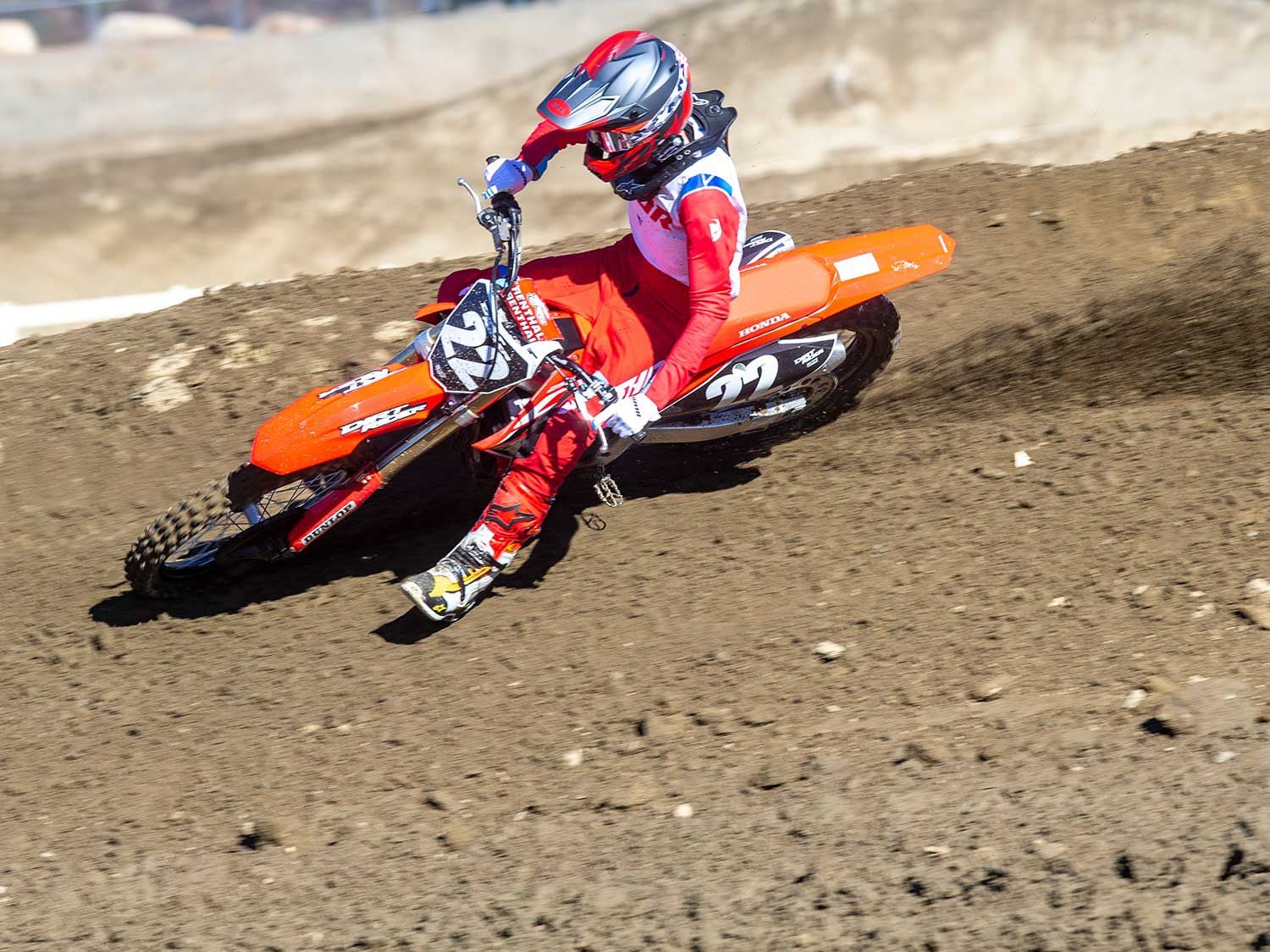
“The Honda is nimble and one of the best at carving corners. The seat has a flat feel to it, which is bittersweet as you have room to move, but the bike can get out from underneath you on hard acceleration.” <em>—Michael Wicker</em> (Jeff Allen/) Excellent cornering ability, a light and nimble feel, and great ergonomics make the CRF250R an enticing option. It’s also the least expensive bike of the five gathered here.
Why the 2021 Honda CRF250R Didn’t Win

Returning completely unchanged for 2021, the Honda CRF250R finishes one mark below its ranking in last year’s 250F Motocross Shootout. (Jeff Allen/) Having the least low-end power and torque feel throughout the rpm range, the firmest clutch pull, and being the most unstable bike in the test hold the CRF250R back from standing atop the podium in this competitive class.
Gearbox
Helmet: Bell Moto-9 Flex
Goggle: Oakley Airbrake MX
Neck Brace: Alpinestars BNS Tech-2
Jersey: Thor MX Prime Pro
Gloves: Thor MX Agile Plus
Pant: Thor MX Prime Pro
Boots: Alpinestars Tech 10
-
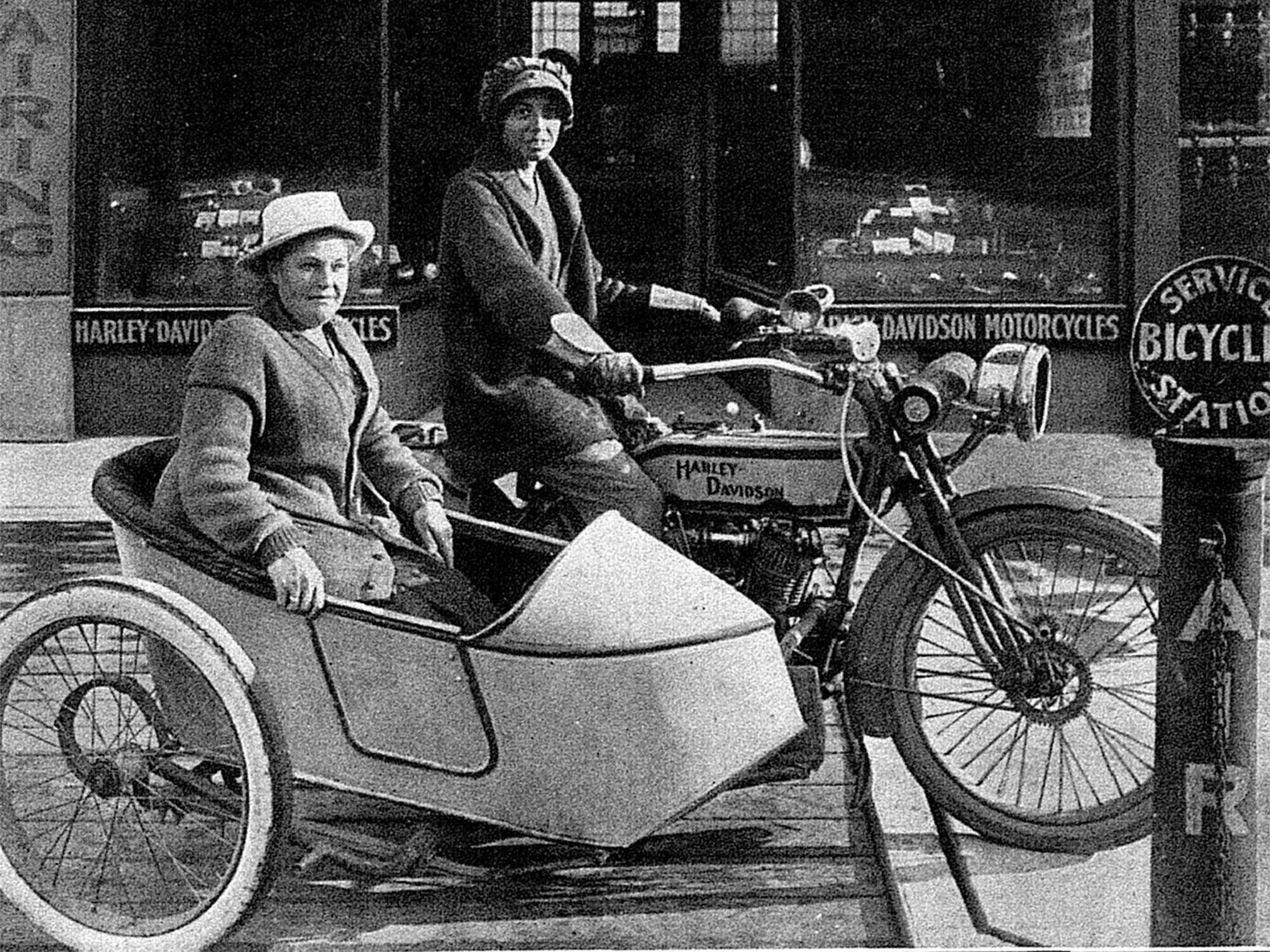
On May 2, 1915, these two women departed Brooklyn, New York, for the Panama-Pacific Exposition in San Francisco, aboard a sidecar-equipped 1915 Harley-Davidson F-11 motorcycle. (Harley-Davidson Archives/)Amid the women’s suffrage movement—five years prior to the ratification of the 19th Amendment—daughter-mother duo Effie and Avis Hotchkiss took a journey that would cement them into motorcycling’s history as the first women to take a motorcycle/sidecar across the US and back. On May 2, 1915, these two women departed Brooklyn, New York, for the Panama-Pacific Exposition in San Francisco, aboard a sidecar-equipped 1915 Harley-Davidson F-11 motorcycle. According to the 1916 Harley-Davidson Enthusiast, Effie stated, “We merely wanted to see America and considered that the three-speed Harley-Davidson for myself, and sidecar for mother and the luggage [were] best suited for the job.”
Not only were these women riding during a tumultuous social movement, but they also faced other problems on their transcontinental expedition. Effie had learned how to ride and repair her motorcycle prior to the trip, but there came a time when improvisation was needed for a roadside fix. After running out of inner-tube spares (which were a necessity considering the horrendous road conditions—the US didn’t start funding federal highway projects until 1916 and beyond), the two settled on an innovative solution for a defunct tire: a blanket. These two women had to cut down a blanket, roll it up, and stuff it into the tire to continue on their way.
When it came to environmental challenges, inclement rainy weather and 120-plus-degree temperatures did not make the underdeveloped roads any easier for the pair. Rain sometimes muddied the roads, and then scorching temperatures welcomed them in California. Harley-Davidson’s coverage reported that Effie also made use of her firearm when both a rattlesnake and coyote crossed their path.
It was in August 1915 that the team made it to the Pacific Ocean in San Francisco, three months after the start of their journey, and by October 1915, they had returned to Brooklyn, reportedly having traveled approximately 9,000 miles in total.
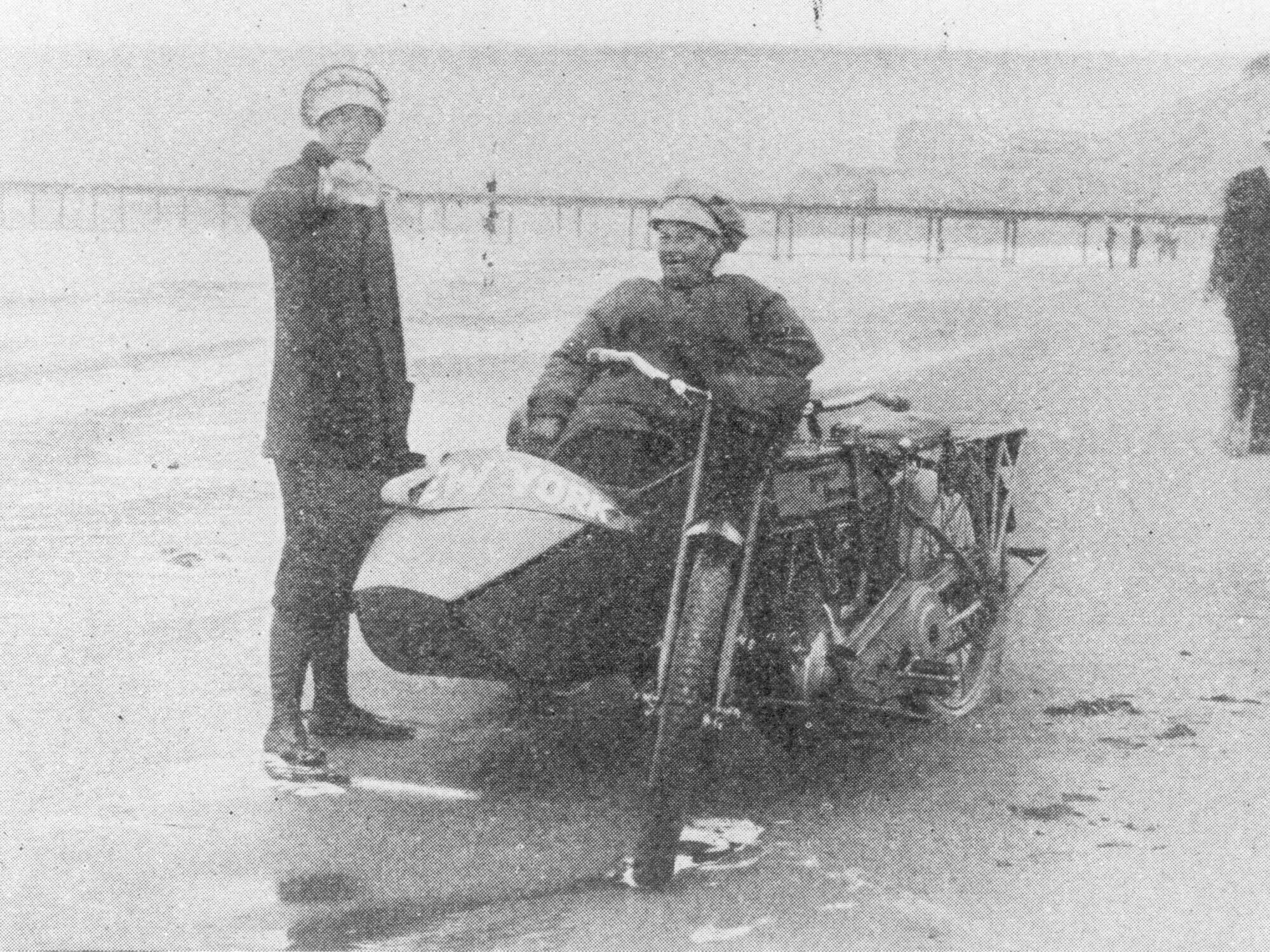
Harley-Davidson’s <em>Enthusiast</em> magazine documented the momentous accomplishment of Effie Hotchkiss pouring Atlantic Ocean water into the Pacific. (Harley-Davidson Archives/)Effie and Avis were not the only female moto-pioneers. Other inspirational women include another sidecar rider, Della Crewe, and her ride from Waco, Texas, to New York City in 1914; the Van Buren sisters, siblings who were the first women to ride their individual motorcycles across the US in 1916; and Bessie Stringfield, who in 1930 was the first African American woman to ride solo across the US. In Motorcyclist magazine (January 1935), Mrs. Rural Murray documented her own 10,000-mile Indian Scout US ride and stated, “Women and girls lived sufficiently restricted lives in those days that my motorcycle riding brought forth much comment.”
Today, female ridership continues to grow, and manufacturers have paid attention, speaking to women on their own terms more than ever. In 2018, the Motorcycle Industry Council reported that nearly 1 in 5 riders was female, compared to the 1 in 10 figures reported less than a decade prior. This data suggests that women could soon make up one-quarter of owners, the MIC says. Fellow rider and MIC director of communications Andria Yu states: “We’ve seen with our own eyes many more women riders—on the roads, on the trails, on the track, with families, at motorcycling events, forming clubs, and just being part of everyday group rides. Many people in the industry have worked some 30 years to achieve this, and now the data confirms it: More and more women are getting out there and enjoying motorcycles.”
The world has come a long way since Effie and Avis’ sidecar adventure. Their story, and those of the many other historic women who also traversed the continent on two (or three) wheels, is wonderfully uplifting. These women’s fearless, adventurous spirit challenged not only themselves and the motorcycles they rode, but also society’s stereotypes. Female riders today can be inspired by what past counterparts achieved and can further expand on the legacy that was started by some of motorcycling’s wonder women.
-
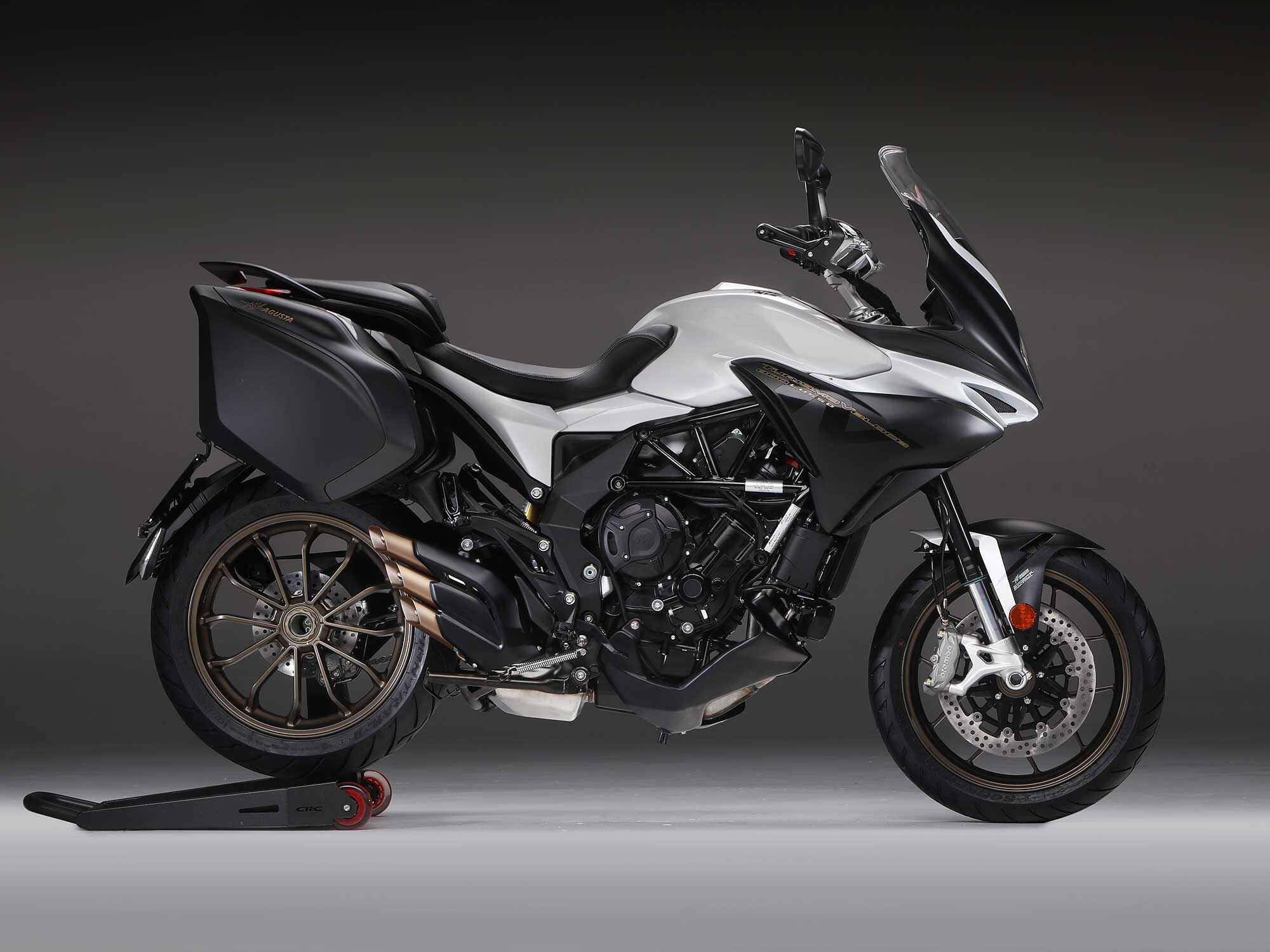
2020 MV Agusta Turismo Veloce 800 Lusso (MV Agusta/)Comfort on the commute or the tour—MV Agusta style. With four models under the Turismo Veloce 800, MV Agusta piques the interest of many a rider. Looking for a bare-bones tourer? Try the 800 Rosso. Interested in more cargo space and added sporty flare? The Lusso 800, Lusso 800 SCS, and 800 RC SCS come with panniers and increasingly more eye-catching styling. On top of sporty paint schemes, the Lusso integrates a Skyhook algorithm for its semi-active suspension, and the SCS models utilize an automatic clutch. All are powered by the 798cc inline-three engine with an array of electronics to make any techy tourer happy.
2020 MV Agusta Turismo Veloce 800 Reviews, Comparisons, And Competition
When we rode the Turismo Veloce 800 Lusso SCS in 2018, our test rider praised its auto-clutch system stating it delivers: “all the power requested but with great smoothness and without the use of the clutch lever. The system is so fast, yet so smooth, that the 440-pound Turismo Veloce accelerates from 0 to 90 mph in just over three seconds, while remaining perfectly controllable.” Combined with high-speed capability and comfortable ergonomics, the result was an impressive riding experience overall.
Wanderlusting sport-touring models are seen from many other OEMs around the world including the Yamaha Super Ténéré, Kawasaki Versys 650, Ducati Multistrada 950/S, and KTM 1290 Super Duke GT.
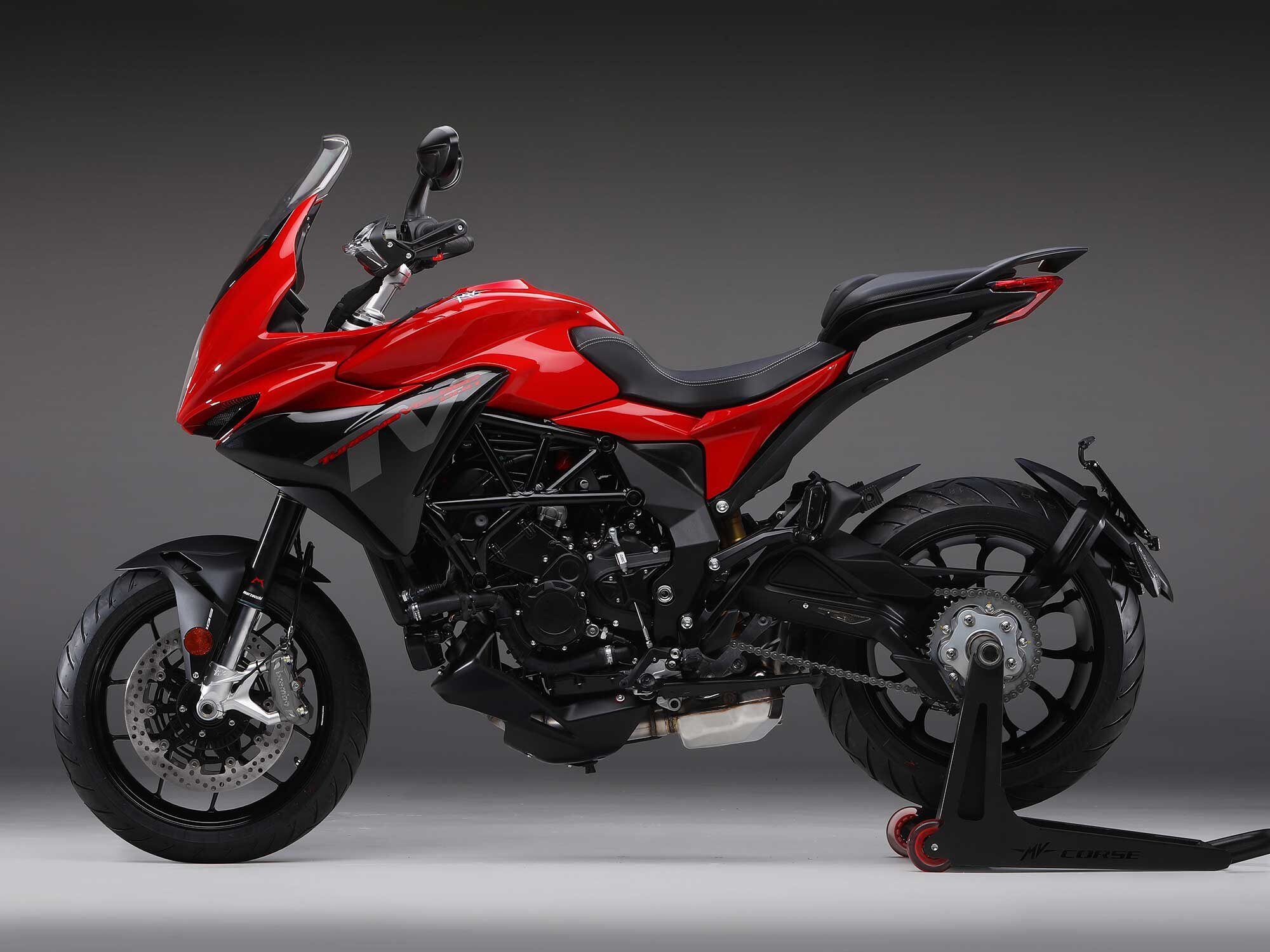
2020 MV Agusta Turismo Veloce 800 Rosso (MV Agusta/)2020 MV Agusta Turismo Veloce 800 Updates For 2020
No significant updates were made this year. The Rosso starts the MSRP at 13,990 euros (est. $17,000) with the RC SCS bookending the lineup’s pricing at 22,990 euros ($27,900).
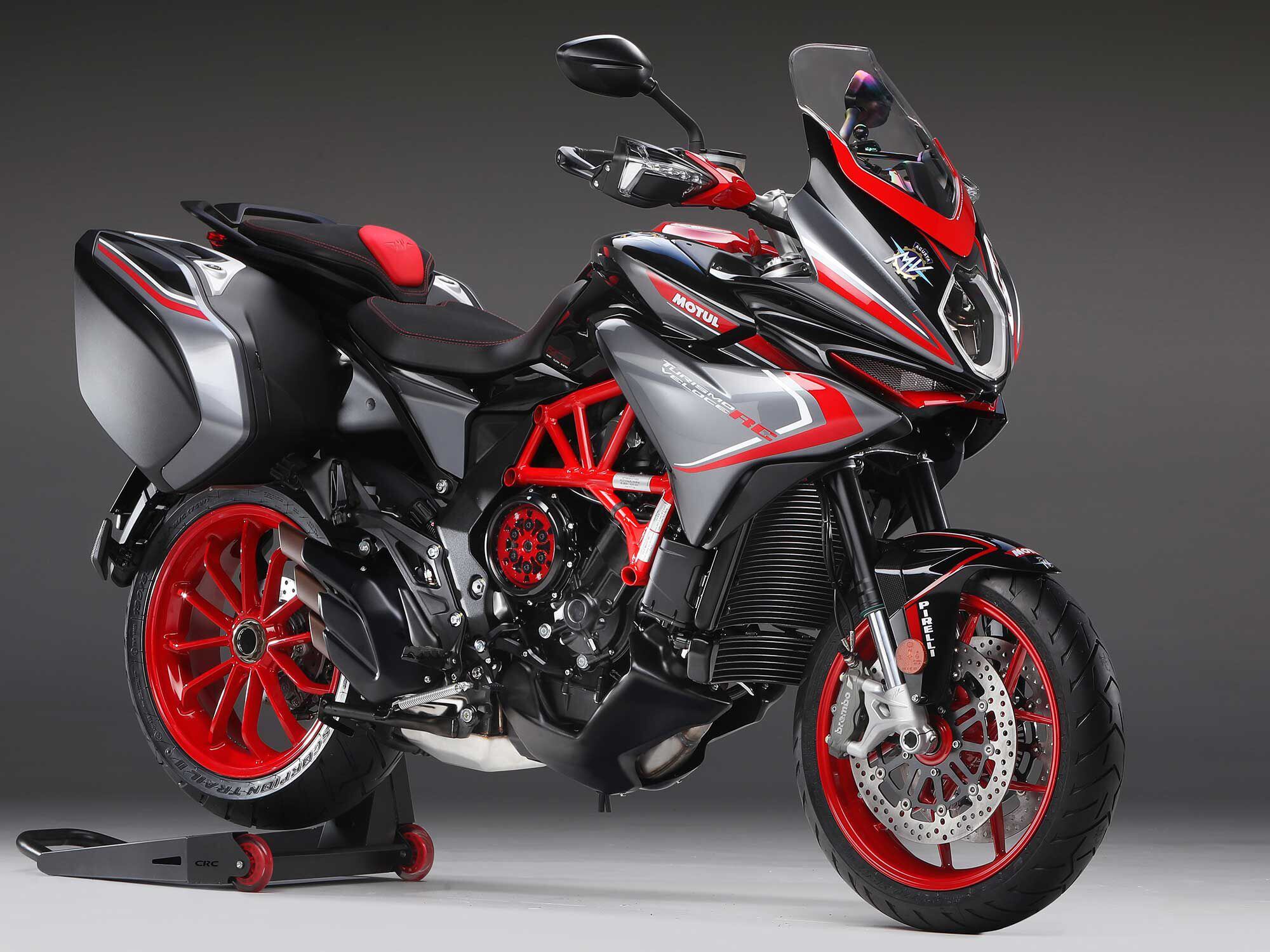
2020 MV Agusta Turismo Veloce 800 RC (MV Agusta/)2020 MV Agusta Turismo Veloce 800 Claimed Specifications
Price: 13,990 euros–22,990 euros (est. $17,000–$27,900) Engine: Liquid-cooled DOHC three-cylinder Displacement: 798cc Bore x Stroke: 79.0 x 54.3mm Horsepower: 110.0 hp @ 10,150 rpm Torque: 59.0 lb.-ft. @ 7,100 rpm Transmission: 6-speed Final Drive: Chain Seat Height: 33.5 in. Rake: N/A Trail: 4.3 in. Front Suspension: 43mm inverted fork, fully adjustable; 6.3-in. travel Rear Suspension: Fully adjustable; 6.5-in. travel Front Tire: 120/70ZR-17 Rear Tire: 190/55ZR-17 Wheelbase: 56.9 in. Fuel Capacity: 5.7 gal. Dry Weight: 421 lb. (Rosso)/439 lb. (Lusso/SCS/RC SCS)

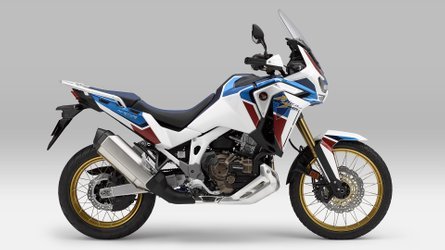
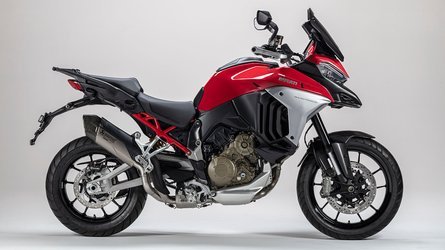
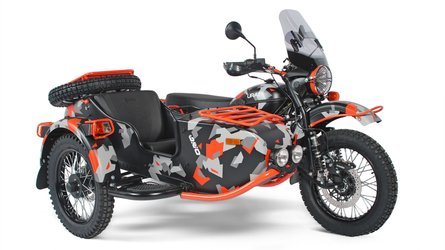
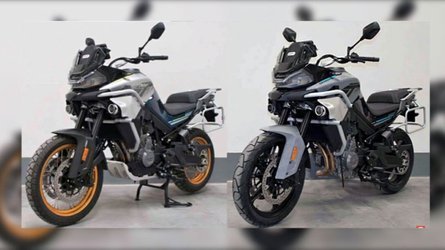
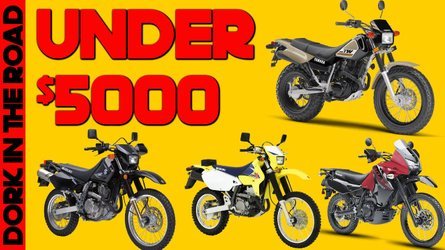
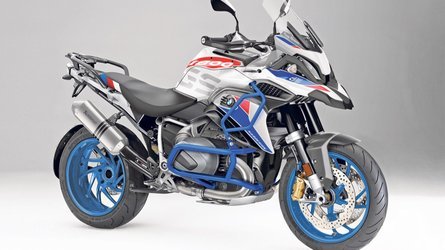
Welcome NigelF30
in Newbies
Posted
Hello NigelF30,
Welcome to The Motorbike Forum. Please feel free to browse around and get to know the others. If you have any questions please don't hesitate to ask.
Why not tell us a bit about yourself too.